

The Ultimate Eastern Europe Travel Guide (Updated 2024)
Fewer travelers head east – t hat’s why you should.
H ead East from Germany, and you’ll find that your Euros are less often accepted. English is not so widely spoken. The streets can appear grittier, with concrete apartment blocks often blocking out the sun. Poland has no Leaning Tower of Pisa, Budapest boasts no colosseum, and the rushing Danube may be less associated with romance than the sedate river Seine. But travel with your eyes open, and you’ll find just as much beauty, history, fun and adventure in the East as others do in the well trodden West.
Average wages behind the historic ‘Iron Curtain’ are still drastically low, which is rough on the locals, but can benefit the intrepid traveler: You’ll find that three course restaurant meal in Sofia, Bulgaria can cost you less than a cocktail in a Parisian bar. So pack a phrase book and dress up warm – we’re heading East!
- 1 Eastern Europe: An overview
- 2 Eastern Europe highlights: A sample itinerary
- 3 The Baltics: Estonia, Latvia, Lithuania
- 4 Poland: Gdansk, Warsaw & Krakow
- 5 Slovakia: Zdiar, The Tatra Mountains
- 6 Hungary: Budapest
- 7 Bulgaria: Sofia
- 8 How much does a trip to Eastern Europe cost?
- 9 How long do you need to explore Eastern Europe?
- 10 Getting around
- 11 Getting there
- 12 Where to stay
- 13 When to go
- 14 Food and drink
- 15 What to do
- 16 The Thrifty Gist
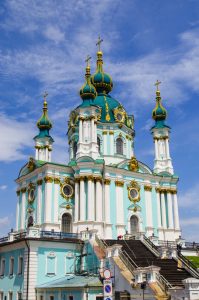
Eastern Europe: An overview
The definition of Eastern Europe can be a bit contentious. I moved to Poland a few years ago and have used this country as a base on and off ever since. While the folks back in England and Australia would tend to see Poland as ‘Eastern Europe,’ here locals often insist on ‘Central Europe,’ and looking at a map, they may have a point. However for the purposes of this article, Poland makes the cut. We’re also going to look at Czechia and Slovakia, Hungary, Romania, former Yugoslavia, the Baltics and Ukraine.
To varying degrees, all the countries described fell under the influence of the Soviet Union after the second world war. While most have now transformed into Western leaning democracies, the brutal memory of communism still rings in the ears. Poland and Hungary are sliding ominously towards the far right, and Ukraine’s recent attempt to lurch Westward politically was met with Russian tanks crossing the border into Crimea. While ‘history’ may feel like a thing of the past in London and Rome, here it is still an unfolding story.
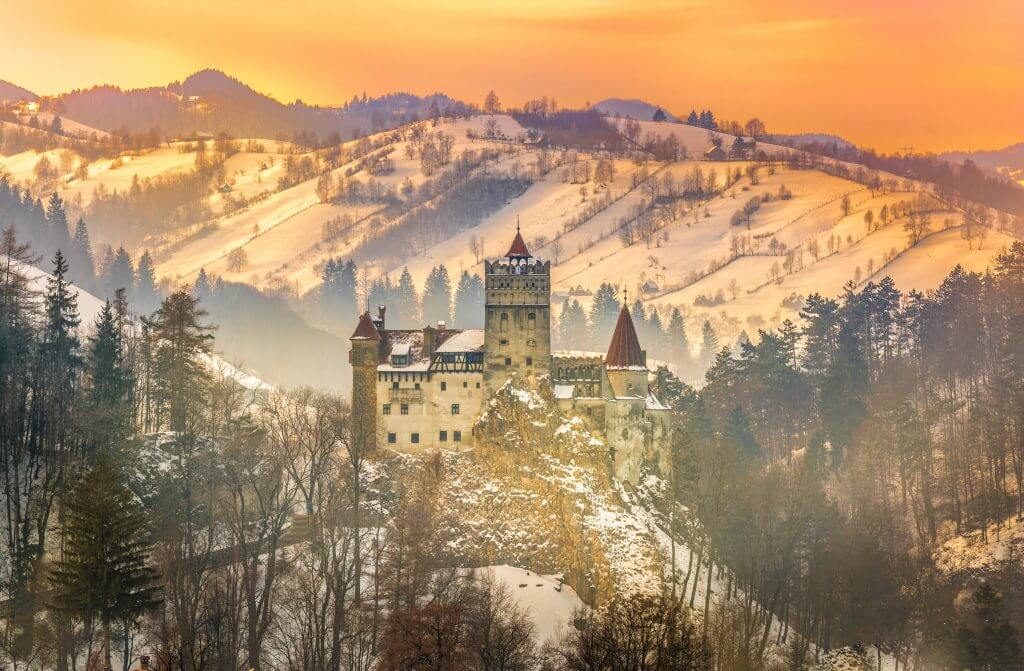
Eastern Europe highlights: A sample itinerary
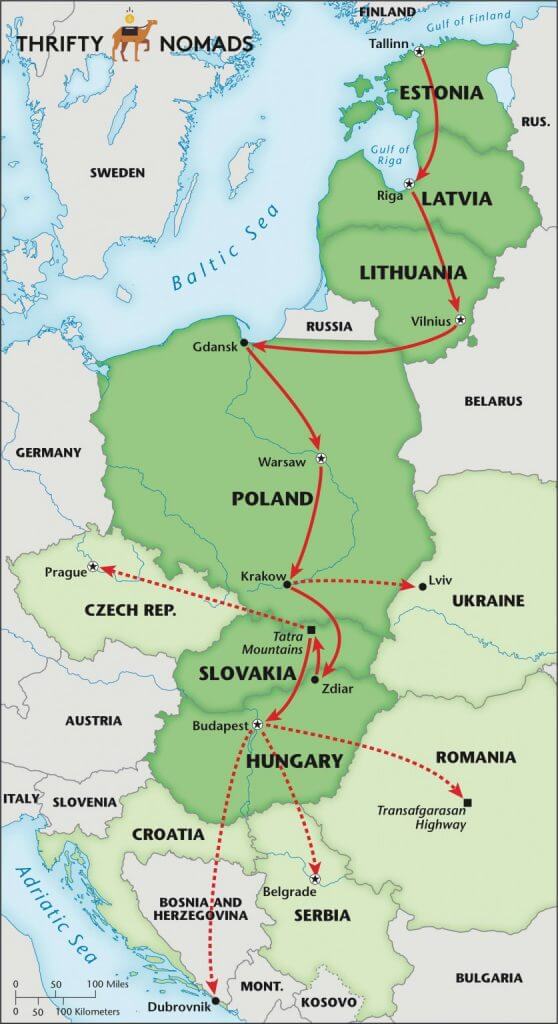
Once you spend a bit of time staring at a map, you’ll realize there’s an awful LOT of Eastern Europe. Not just in the number of countries, but in the size. Ukraine alone could comfortably fit in several Western European nations. Below I’ll sketch a rough itinerary that involves heading due south right from the Baltics into Bulgaria. You can either complete this itinerary fully (as pictured above) – requiring 5-6 weeks – or just do sections of it.
A few things to note is that while most of these countries are in both the European Union and the Schengen Visa Free Zone, there are exceptions – notably Serbia and Ukraine. So be sure to check your visa requirements before venturing out . Also, the below is one hell of a trip and designed to give you a sense of what is available, rather than a definitive prescription – you should, of course, pick and choose. If you wanna head straight to Prague to sample the famed (and cheap) Czech beer before braving the winter streets of Vilnius, then I can’t say I blame you!
The Baltics: Estonia, Latvia, Lithuania

So-named because of their position on the Baltic sea, these three small nations are often overlooked by Western travelers. But they shouldn’t be. Let’s have a look at each in turn:
Highlight : Tallinn. With a population of just 1.3 million, Estonia rapidly reinvented itself after the collapse of communism in 1989, and now is counted among one of the most technologically developed nations in the world. It offers digital citizenship to locals and expats, and is considered a digital nomad hub. If Eastern Europe in your mind is crumbling buildings and long queues for groceries, then start with Estonia to dispel those misconceptions. Get to know it like a local with a Welcome to Tallinn walking tour.
Highlight : Riga. The historic center of Riga is a Unesco world heritage site, and the beautifully preserved/restored town square is a great precursor of what you’re to expect as you explore countries like Poland and Czechia further south. Take in the most popular sights with a scenic canal boat cruise .
Highlight : Vilnius. Like Riga, the historic center of Vilnius is a Unesco World Heritage site, best explored with a local guide . Once unified with Poland, Vilnius boasts a proud literary heritage and a rich Jewish history – it was once referred to as the “Jerusalem of Lithuania.”
Poland: Gdansk, Warsaw & Krakow
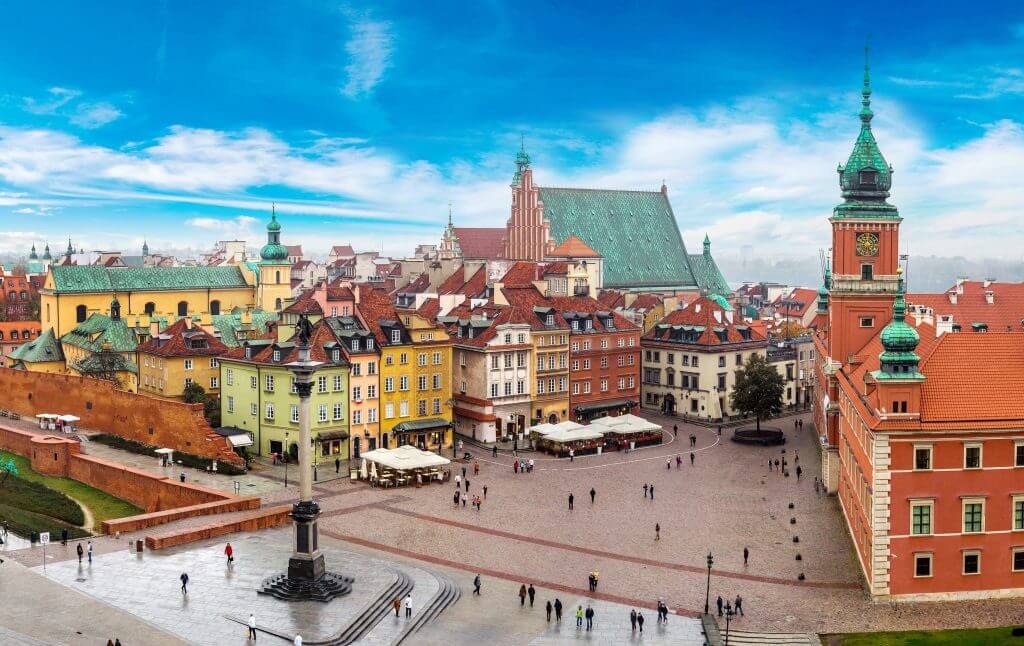
One of the strongest economies to emerge from the collapse of the Eastern Bloc, Poland’s vibrant present mingles with a history that stretches back over 1000 years, through the glory days of the Poland-Lithuania commonwealth right through to the trauma suffered at the hands of the Nazis and Soviets during the 20th century. I came to this country for a week in 2015, and ended up staying on and off for three years!
Spend your final days with the Baltic Sea at Gdansk, formerly the predominantly German free city of Danzig. Walk along the old docks, or admire the city from a historic boat cruise , and remember the Solidarity movement that, led by Lech Walesa, resulted in the overthrow of communism first in Poland and then, arguably, across the rest of Europe. One of Poland’s most picturesque cities, a late night stroll through the old town and by the riverside will be a treasured memory.
The sight of unimaginable horror during the Second World War as the Soviet Tanks waited for the Nazis to eliminate all Polish resistance before sweeping in and planting the Hammer and Sickle flag over the ruined city, Warsaw’s revival is the stuff of legend. Under the shadow of the imposing Palace of Culture, the historic old town has been painstakingly restored. Visit the POLIN Jewish Museum , and experience some of the finest dining Eastern Europe has to offer among the cities many chic restaurants (Hint: Try Cafe Kafka for lunch).
Poland’s biggest tourist draw, and for good reason. The medieval old square is haunting under the moonlight, as rows of horses and cart stand to attention, ready to take the next visitor for a ride. Outside the city you can venture deep under the earth to explore the Salt Mines, and make a painful, but necessary visit to the Auschwitz Museum .
Detour: Lviv, Ukraine
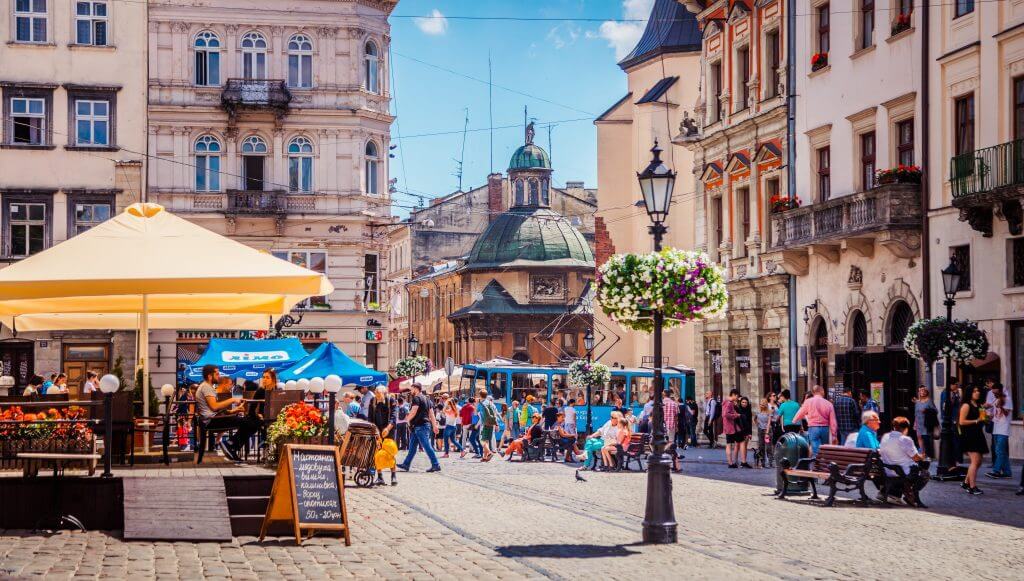
Take the night train from Krakow due east to experience something truly off the beaten track. Lviv is a great way to dip your toes into the gargantuan country of Ukraine, and give yourself a thrilling few days. Historically Polish and once known by the Hapsburg name, Lemberg, Lviv boasts one of the most adventurous nightlife scenes you’ll ever encounter. From a bar named Masoch (we’ll let you guess the theme) to multi story clubs, hidden restaurants accessible only with a password, rooftop bars where you sit in broken down cars, and ancient crypts beneath the city , a weekend in Lviv will give you enough stories to make your friends jealous for years.
Slovakia: Zdiar, The Tatra Mountains

Back on the road from Poland, we cross into Slovakia. The nation’s capital, Bratislava , is a rougher, smaller version of Prague (covered below) which rewards a fun weekend. But the Tatra mountains that stretch across the Polish border offer one of Slovakia’s most intoxicating delights.
Pro tip: Hit the Polish town of Zakopane just a few clicks from the border for a taste of the local Oscypek mountain cheese, before taking a minibus to the border, walking into Slovakia, and hopping another quick bus to Zdiar, a ski resort town. Stay in the Ginger Monkey Hostel for cosy diggs and to meet fellow travelers.
Detour: Prague, Czechia
It’s a bit out of the way and means a slight tack westward, but Prague, the dynamic capital of Czechia (formerly the Czech Republic, formerly formerly Czechoslovakia) is worth making the trip. Climb the steep hill to Prague Castle , and see the spires and winding streets of the city at your feet. Jostle with buskers on Charles Bridge before settling into one of the cities many cavernous beer halls for a sip (or several) of the unbelievably refreshing locals brews that flow like water and cost half as much!
Hungary: Budapest

Hungary’s mighty capital is growing in stature as a major Eastern European destination, rivaling Prague and Krakow. Divided into two halves, hilly historical Buda and flat, gritty Pest, the glory of the Austro-Hungarian empire, the horrors of the Arrow Cross Fascist regime and communist oppression, and the contemporary hipster revival of the city can all be felt after just a few hours in town. Climb up to the exquisite Royal Palace, drink the night away in a ruin bar (start with the gigantic Szimpla), take in the stunning architecture from a river cruise , soothe your soul in a thermal bath, and burn your taste buds with spicy paprika filled Goulash. For more tips on activities to do in Budapest, check our other guide here .
From here to Sofia you’ll most likely have to choose one of the below routes, which, like different prongs on a fork, all forge their own path to Bulgaria.
Option #1: Serbia: Belgrade
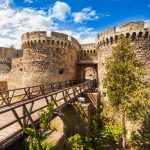
Step out of the European Union and into a scarier, starker version of history in Belgrade. The winding, cobbled streets are beautiful, the old ladies haggle over the price of cucumbers on the street markets, and the clubs rage until dawn. But as with much of Europe, there’s a darker side to history here. You’ll see at the ancient fortifications, in the city’s museums, and in the bullet holes still visible on some older buildings. Take in the top attractions from a sightseeing cruise .
Option #2: Romania: Transfagarasan Highway

Bucharest is a rough and ready capital that will still provide plenty to distract and entertain you. But for me, Romania is a country of rolling green hills, famers on horseback, dark grey clouds and mercifully warm temperatures. Considered one of the best road trips in the world, rent a car and take it carefully over the Transafgarasan Highway (or sit back and relax with a day tour ) for incredible views and, of course, a climb up the steep stairs to Vlad the Impaler’s vertiginous castle (Bran Castle).
Option #3: Croatia: Dubrovnik
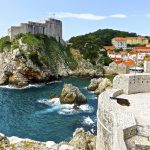
Go ahead, be a tourist, give yourself a treat. Famous as the filming location for much of Game of Thrones (with you can visit on dedicated tours ), this seaside city will be sure to rack up the Instagram likes. Don’t want to get caught up in the tourist crowd? Croatia’s warm and picturesque Mediterranean coast can also be experienced from cities like Split, which also boast fresh seafood and, of course, cheap local beer sold in gigantic plastic bottles. Živjeli!
Bulgaria: Sofia
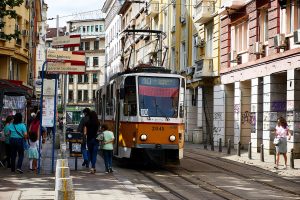
How much does a trip to Eastern Europe cost?
The low cost of living in Eastern Europe constantly amazes me. To take a sample at random, I am writing this article from a cafe in Poznan, Poland. A large local craft beer would cost $2 USD, a latte about the same, and a delicious, high quality hot meal about $6-8. This is typical of Eastern Europe, with countries like Ukraine, Serbia and Bulgaria offering even cheaper rates. The major tourist towns like Prague and Budapest can sting you on accomodation if you don’t book in advance, and always be wary of nightclubs and ‘bars of ill repute’ where scams are known.
Traveling Eastern Europe can realistically be done for as little as $30-50 USD / day , including accomodation, food, beer, transport and attractions.
How long do you need to explore Eastern Europe?
The above itinerary – done properly – would require about 5-6 weeks, but you can of course take as long or as little as you like. Distances can be large and outdated transport infrastructure can mean uncomfortable journeys (hold tight to your wallet on the cheap but dusty overnight train from Belgrade to Budapest. When I did this journey in 2015, I paid just 10 Euro for the ticket including sleeper berth!).

Getting around
While rail passes are highly recommended for travel in Western Europe, in the East they are less necessary. Train travel – even when booked on the day – is outrageously cheap, with $20 being more than enough for almost any internal journey you’re likely to make. For international journeys, consider overnight buses and trains to save on a night’s accommodation. Book in advance if going between major cities – for example, the overnight train from Warsaw to Budapest can get expensive (100 euro +) if booked at the last minute, but if booked in advance, will be a mere fraction of this.
- For trains, try Bahn.de
- For buses, try FlixBus
- For flights, try WizzAir
Getting there
Most cities listed above can easily be accessed with cheap Ryanair flights from London and across Western Europe. Check Skyscanner and select “Whole Month” to visualize the cheapest dates. If traveling from afar, cities like Berlin and Munich in Germany can make convenient hubs. I’ve also found Prague to be a surprisingly affordable final destination when flying all the way from Australia / New Zealand. If coming from Scandinavia, Gdansk in Poland can sometimes be reached for as little as 15 euro.
Where to stay
Cities like Krakow and Budapest boast a thriving youth hostel culture, ideal if you want to meet other travelers and find drinking buddies for the evening. In Budapest I give my warmest recommendation to Carpe Noctem – I practically moved in. Elsewhere, Booking.com can offer cheap short term rentals on apartments, while AirBNB is a slightly more expensive, but more comfortable option for doing the same. Although you may not even consider doing such a thing in Paris or London, don’t be afraid to be bold and check TripAdvisor for a nice hotel – I’ve found 4 or 5 star luxury for under $50 a night across Eastern Europe.
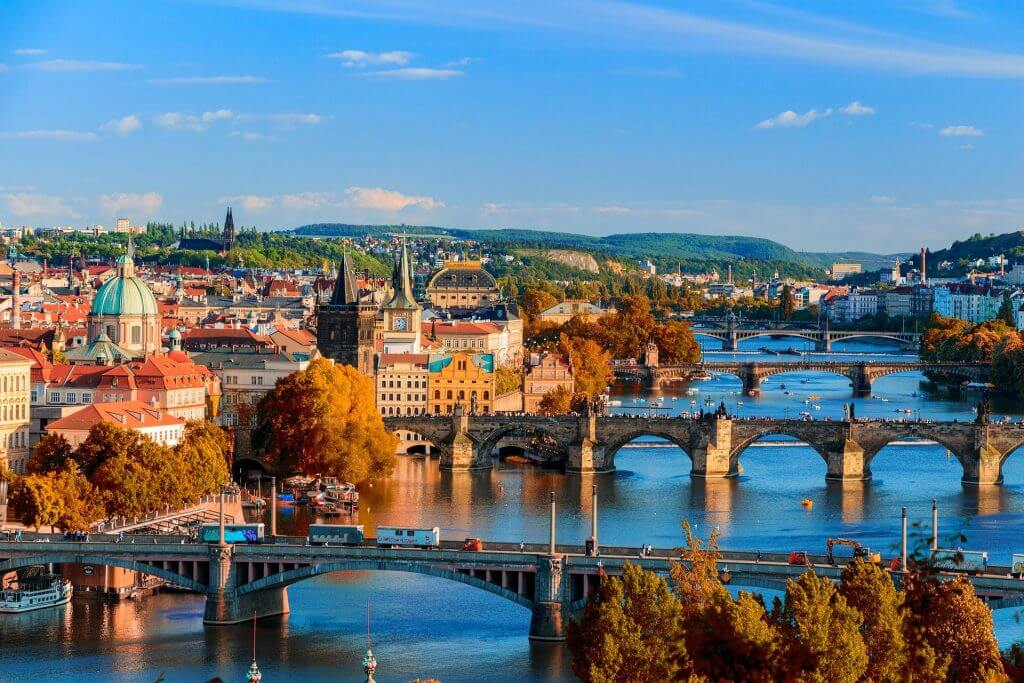
It’s no secret: Eastern Europe gets cold, with subzero temperatures not unheard of from December through to March. This has its compensations – nothing is more beautiful than a medieval town center blanketed in white snow. Christmas means Christmas markets and hot spiced wine served out of large cauldrons, but it’s also when everyone has gone home with their families. My favorite time to travel is September, when it’s still hot, but the main tourist crowds have wrapped up their summer holidays, leaving the streets clear to explore.
Food and drink
Let’s start with drink! Beer is literally cheaper than bottled water in most countries described above. Look for the local brews, but be careful – in this part of the world, beer packs a punch, and 9% alcohol volume brews are not uncommon. Vodka is available in millions of different flavors – try Zubrowka in Poland, and local fruit spirits such as the potent Sliwowica (plum spirit) are easy to find. In Hungary, try sweet and rich Tokaj wine. Eastern European cuisine tends to be heavy – food to soak up the vodka and prepare you for a long winter. Pierogi (polish dumplings) make for a hearty meal, as does Hungary’s goulash, Prague’s many manifestations of pork, and Lithuania’s rich, dark rye bread. Look out for Milk Bars in Poland for cheap meals shoulder to shoulder with students and vagabonds. Supermarket chains like Lidl and Tesco can provide you cheap groceries basically everywhere you will go.

Every city you visit will have a museum testifying to ancient glories and more recent horrors. Budapest boasts thermal baths, Poland has its salt mines, Slovakia has mountains and Prague – well, Prague has beer and a lot more besides, and pretty much everywhere has a fair share of castles! But the best thing to do is simply to wander, walk the cobbled streets with your eyes open, look at the people, and try and learn a few snatches of the local languages. Walking tours are available in most major cities – see Viator for what’s available in your destination.
The Thrifty Gist
- Eastern Europe can be challenging, but it boasts a wealth of attractions and an unbelievably low cost of living, making it a dream destination for the adventurous budget traveler
- Highlights include the Baltic countries, Poland, Lviv, The Tatras Mountains, Prague, Budapest, Romania, Belgrade, Dubrovnik and Sofia
- Travel by overnight train or bus to save on a night’s accommodation. With the exception of a few major routes, fares are constantly low
- Germany next door can serve as an easy hub to access Eastern Europe, but cheap flights with companies like WizzAir can get you pretty much anywhere
- Stay in hostels to meet travelers and for a party vibe, use Booking.com and AirBNB for comfortable private accommodation, and search TripAdvisor for great deals of high quality hotels
- December is beautiful, but cold, and with a lot of places likely to be closed. September offers warm weather, but not too many tourists
- Drink beer, brave the local flavored vodka, and eat the hearty rich meals with a focus on meat, potatoes and bread. Yes, you’ll likely come home a few kilos heavier!
- Eastern Europe is rich in history and has seen the conflicts of several empires. Enjoy the historic old town squares, castles, and museums, but mostly just walk the fascinating streets and listen to the stories of the people you encounter.
I like that you talked about museums in every city where we will see the ancient glories and horrors of their history. I would love to visit museums when my husband and I book a European travel tour for next year. It will be for my birthday to finally push through with my dream trip, and I can definitely enjoy the visit if I can learn about their history as well.
I love how detailed your blog is. Very helpful and informative. 🙂 So, I recently visited Krakow and was blown away by how charming and picturesque it is. The old town is just so charming and there’s a really lively nightlife scene. Overall, I had a really amazing time in Krakow and would definitely recommend it to others.
Thanks Jane—couldn’t agree more, Krakow is amazing!
“Sofia is most notable for its clash of influences, the Cyrillic writing system and Orthodox religion from Russia…” That is WRONG. Bulgaria created the Cyrillic writing system and Russia adopted it… Please fix that 🙂
Leave a Reply Cancel reply
Your email address will not be published. Required fields are marked *

The Ultimate 2-Week Eastern Europe Itinerary: 6 Great Routes
Last Updated on January 3, 2024
by Maggie Turansky
Disclaimer: This article contains affiliate links. That means if you click a link and make a purchase, we may make a small commission. As an Amazon Associate we earn from qualifying purchases. For more information, see our privacy policy.

Planning the perfect Eastern Europe itinerary when you only have a finite number of days or weeks to play around with can be a head-spinning and frustrating undertaking. It’s only until you sit down and pull out a map (or, more realistically, open up Google Maps) that you realise how vast this region of the continent is and how much there really is to see.
Do you want to head to the Central European favourites like Budapest or Prague ? Do you venture up north and explore the charms of the Baltic states? Or do you head southeast and devote your time to one country like Romania or Bulgaria?
So if you’re in the process of planning a trip to Eastern Europe and are a bit stuck on what the optimal route is for you, then look no further.
Table of Contents
Which countries are in Eastern Europe?
For those who haven’t travelled extensively around the region, it may not seem like the term “Eastern Europe” is even that loaded, however, you will soon learn that it is not so much a term that defines a region and can be far more political and cultural than meets the eyes.
Many people will jump to thinking that the term “Eastern Europe” refers to the Warsaw Pact countries or the countries that were under Communist rule from WWII up until the early 1990s. This typically includes the countries in former Yugoslavia and anything east of Germany or Austria (excluding Greece and Turkey).
Where things can get complicated is that many residents of certain countries don’t like to be referred to as Eastern European. For instance, the countries of Poland, Czech Republic, Hungary, Slovakia and Slovenia often would prefer to be referred to as Central Europe – and geographically, that is where they are.
And the countries of Croatia, Serbia, Bosnia & Herzegovina, Montenegro, Albania, North Macedonia and Bulgaria are best referred to as the Balkans. And Estonia, Latvia and Lithuania? They’re the Baltics.

So which countries are actually in Eastern Europe? It’s still complicated, however, you’re generally safe to assume that countries like Romania, Ukraine, Moldova, Belarus and Russia are all in Eastern Europe.
I would also go so far as to consider the countries of Georgia, Armenia and even Azerbaijan all the way in the South Caucasus as a part of Eastern Europe. I say this because, although geographically they may rest in what is technically Asia, culturally they are far more European.
So, as you can see, Eastern Europe is generally quite a vague term that encompasses a number of vastly different regions and nations. However, it is also one of our absolute favourite regions to travel in the entire world and visiting anywhere in this vast corner of Europe is sure to spark your wanderlust.

How to get around Eastern Europe
Depending on which area of Eastern Europe you intend to travel to, the best way to get around will vary. However, what’s good is that, especially if you only plan to visit major cities, it’s very easy to get around most areas relying only on the train or bus. Just what form of public transit will depend on where you are.
If you plan to do the classic “Eastern Europe” itinerary (ie Central Europe) and hit top cities like Budapest, Prague, or Krakow, then you can easily get around while relying on the train.
Train connections in Central Europe are frequent, reliable and relatively affordable — especially if booked in advance through platforms like Omio. You can click here to view schedules.
It can be popular to plan to use night trains to save on accommodation or time in transit, but keep in mind that these can book out quite early in high seasons and they can be quite expensive, depending on where you’d like to go.
If you want to save some money, you will find that the bus is a cheaper option and offers just as many routes. Companies like FlixBus offer numerous routes between cities at affordable price and buses are generally fairly comfortable and reliable. There are also overnight bus routes, but this is quite a tiring and uncomfortable way to travel.
If you happen to be travelling in the Balkans or Baltics, you are going to have to forget about any visions you had about taking the train. Rail routes are few and far between and where they may exist, they will be painfully slow, exceptionally outdated, and rather uncomfortable.
The vast majority of the Balkans and Baltics aren’t actually on a rail network, anyhow, so your best bet is going to be taking the bus if you’re relying on public transit.

In the Baltics, there is a wonderful bus company called Lux Express that is arguably going to be the nicest bus that you will ever encounter. They are comfortable, have wifi and entertainment systems and serve most major routes throughout the Baltics and even into Poland and Russia. You can book bus tickets for the Baltics here.
In the Balkans, FlixBus operates in some countries, but there are far more bus companies available and finding out the schedules can be tricky depending on where you are. Your best bet is to check out the bus timetables at the station when you arrive so you have an idea because information on the internet may be incomplete or incorrect.
If you don’t want to rely on public transit, then you can always rent a car when travelling in Eastern Europe. This will allow you to have more flexibility with your itinerary and not be at the mercy of erratic timetables and long bus or train journeys.
However, please make sure to double-check that the rental company will allow you to cross borders and that the car is provided with the adequate insurance in order to do this.
The rental company should handle this and it isn’t the consumer’s responsibility, but do make sure that you are properly equipped before starting your Eastern Europe travel itinerary.
If you want to rent a car while travelling in Eastern Europe, we recommend using RentalCars.com to find the best deals on a car hire.
Finally, it’s worth making sure you have travel insurance for your Eastern Europe trip. If you’re travelling on a budget and are only after travel medical insurance it’s worth checking out SafetyWing’s nomad insurance.
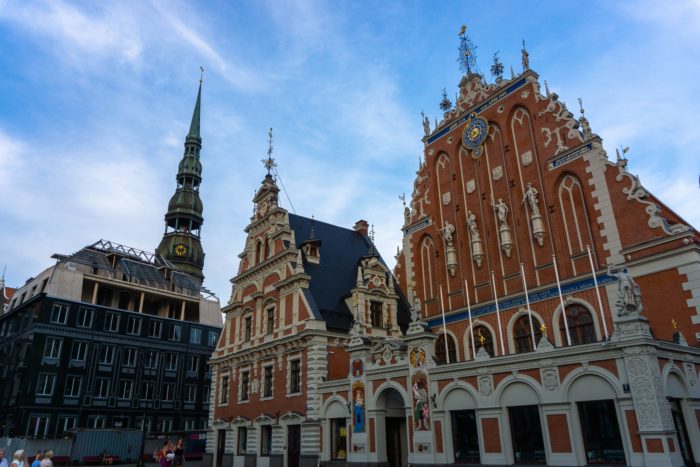
How long to spend in Eastern Europe
So how many days or weeks should you dedicate to your itinerary through Eastern Europe? With the region encompassing so many countries and sub-regions, it can feel like there is never enough time to see everything and deciding the ideal trip length can seem incredibly overwhelming.
The first thing that you need to understand is that it is impossible to see everything in a limited period of time and if you try to cram in too much, you are going to spend the vast majority of your time in transit between cities and destinations rather than actually enjoying and exploring the destination itself.
We always encourage slow travel and that doesn’t necessarily mean that you need to take numerous weeks off in order to travel to Eastern Europe, it just means that you should absolutely spend a bit longer in each destination that you visit. So, if you only have time for a one-week itinerary, then we would suggest limiting your trip to just two cities.

If you want to see a good portion of the region you’ve decided to visit while still not taking a tonne of time off work or away from home, then we think that planning for two weeks is the ideal amount of time. Within a fortnight, you can get a good taste of whichever region you plan to visit and really experience some diverse and dynamic destinations.
Obviously, if you have longer and are looking to spend 3 weeks in Eastern Europe, then you can very much find a multitude of ways that you could fill your time.
3 weeks really is optimal to begin to dig deeper and get a bit off the beaten path and to see some cities and towns away from the major capitals. This will give you a broader idea of the general culture of whichever country or region you are visiting and help you gain a better understanding of the area.
There are always options if you have longer than 2 or 3 weeks in Eastern Europe as there are a myriad of regions and countries that you could visit.
You also could take the opportunity to base yourself for a longer period of time in a particular city and explore more of the surrounding area via day trips and even venture off the beaten tourist path in the city itself.
The possibilities are endless in Eastern Europe no matter how long you’re able to spend, just make sure that you can do each destination justice by spending enough time there.
For the purposes of this article, all of these itineraries are meant to be for about 2 weeks. If you’re looking for a one-week or 10-day Eastern Europe itinerary, then just take away one or two destinations mentioned as they interest you. Again, it’s best to keep in mind that it is impossible to pack everything in just a short time period.
Second, as mentioned earlier, there are lots of different regions that encompass greater Eastern Europe and we’ve put together itineraries for each of these.
If you want more information once you’ve decided where it is that you want to in Eastern Europe, we have dedicated itineraries for Central Europe , the Balkans , the Baltics , and even the Caucasus if you are feeling intrepid.

Central Europe Routes
Central Europe is what most people are looking for when they think to plan an itinerary for Eastern Europe. Filled with some of the most beautiful cities in all of Europe and packed with interesting culture and fascinating history, this region is sure to delight all those who venture there.
Classic Central Europe Route
This two-week itinerary will take you past some of the most popular and beautiful places to visit in what many believe to be “Eastern Europe”. This route starts in Budapest and ends in Prague, but you can easily reverse it if it makes the most sense to you.
Budapest – The capital of Hungary is an excellent place to start any trip to Eastern Europe. It is something of the gateway to Eastern Europe and a great jumping-off point to visiting Central Europe, the Balkans, or Romania.
Budapest is one of the most beautiful and dynamic cities in all of Europe and you’re sure to fall in love with it instantly with it’s incredibly picturesque skyline set along the mighty Danube River. Plan to spend about 4-5 days in Budapest to really do the city justice before moving onto your next destination.
Vienna – Though not technically Eastern Europe, Vienna is an essential addition to an itinerary of this sort. Austria’s grand capital is a lovely place to explore for about 3-4 days and it is highly recommended that you take a day trip to the nearby capital of Slovakia, Bratislava .
Brno/Olomouc – Spend 2 days exploring one of Czechia’s other cities and while Olomouc is a personal favourite of ours, Brno is a more direct stop and also offers another great perspective of the Czech Republic beyond the capital city.
Prague – No itinerary of this sort would be complete without including the Czech Republic’s inimitable capital of Prague . The city is very popular, however, there are lots of places to visit within it that are off the beaten path. Plan to spend about 3-4 days in the city itself and then give yourself more time to go on a day trip or two.
Have More Time? If you have a bit more time to dedicate to this itinerary, please consider exploring more the Czech Republic . There is so much to see in this incredible country beyond Prague – and very few international visitors tend to dig deeper and explore the country.
If you want to get out in nature and see some of the countryside, then head to the Jeseniky Mountains or Bohemian Switzerland National Park, or if you want to experience some more Czech cities, it can be worth it to head to Brno or even industrial Ostrava . For smaller towns and cities, head to Karlovy Vary , Cesky Krumlov or Pilsen.

Alternative Central European Route
If you’re still after a Central European route but want to visit more countries, consider spending a bit of time in Poland rather than Czechia.
Budapest – Again, start your itinerary in Budapest and plan to spend 4 days exploring this incredibly beautiful city. There is so much to see and do in Budapest that you’re sure not to be bored.
Vienna – From Budapest, head onto Vienna for 3 days and make sure to do a day trip to Bratislava in order to see another amazing Central European city.
Prague – Plan to spend at least 3 nights and two full days exploring Prague, taking in the city’s top sites and learning about its vast and complex history. Also, Prague has some of the best beer in the world at some incredibly affordable prices!
Wroclaw – From Prague, head over to spend a day in the charming city of Wroclaw , Poland. This lesser-visited city is dotted with interesting sites to see and full of endearing quirks — including a myriad of little dwarf statues that can be spotted throughout the city!
Krakow – End your itinerary in Poland’s second-largest city of Krakow . This city is filled with history, both heartbreaking and fascinating, and it is worth taking the time to explore that along with it’s beautiful Old Town.
It is also possible to take a day trip to the Wieliczka Salt Mine or to Auschwitz-Birkenau Concentration Camp Museum. You could even take a day trip to the Tatra Mountains, if that suits your fancy.
Have More Time? If you have more time to devote to this itinerary, consider exploring more of Poland, including heading to the capital of Warsaw or to some smaller cities like Poznan or Gdansk , where you may find fewer crowds than in cities like Krakow and, in the latter city, even enjoy a beautiful Baltic beach. You could also combine this itinerary easily with a route through the Baltic countries if you have around 4-5 weeks to play around with.

Baltics Routes
The Baltics are one of Europe’s most underrated regions but also happen to contain some of the most charming spots in all of Eastern Europe. Filled with fairy-tale-like cities, incredible cuisine and fascinating history, this is how you should spend two weeks in the Baltics.
Classic Baltic Route
If you’re interested in dipping your toe into the Baltic countries and just want to get a feel, then this two-week route through the capitals is a great option for you.
Warsaw – Poland’s capital is one of the easiest places to begin this route. Plan to spend about 2 days exploring this historic city while taking in its refurbished Old Town and visiting some of the great museums.
Vilnius – The capital of Lithuania has been subjected to some great marketing campaigns, however, it still doesn’t get nearly the amount of visitors that it deserves.
Home to one of Europe’s largest old towns, a great cafe culture, and its own “independent republic,” plan to spend about 3 days in Vilnius to get the most out of the city and maybe take a day trip.
Riga – Next, head up to Latvia’s cosmopolitan capital of Riga. There is so much that Riga has to offer, but it is a real joy for architecture geeks — boasting one of the best collections of Art Nouveau architecture in Europe. Riga also has a lovely Old Town, great restaurants, and an incredible Central Market. Plan to spend 2-3 days in Riga to get the most out of the city.
Tallinn – The Estonian capital may well be the most beautiful city in the entirety of Europe (move over Paris or Seville!) however, very few visitors give it the time it deserves.
The medieval old town packs a significant amount of charm, but there is so much more to see in Tallinn that it’s worth spending at least 3 or 4 days to really do Estonia’s capital justice.

Alternative Baltics Route
If you are looking for an itinerary through the Baltics that allows you to really dig deep into the region, then this route commencing in Vilnius and ending in Tallinn is a great option for you.
Vilnius – Start your trip in Lithuania’s capital and plan to spend 2-3 days here exploring the top sites, going for a day trip, and enjoying the laid-back nature before moving on.
Kaunas – Lithuania’s second-largest city can be seen in about one full day, but it is still very much worth exploring. Kaunas boasts a lovely old town, one of Europe’s longest pedestrian streets, fantastic street art, fascinating museums, and an imposing medieval castle making it a can’t-miss stop in Lithuania.
Riga – Now it’s time to visit Latvia’s beautiful capital city. Take the time to enjoy its cosmopolitan energy, enjoy the cuisine, and maybe take a day trip to the seaside town of Jurmala located just outside of the city.
Tartu – Estonia’s second-largest city is far too often ignored by visitors to the Baltic, but it really shouldn’t. There are lots of things to do in Tartu that can easily occupy one or two full days including exploring the old town, visiting museums, enjoying its art scene, and indulging in some of the city’s fantastic restaurants.
Tallinn – End your itinerary in Tallinn, trying to spend at least three days enjoying this incredible city. Tallinn is so cool and dynamic and has so many layers that you are sure to be charmed and itching to explore more.
Have More Time? If you have more time to dedicate to the Baltics, there are so many more places that you could visit. Consider heading to the coast of Lithuania and exploring the city of Klaipeda and the beautiful Curonian Spit . Or, head to the seaside town of Liepaja, Latvia and take in its laid-back charms.
Alternatively, you could head to the Estonian seaside in cities like Parnu or Haapsalu or, even more offbeat, head to some of its countless islands – like peaceful Saaremaa . And though it’s definitely not Eastern Europe, many people like to continue onto Finland and the Nordics from Tallinn.
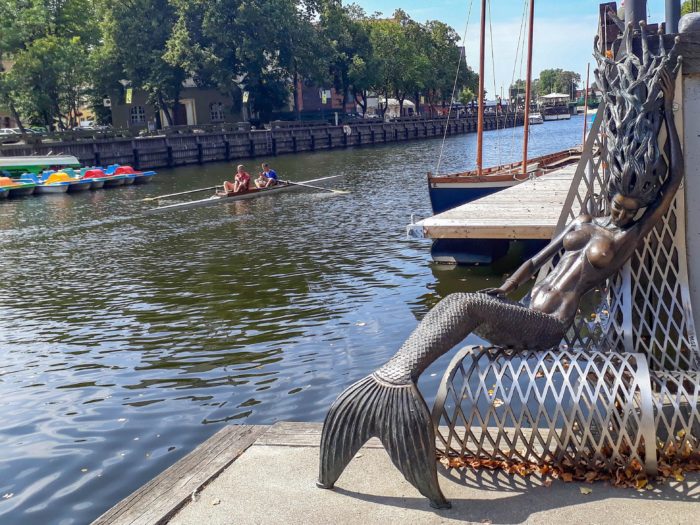
Southeastern Europe Route
If you would rather head southeast when planning your Eastern Europe travel itinerary, then these are the routes for you. Heading into the Balkans is a great choice if you want to experience a number of different cultures and learn about a different history than you would in other areas of Eastern Europe.
Central Balkans Route
This itinerary begins in Budapest and takes you through some south-central European capitals.
Budapest – There are few cities better to commence an Eastern European route in than Budapest. For this 2-week itinerary, plan to spend 4-5 days in the Hungarian capital.
Belgrade – Belgrade is a gritty, lively, energetic and dynamic city that is just so cool it is sure to take you by surprise. Known for its incredible nightlife, Belgrade is also packed with history, culture and interesting things to do that you could easily occupy yourself for the recommended 3 days in Serbia’s capital .
Zagreb – Croatia’s oft-overlooked capital is normally put on the back burner for those more eager to head to the country’s coast, however, it is worth spending a day or two exploring . There are also numerous great day trip opportunities — please try to get to Plitvice Lakes, it’s breathtakingly beautiful — from Zagreb, as well.
Ljubljana – End this itinerary for Eastern Europe in Slovenia’s capital of Ljubljana. This beautiful city is so incredibly charming that it is a strong contender for the most beautiful city in Eastern Europe (Tallinn has some competition).
Plan to spend 2 or 3 days in Ljubljana , giving yourself longer if you’re interested in going for a day trip to Lake Bled , Lake Bohinj , lovely Maribor or even the seaside village of Piran.

Classic Balkans Route
If you’re after a more classic Balkans route for your trip to Eastern Europe but only have two weeks to do it in, then plan to begin your trip in Belgrade. The central Balkans are fairly off the beaten path compared to the rest of the places on this list, however, they pack so much that it’s worth exploring.
Belgrade – Begin your trip in Belgrade, Serbia taking in all of the eclectic sites the city has to offer, experiencing its inimitable energy and learning about its vast and complex history – there are tons of walking tours here where you can learn all about this city. 3-4 days in Belgrade should be sufficient, but one can always spend more.
Sarajevo – Next, head to Bosnia & Herzegovina’s incredible capital of Sarajevo. One of the most fascinating cities to visit in this part of the world, Sarajevo has an absolutely heartbreak history that is very much worth learning about in a number of the city’s excellent museums.
Take the time to learn about its not-so-modern history, as well, enjoy the historic city centre, and take its east-meets-west vibes at this cultural crossroads. You need about 2-3 days in Sarajevo to really do the city justice.
Mostar – From Sarajevo, head south to the beautiful city of Mostar. Far too often visited only as a day trip, Mostar is best experienced over two days to really learn about this city and its complex history.
Kotor – To round out this two-week itinerary, head to the Montenegrin port city of Kotor. This city is quite popular amongst tourists — especially as a cruise ship port — but it’s definitely worth spending 2-3 full days here to get to know the city and take some day trips to the surrounding area.

Have More Time? If you have more time to spend in the Balkans, your opportunities really are endless — one could easily spend months on end in this region alone and still feel as if they’ve only scratched the surface.
From Kotor, one could easily head into Albania, Kosovo, North Macedonia and onto Greece, if you want to stay further south. Or, you could head west of Kotor to Dubrovnik and explore more of Croatia.
Alternatively, you could continue on east into Bulgaria, which deserves at least a week or two to explore on its own. Planning a Bulgaria itinerary on top of this Eastern European route is a fantastic idea.
If you end up in Bulgaria and have a lot of time to play around with, then it would also make sense to head into Romania.
Again, Romania is a massive country and visitor could easily dedicate two full weeks solely to this country – take time to see sites like Bran Castle, explore the vibrant capital of Bucharest and wander through the towns and cities in Transylvania.
Booking Accommodation in Eastern Europe
Once you’ve figured out your itinerary and where you want to go in Eastern Europe, the next step is booking accommodation. Luckily, there are so many options out there to book the best places to stay that cater to all tastes and budgets.
If you’re planning on backpacking in Eastern Europe, are on a tight budget, or are just looking for some great social opportunities, then hostels are going to be your best bet. We like to search for and book hostels online through Hostelworld , which is excellent to find the best hostels and keep all of your bookings in place.
If you’re looking for a broad array of accommodation options at great prices, then you can’t go wrong with Booking.com . This is our platform of choice when we are booking traditional hotels and B&Bs and even, sometimes, whole apartments!
And finally, if you’re looking for a private apartment rental or would like to save some money while staying in a private room in a local’s home, we recommend booking your stay through Airbnb. There are countless properties available on the platform all over Eastern Europe that will ensure you have a unique and authentic place to rest your head.

There are countless options when planning the ultimate Eastern Europe itinerary and it can seem overwhelming when confronted with all of them to figure out where to go. However, this region has so much to offer that no matter where in it you end up visit, you’re sure to have an incredible time!
Are you visiting Eastern Europe? Have any questions? Let us know in the comments!

Related Posts:

The Perfect 5 to 7 Days in Romania Itinerary

The Perfect 1, 2 or 3 Days in Bucharest Itinerary

One Day in Brasov Itinerary: A Day Trip from Bucharest

About Maggie Turansky
Maggie is a co-founder and writer for The World Was Here First. Originally from the US, she has lived in five different countries and has travelled to dozens more, both solo and with her partner, Michael. She particularly loves exploring Spain and spending time in the Caucasus and the Baltics. Read more about Maggie
Hi, woderful detailing of East Europe tours. Can you please help me to figure out my trip with inclusion of Budapest, Vienna, Prague, Croatia.we wish to travel by rental car. We are planning to visit these places in November 2023 , a trip for 10 days. please suggest. Dr, Neera Mittal
I sincerely hope that in 2022, I shall be able to visit eastern Europe which I have been planning for last three years! Your writings are very informative and absorbing. Please continue your excellent efforts of writing such pieces. Thanks a lot. PS: Add some information also about expenses of different categories, if possible.
Thanks for your comment and I hope that you’re able to go on your trip this year!
Amazing info, thanks. I will put together a trip for a month. I plan to surprise my daughter in Prague where she goes to Uni. Appreciate all your hard work and easy reading style. Stay healthy and happy! <3
Thanks so much for your comment and kind words, Lynn! Hope that you and your daughter have a great trip 🙂
Hello, this was a great explanation of what eastern europe really is, and some excellent itineraries for central europe, baltics, and balkans. But after you defined eastern europe to include Romania, Ukraine, Moldova, Belarus and Russia, you left out an itinerary for that very thing. Do you have such a guide? Thank you.
Hi Kyle, unfortunately, we don’t have a lot of information about those countries (yet!). All of those places are definitely on our list though so hoping to change that in the future
Leave a Comment Cancel reply
- Eastern European Countries

- All the countries of Eastern Europe were once part of the communist eastern bloc of countries led by the USSR during the Cold War.
- Most of Eastern Europe's countries have pursued closer ties with the West and greater European integration.
- Russia is the largest and most populous country in Eastern Europe.
- Moldova is the smallest and least populated country in Eastern Europe.
The 10 countries that constitute what the UN considers to be Eastern Europe were all once part of the eastern, communist bloc of countries led by the Soviet Union during the Cold War . Some were part of the Soviet Union itself, while others were Soviet satellite states. Following the collapse of the Soviet Union in the early 1990s, many of the region’s countries have become more closely integrated with the West, and have become part of the European Union and NATO . These are the countries of Eastern Europe.
Czech Republic
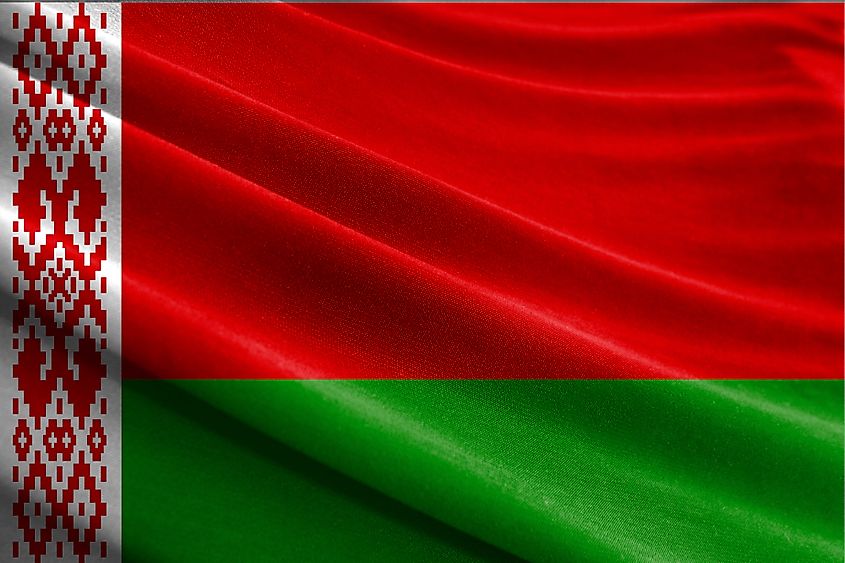
Belarus is a former Soviet republic, which gained independence in 1991. It has a population of approximately 9.4 million people. After breaking away from the USSR, Belarus maintained close ties to Russia, unlike many other countries in Eastern Europe that have grown closer to the West. The Belarussian President, Alexandr Lukashenko, who has ruled the country since 1994, has been criticized for being an autocratic ruler. In 2020, he again won re-election in a vote largely condemned by the West and opposition activists in Belarus as rigged.
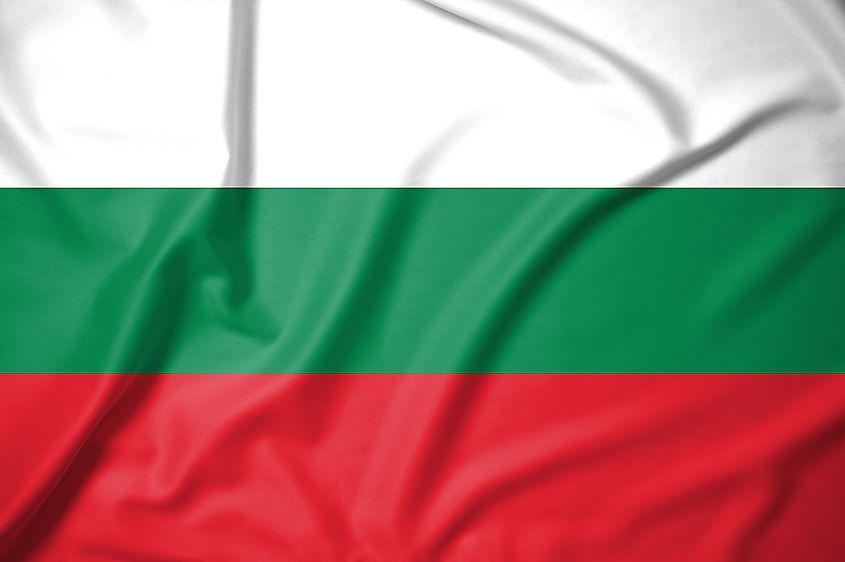
Bulgaria has a population of about 6.9 million people. The country was a member of the Warsaw Pact during the Cold War. In 1990, however, the country’s communist regime gave up power. Since the fall of communism, Bulgaria has transitioned to a capitalist, market economy. It has also moved away from Russian influence and into the West’s sphere of influence. Bulgaria joined NATO in 2004, and in 2007, became part of the EU.
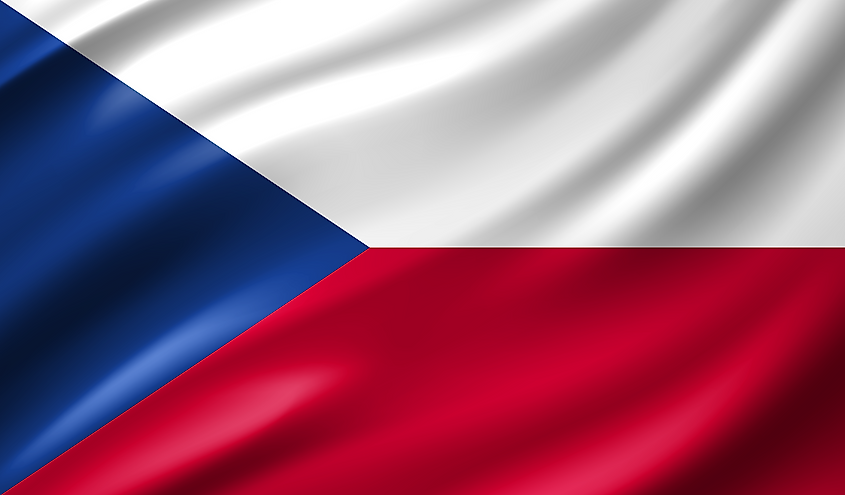
The landlocked Czech Republic is a country of approximately 10.7 million people. It was formally part of the country known as Czechoslovakia, which unified Czechs and Slovaks into one state. Czechoslovakia was part of the communist bloc of states during the Cold War. In 1989, however, mass protests in the country forced the communist regime from power. Two years later, the “Velvet Divorce” took place in which the country was divided into two states, the Czech Republic and Slovakia. In 1999, the Czech Republic became one of the first former Warsaw Pact members to join NATO. Five years later, the Czech Republic became a member of the EU.
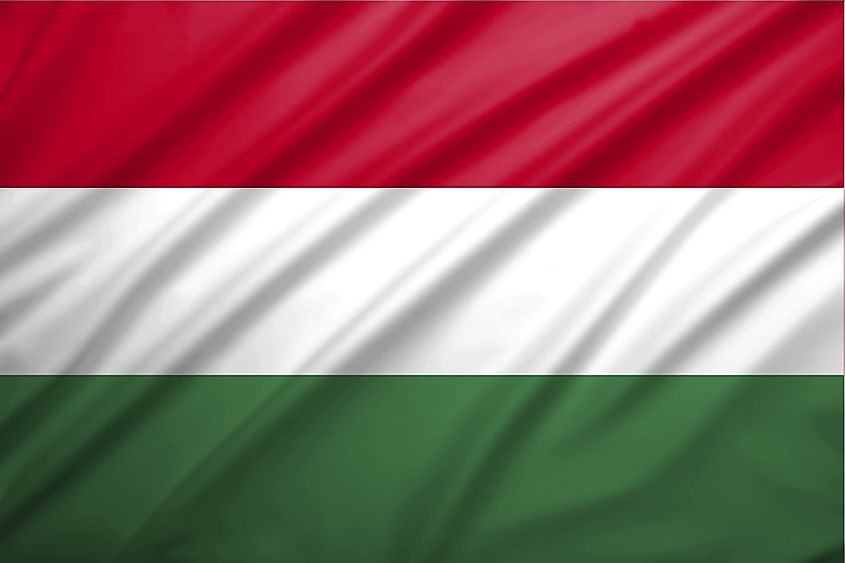
Hungary is a landlocked country in Eastern Europe that contains about 9.6 million people. Like all the countries of Eastern Europe, it was part of the communist eastern bloc during the Cold War. As with other former eastern bloc countries, communism came to an end in Hungary in 1989. The country joined NATO in 1999, and the EU in 2004. Interestingly, Hungary’s native inhabitants, known as the Magyars, did not originate in Europe, but eventually migrated to what is now Hungary from Asia, though there are competing theories as to where in Asia the Magyars originally came from.
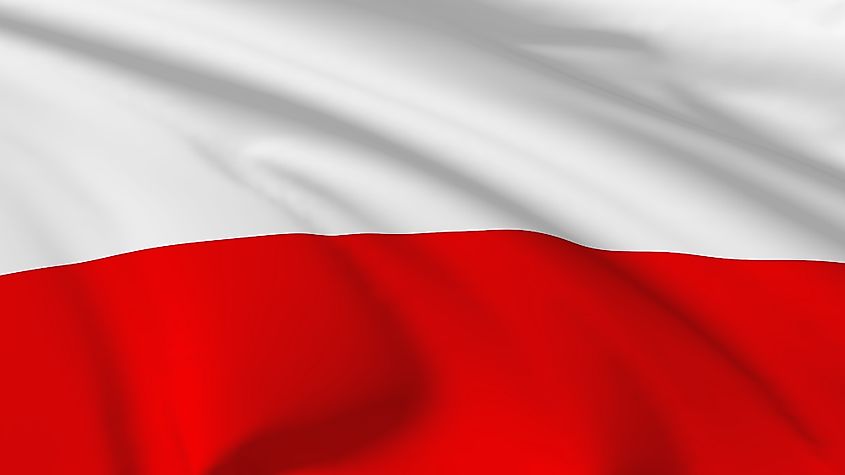
Poland is a country of approximately 37.8 million people. Its population has been steadily declining since communist rule came to an end in the country in 1989. It was a Polish Pope, John Paul II, who was widely seen as one of the catalysts for the end of communism in Poland. Like other former Soviet satellite states, Poland transitioned to a capitalist, market economy. In 1999, it joined Hungary and the Czech Republic as the first Eastern European countries to join NATO, and in 2004, became part of the EU.
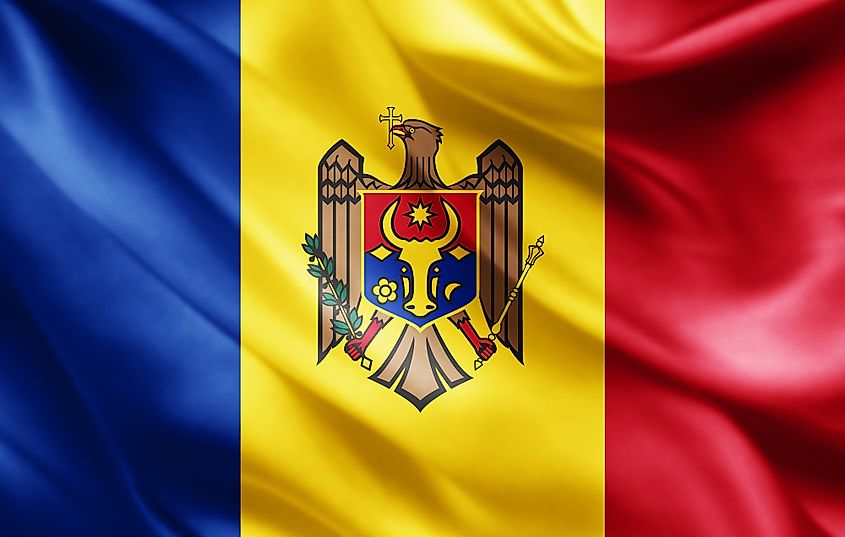
Moldova is home to about 4 million people. Before gaining independence in 1990, Moldova was one of the republics that made up the Soviet Union. The story of Moldova since independence has been one of hardship and the ongoing struggle between the West and Russia for influence in the country. A separatist conflict in the Trans-Dniester region of the country has also contributed to instability. Today, Moldova is the poorest country in Europe.
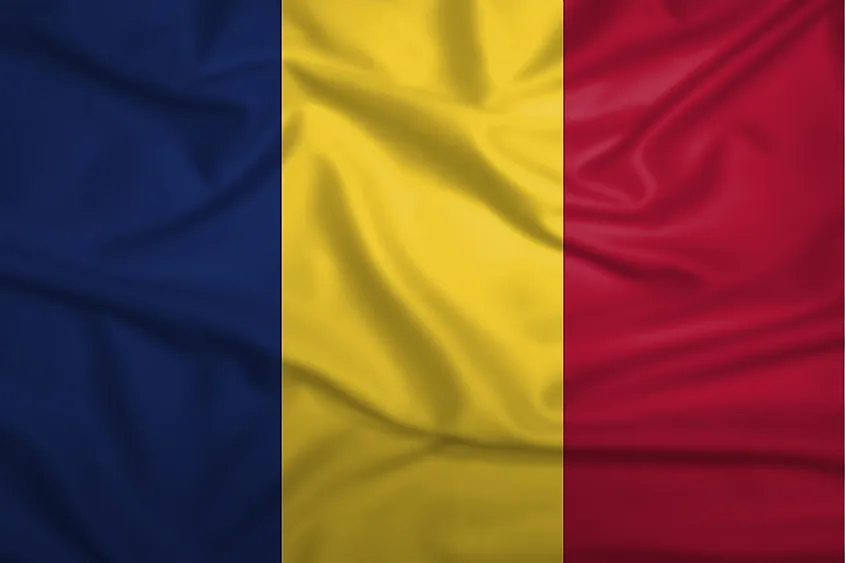
Romania is a country of roughly 19 million people. Like Poland, the country has seen its population decline since the fall of communism. Romania’s break with communism came following a violent uprising in 1989, which culminated in the execution death of the country’s communist leader, Nicolae Ceacescu. Since then, Romania has grown closer to the West, joining NATO in 2004, and the EU in 2007.
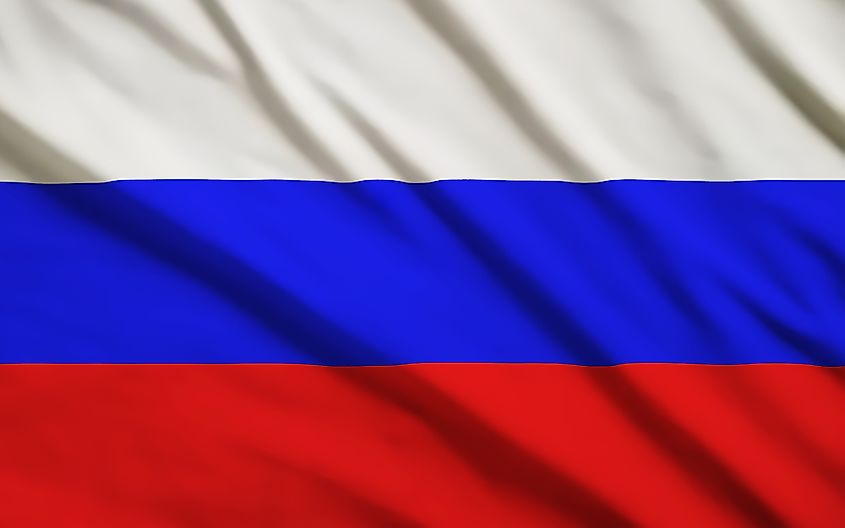
The Russian Federation is the largest and most populous country in Eastern Europe. Its population is approximately 144 million. Russia was the dominant force in what was the Soviet Union. In 1991, when the Soviet Union collapsed, Russia, like the other 14 republics of the USSR, becomes independent. The country struggled mightily with economic reform and internal unrest in the 1990s. By the early 2000s, however, the country gained a measure of stability under President Vladimir Putin, who has sought to rebuild Russia’s military and political influence to the levels that it once had during Soviet times. Leaders in the West have become increasingly concerned with Russia’s growing assertiveness under Putin.
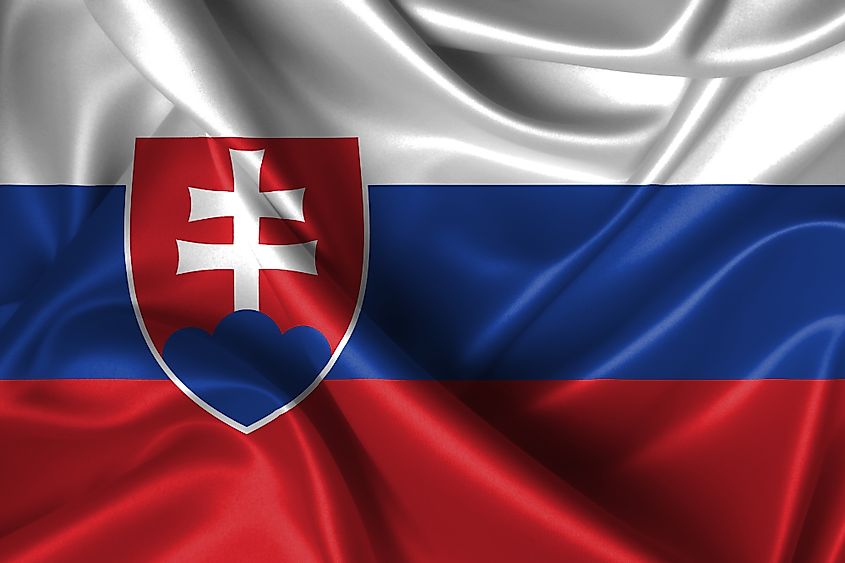
Slovakia , a landlocked country of roughly 5.4 million people, was once one of the two halves that comprised Czechoslovakia. In 1993, following the so-called Velvet Divorce, Slovakia became independent. Its transition to a capitalist, market economy did not go as quickly or as smoothly as it did for the Czechs. Nevertheless, Slovakia did eventually pursue greater integration with the West. In 2004, it became a member of both NATO and the EU.
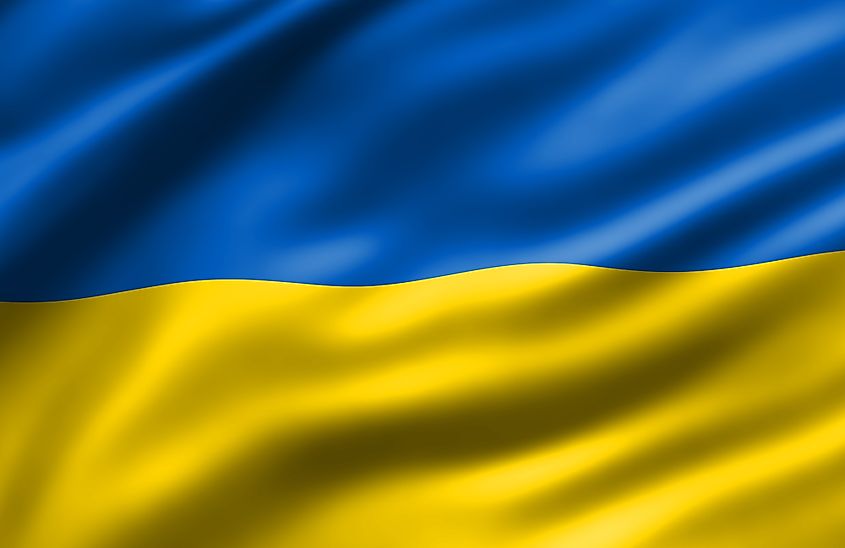
Ukraine was the largest and second most populous republic of the Soviet Union. Today, it is an independent country consisting of approximately 43.5 million people. Like Poland and Romania, Ukraine has seen its population decline following the collapse of the Soviet empire. Now, the country is the frontline in the battle for influence between the West and Russia. A people’s revolution led to the overthrow of a pro-Russian president in 2014. In response, Russia seized control over the Ukrainian peninsula, Crimea. Russia has also given support to an armed insurrection in eastern Ukraine by pro-Russian rebels. The biggest question in Ukrainian politics today is whether the country should try to forge closer ties with the West, or bring itself back into Russia’s sphere of influence.
Eastern Europe Now And In The Future
While most of Eastern Europe continues to integrate itself with the West, especially with the EU, Russia under President Vladimir Putin is determined to reassert Russian influence over the former Soviet republics and satellite states. At the same time, there is growing support among the region’s population for far-right political movements, some of which have managed to take power and attempted to erode the still-young democratic institutions of their respective countries. Hence, Eastern Europe’s road to greater integration with the rest of the continent is getting increasingly bumpy.
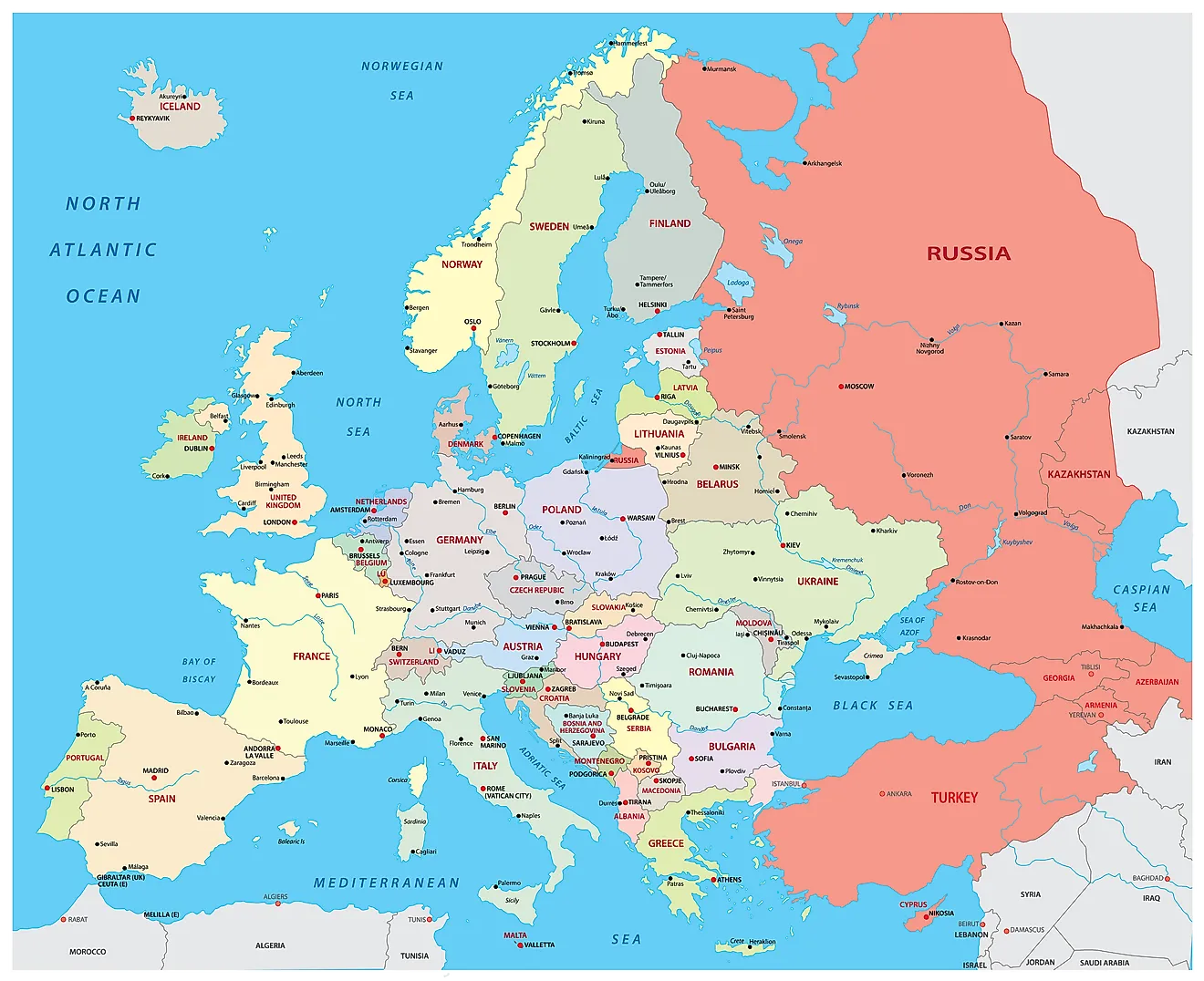
How Many Countries Are There In Europe?
There are 9 countries in Western Europe, 10 countries in Eastern Europe, 15 countries in Southern Europe, and 10 countries in Northern Europe. Read More
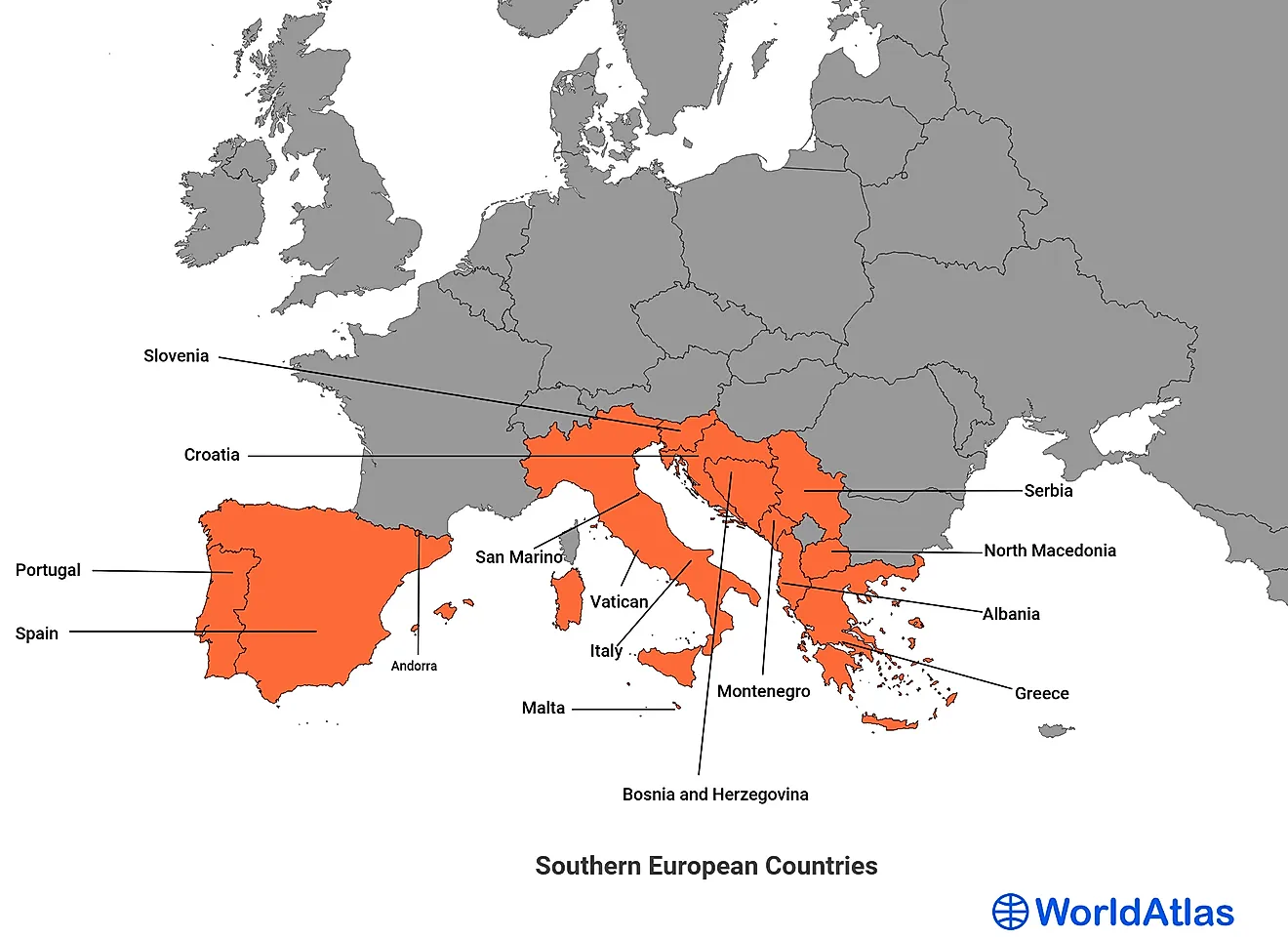
Southern European Countries
Southern Europe, also known as Mediterranean Europe, comprises nineteen countries and has a total population of over 150 million people spread across three peninsulas. Read More
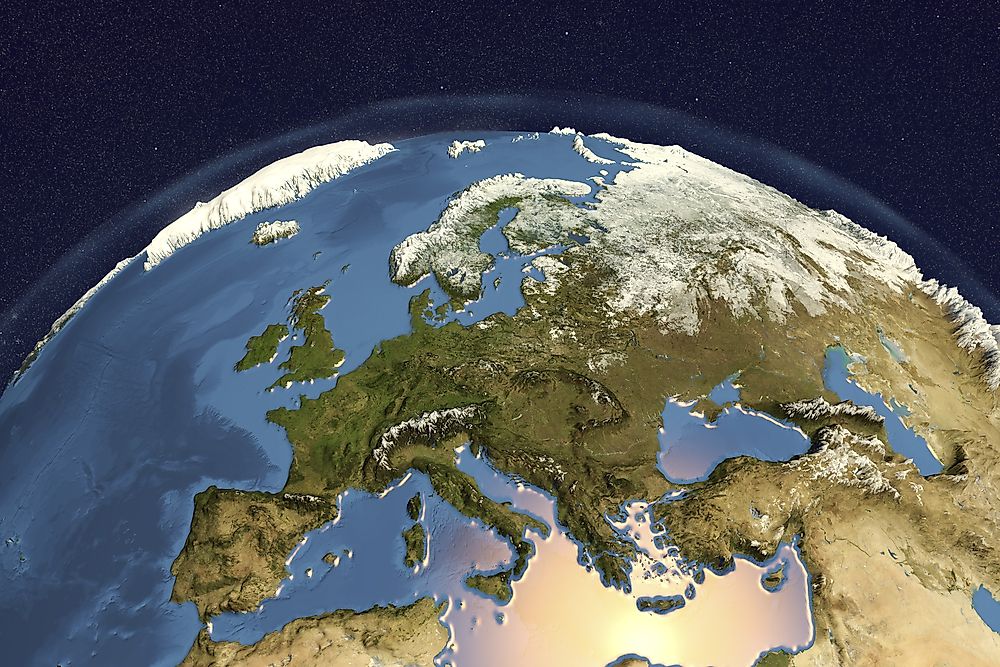
Which Countries Are Considered Western Europe?
The CIA classifies seven countries as belonging to the region of Western Europe. Read More
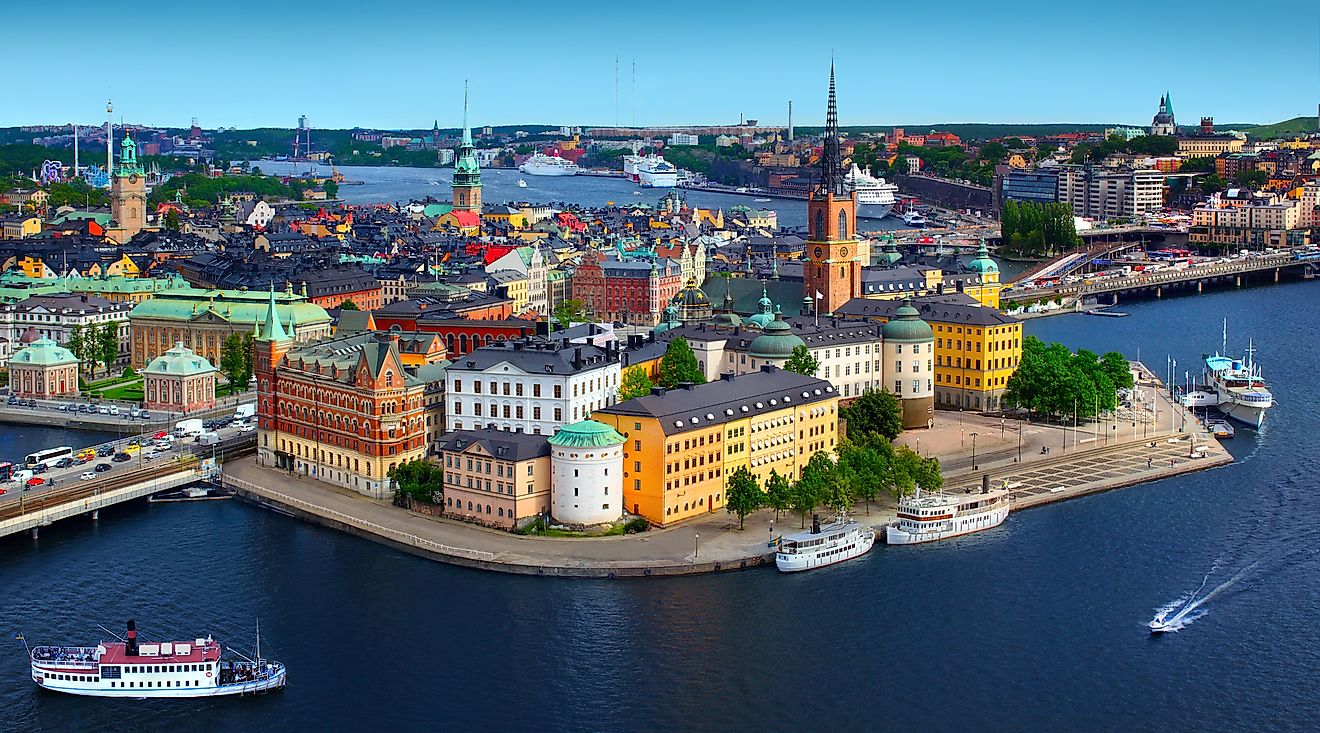
The Countries Of Northern Europe
Ten countries make up Northern Europe. They can be divided into three different regions: Scandinavia, the British Isles, and the Baltic countries. Read More
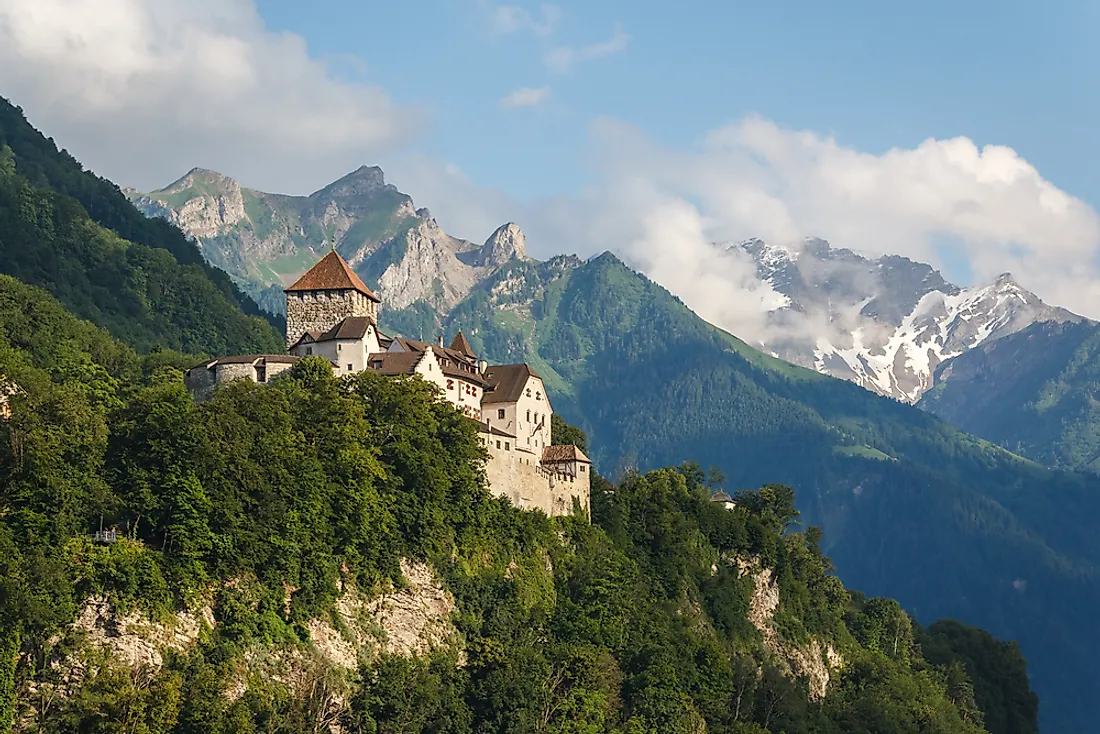
Landlocked Countries In Europe
Europe is politically divided into 50 autonomous countries, as well as five that are under territorial dispute. Of these countries, 14 are landlocked. Read More
- World Facts
More in World Facts

The Largest Countries In Asia By Area

The World's Oldest Civilizations

Is England Part of Europe?

Olympic Games History

Southeast Asian Countries

How Many Countries Are There In Oceania?

Is Australia A Country Or A Continent?

Is Turkey In Europe Or Asia?

- Destinations
- Photo Books
- How it Works
- Testimonials
- Find a Photographer
- 25,000+ 5 star reviews
Select Page
The Ultimate Eastern Europe Travel Guide
Jun 30, 2023

Best places to travel in Eastern Europe
If you immediately think of Paris , Barcelona and other overwhelmingly popular western destinations when you hear the word “Europe,” we’re here to make a case for the absolutely stunning cities across Eastern Europe. ✈️ Many of these spots still fly relatively under the radar, so you could be on the forefront of experiencing the newest hot spots in travel. We’ve rounded up some of the best places for a “hot Europe summer”… any time of the year. 🔥😉
Here at Flytographer , we easily connect people with trusted photographers for fun photo shoots and have captured over three million memories worldwide. Today, we asked our local photographers to show us around all the very best places to travel in Eastern Europe!
Table of Contents
- Best time of year to travel
- What to pack
- Slovenia : Ljubljana
- Croatia : Zagreb, Dubrovnik
- Hungary : Budapest
- Turkey : Istanbul
- Romania : Bucharest
- Poland : Warsaw, Krakow
- Latvia : Riga
View this post on Instagram A post shared by Flytographer (@flytographer)
1. Know before you go
What is the best time of year to go to eastern europe.
While summer is prime time, many travellers have the same idea and elbow room can be lacking! 🌞 Opt for the shoulder seasons in spring and summer for slightly lower prices and fewer crowds. However, many vendors may be operating on a reduced schedule, so be sure to plan ahead and do your research.

Božo in Dubrovnik

Dubrovnik Sea Walls

“Mankica was incredible! She was so kind, friendly, and sweet right from the start of our shoot. My son was not in the mood to cooperate, but Mankica handled it beautifully and still managed to get some amazing shots of him and our whole family. Not sure how she even did it! She was great with both of our kids and flexible in our schedule and our route. We LOVE the photos, Flytographer, and Ljubljana! What an incredible place. Mankica also shared with us some wonderful insights on what to do and where to go while in her hometown – they were great! Thanks so much, Mankica!”
Mankica in Ljubljana

“I had the pleasure of having a photo shoot with Ihsan in Budapest, and I must say it was an amazing experience! What impressed me the most about Ihsan was his attention to detail. We had such a great time during the shoot, and the end results were beyond our expectations! The pictures turned out beautiful, and we couldn’t be happier with them. Ihsan even went above and beyond by recommending some local restaurants when we asked for some advice, which was very much appreciated. Overall, I would highly recommend Ihsan to anyone looking for a talented, detail-oriented photographer in Budapest.”
Ihsan in Budapest
Related posts

Best Things to Do on the Amalfi Coast: Flytographer’s Local Travel Guide
March 7, 2024
“Italy is a dream that keeps returning for the rest of your life.” – Anna Akhmatova Best things to...

11 Heartwarming Holiday Traditions Around the World With Our Photographers
December 7, 2023
5 Holiday Traditions around the World We easily connect people with trusted photographers for fun photo shoots and have...

Top 10 Things to Do in New York City in December
December 6, 2023
December in NYCDecember in New York City is an unparalleled hub of holiday cheer! As the city transforms into a dazzling...
Search the Blog
50+ tips on how to look amazing in photos 📸, travel inspiration, top destinations, recent posts.

Featured On

Pin It on Pinterest
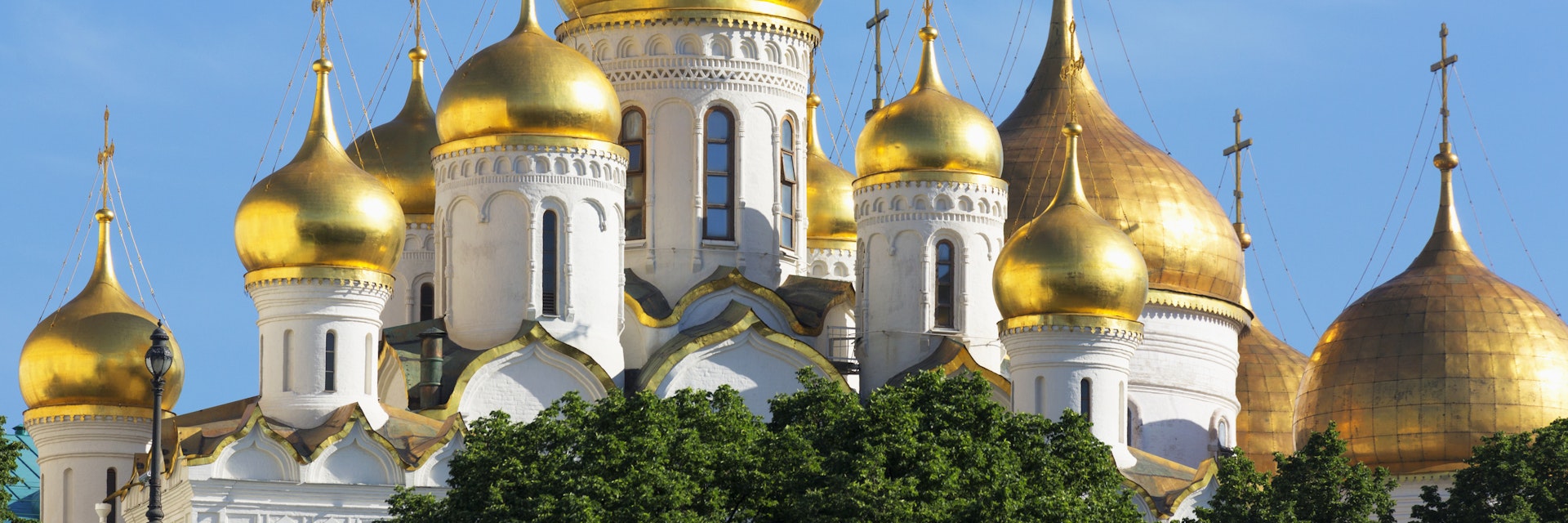
Getty Images
Eastern Europe
From soaring mountains to golden sands, Eastern Europe reveals a tapestry of quaint and contemporary cultures – always with enough rough edges to keep you intrigued.
Attractions
Must-see attractions.
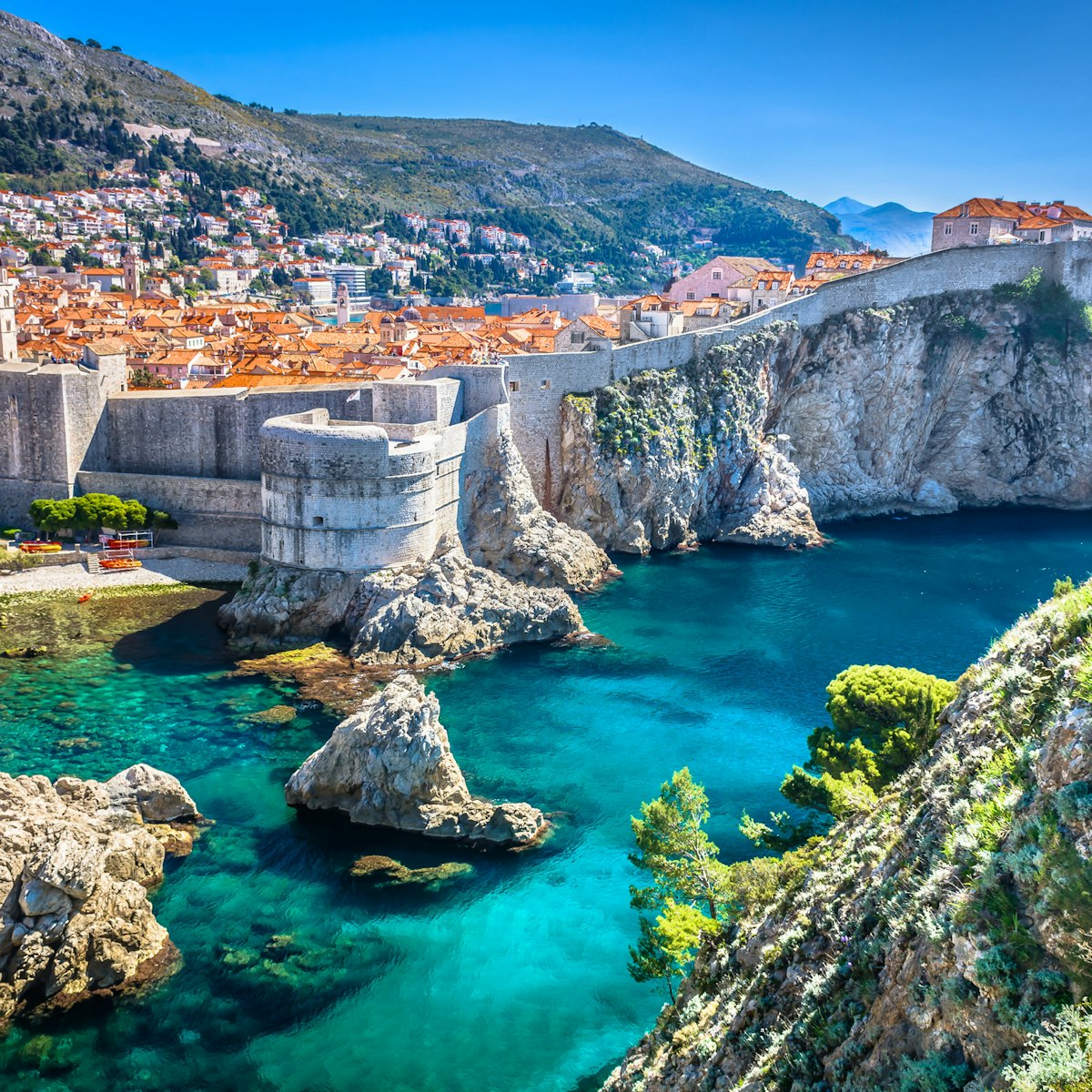
City Walls & Forts
No visit to Dubrovnik is complete without a walk around the spectacular city walls that encircle its historic core. They're among the finest in the world…

Diocletian’s Palace
Taking up a prime harborside position, the extraordinary complex of Diocletian's Palace is one of the most imposing ancient Roman structures in existence…
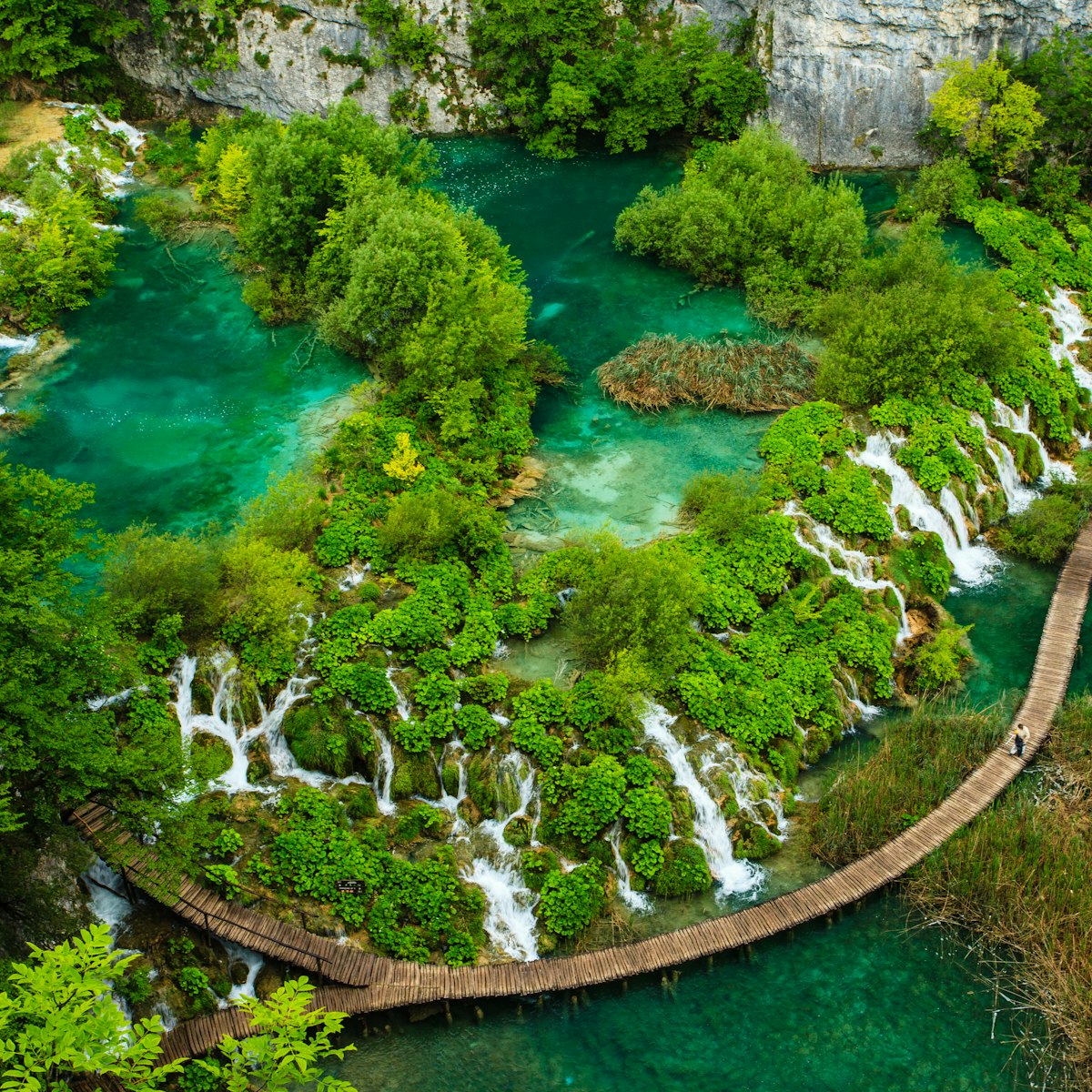
Plitvice Lakes National Park
By far Croatia's top natural attraction and the absolute highlight of Croatia's Adriatic hinterland, the Plitvice Lakes National Park is a glorious…
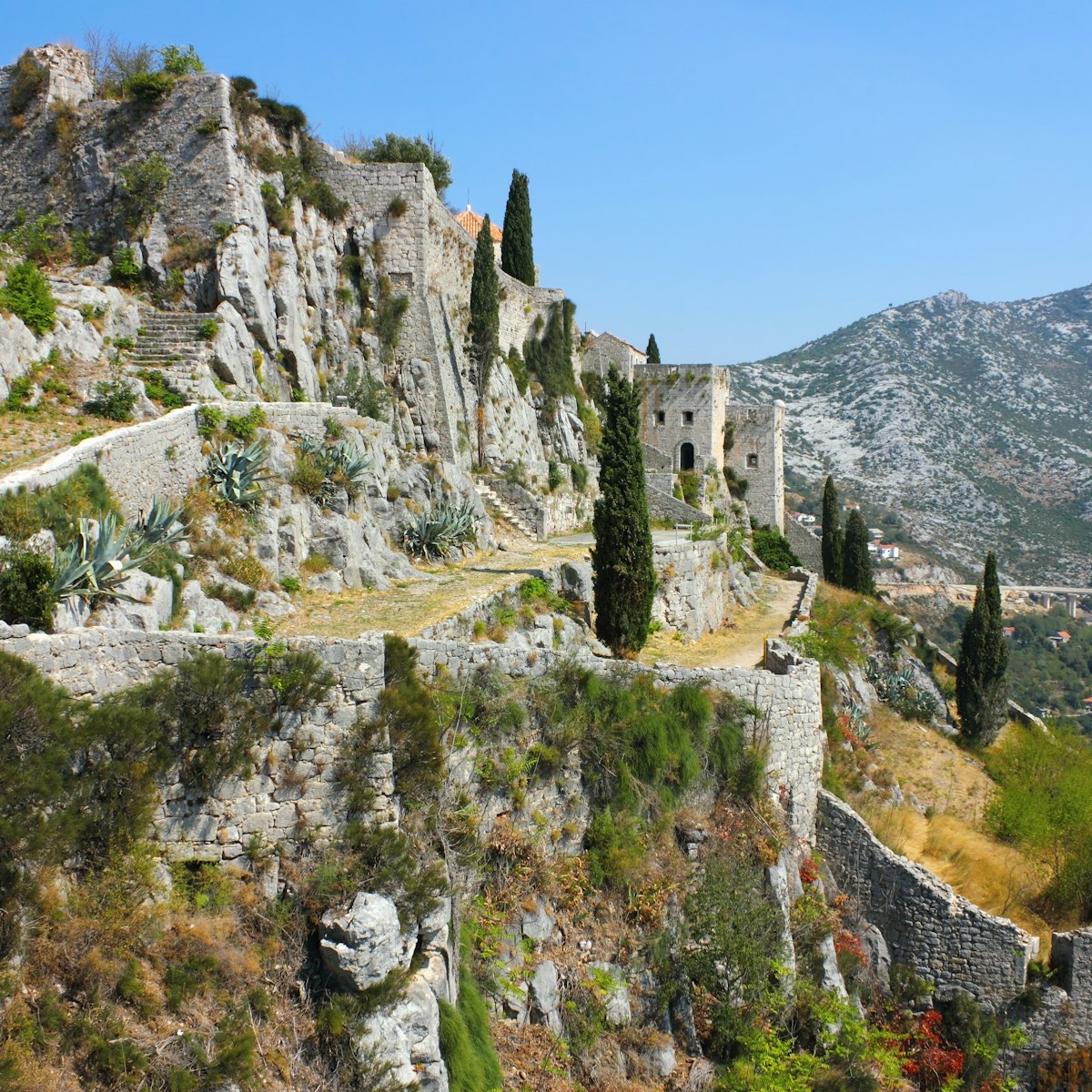
Klis Fortress
Controlling the valley leading into Split, the imposing Klis Fortress spreads along a limestone bluff, reaching 1260ft (385m) at its highest point. Its…
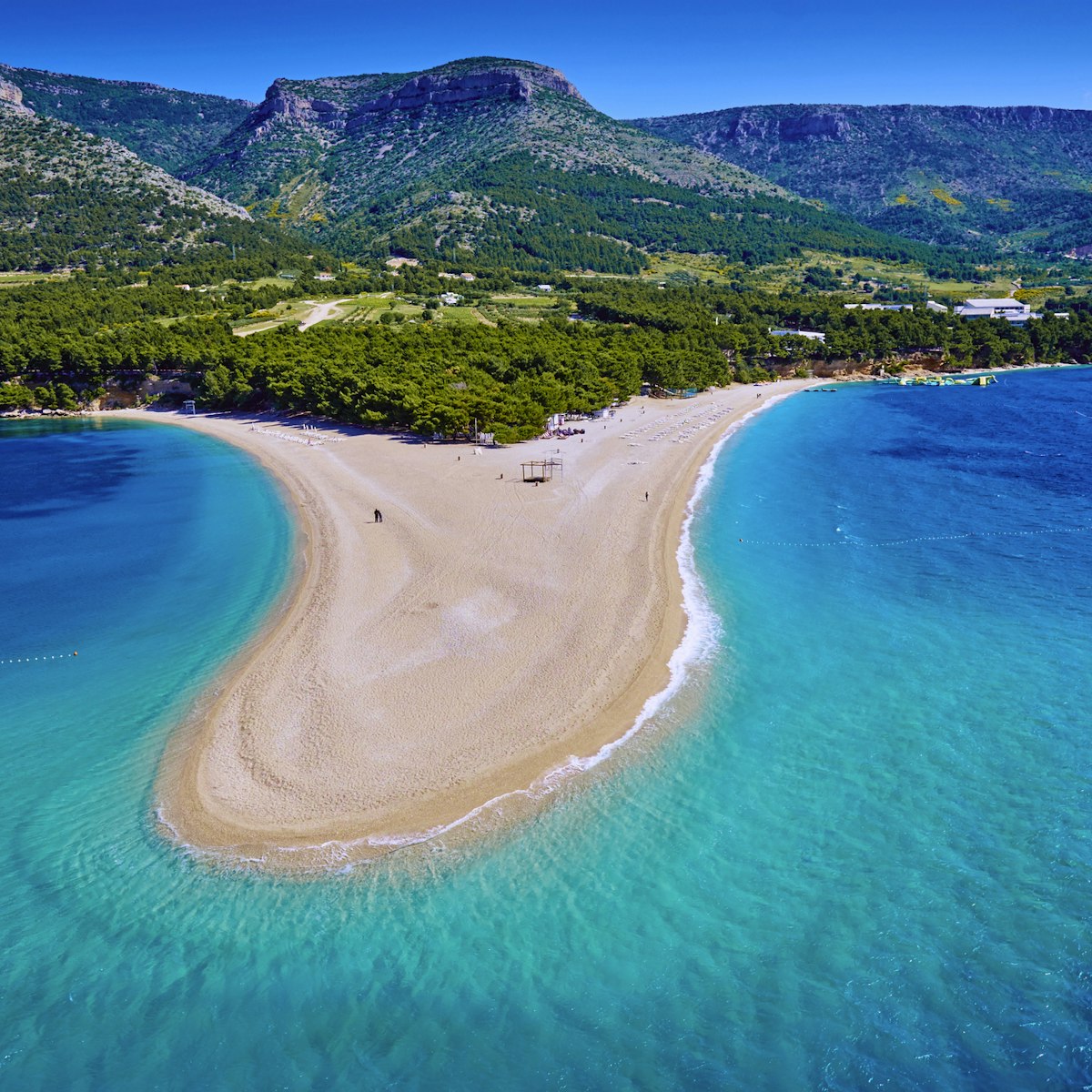
Zlatni Rat, Croatia's most photographed beach, extends like a tongue into the sea for about a quarter of a mile (400m). Despite the hype and constant…

Hill of Crosses
Lithuania's fabled Hill of Crosses is a symbol of defiance as much as a pilgrimage site. More than 100,000 crosses have been planted on this low hill,…
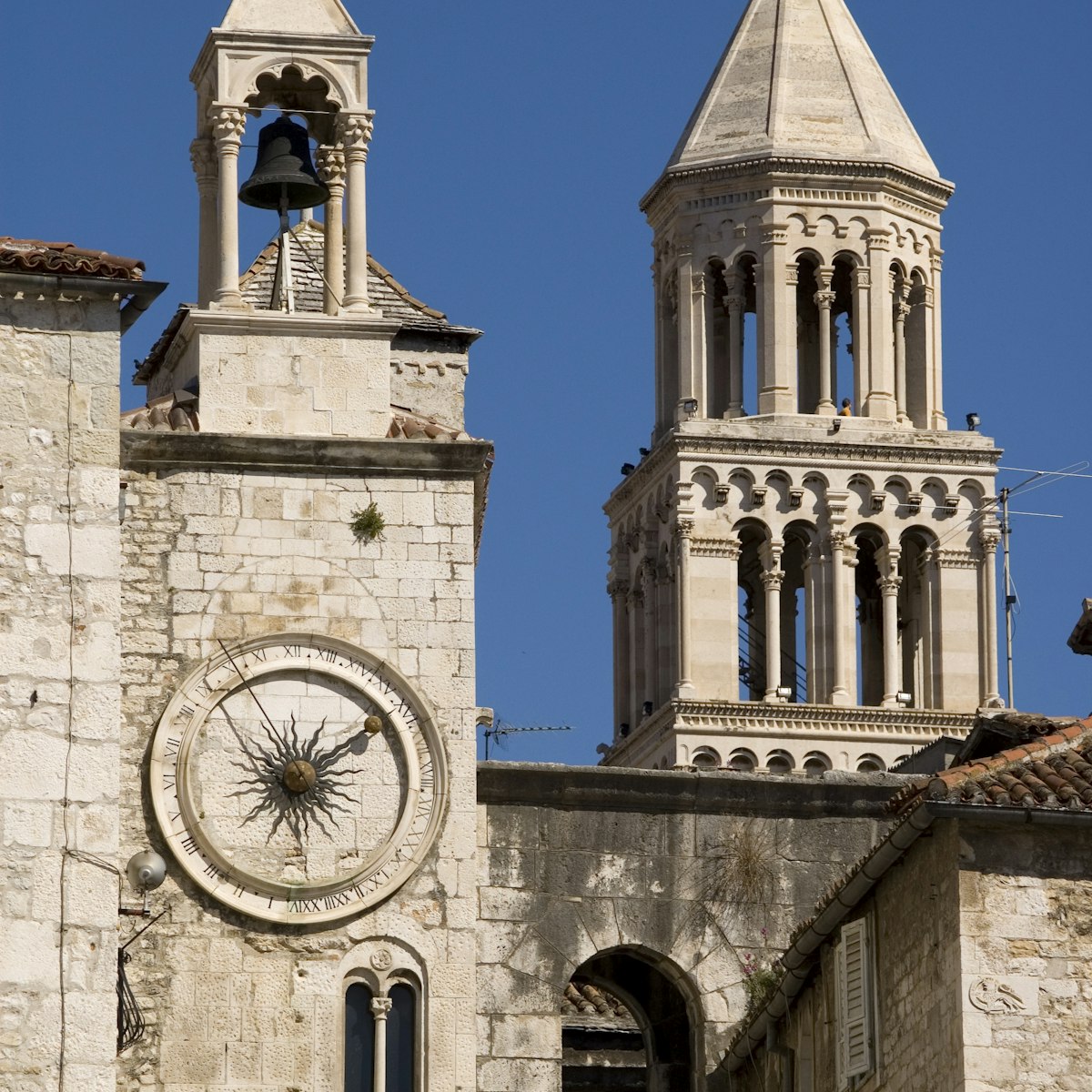
Cathedral of St Domnius
Split’s octagonal cathedral is one of the best-preserved ancient Roman buildings still standing. It was built as a mausoleum for Diocletian, the last…
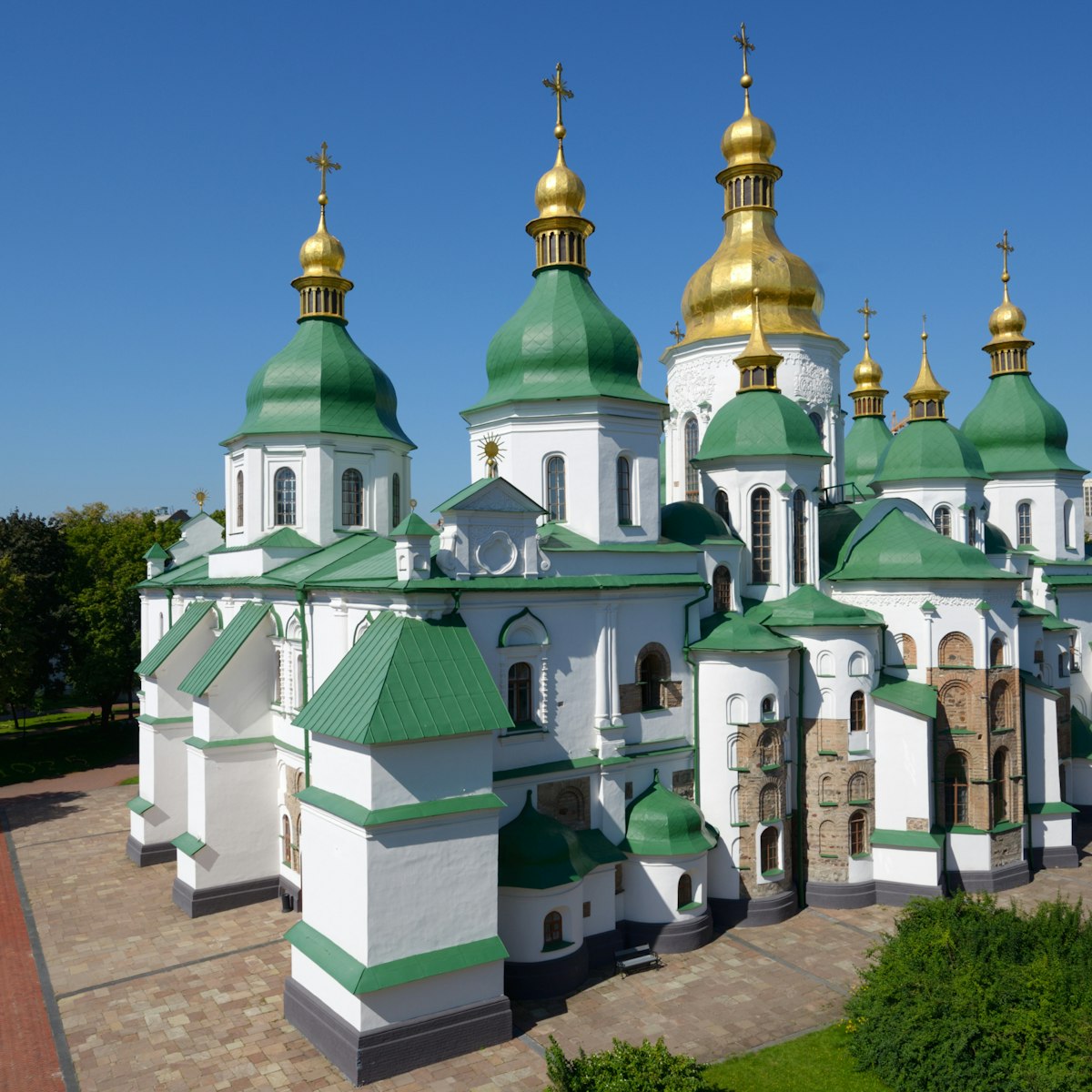
St Sophia's Cathedral
The interior is the most astounding aspect of Kyiv's oldest standing church. Many of the mosaics and frescoes are original, dating back to 1017–31, when…
Latest stories from Eastern Europe
Filter by interest:
- All Interests
- Adventure Travel
- Art & Culture
- Beaches, Coasts & Islands
- Food & Drink

Sustainable Travel
Nov 27, 2019 • 1 min read
Zaha Hadid Architects has won an open international contest to design a major new rail terminal in Tallinn, Estonia.
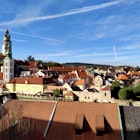
Nov 27, 2019 • 5 min read

May 17, 2019 • 6 min read
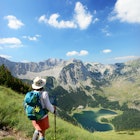
Mar 28, 2019 • 5 min read
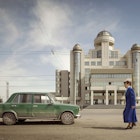
Jun 13, 2018 • 1 min read
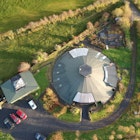
Nov 30, 2017 • 5 min read

May 29, 2012 • 4 min read
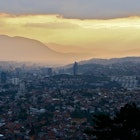
May 25, 2012 • 3 min read
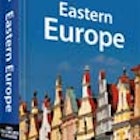
Oct 20, 2010 • 4 min read
Purchase our award-winning guidebooks
Get to the heart of Eastern Europe with one of our in-depth, award-winning guidebooks, covering maps, itineraries, and expert guidance.
Eastern Europe and beyond
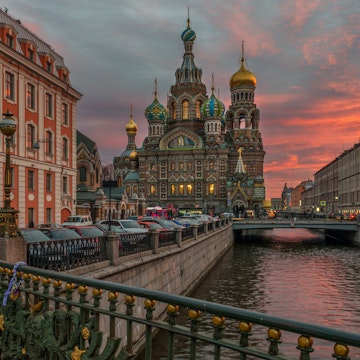
Guide to the Countries of Eastern Europe
:max_bytes(150000):strip_icc():format(webp)/RussianKerry2-56a39e8d5f9b58b7d0d2ca8c.jpg)
Henryk T. Kaiser / Getty Images
Eastern Europe is a region that encompasses many different cultures, ethnicities, languages, and histories. Grouping all of these countries under a single designation can sometimes be problematic; experts, scholars, and those living there label parts of the region according to varying sets of criteria, and heated debates have been known to erupt when one party has felt that a certain country has been miscategorized. However, it's important to note that the countries broadly classified as being a part of Eastern Europe have one thing in common: they were all behind the Iron Curtain before its fall, and this political boundary of the last century helps us define a region whose development, especially until the 1990s, has been very different from that of Western Europe.
The most widely recognized sub-regions of Eastern Europe include:
- East Central Europe
- The Baltics
- Southeastern Europe/Balkans
- Eastern Europe
The countries within these regions are as follows:
Czech republic, romania and moldova.
- Lithuania, Latvia and Estonia
Ukraine and Belarus
- Montenegro, Bosnia and Herzegovina
- Albania, Kosovo, and Macedonia
Eastern Europe's Regional Differences and Similarities
We can acknowledge that some countries, like Poland and the Czech Republic, are more "central," and, if we want to be specific about their location, can refer to them as a part of East Central Europe. The Baltics, populated by people ethnically different from the rest of Eastern Europe, can also be grouped accordingly. The countries of the Balkans are classified differently depending on what factors you're using, and Southeastern Europe is a good description for those countries that occupy the southern corner of Eastern Europe. And, as for everyone else—they're so far east there's no disputing the fact that they're a part of Eastern Europe, but East Eastern Europe seems redundant.
It's understandable for some countries—whose national identities were so repressed under authoritarian regimes—to tire of being affiliated with a term that they feel is outdated and which unfairly associates them with other countries from whom they would rather distance themselves. But the truth is that Eastern Europe and all its sub-regions is a culturally, geographically, and historically fascinating place, and this site chooses to celebrate the region as a whole while acknowledging the differences of each sub-region and each nation within that sub-region.
Russia is Eastern Europe's largest and easternmost country. It separates Europe from Asia and straddles both continents over a wide geographical area that engulfs many cultures, terrains, and climates.
Moscow is Russia's capital city, but it's an important cultural and historical center, too. Most individuals who travel to Russia visit Moscow first: here, the Kremlin's walls contain echoes of legends, museums guard important examples of Russian art, the nation's rich and powerful strut their plumage, and pagan festivals like Maslenitsa are interpreted anew for those seeking to get at the heart of Russian culture.
Moscow may give you an introduction to Russia, but Russia's other cities reward travelers with their variety, sights, regional traditions, and more.
TripSavvy / Taylor McIntyre
The Czech Republic, once joined with Slovakia, is an East Central European nation that is home to one of the region's most popular destinations, Prague.
As the Czech Republic's capital city, Prague has plenty to offer the sightseer , the couple seeking romance, the beer connoisseur, the shopaholic, or the culture hound.
But, as any person who takes a day trip from Prague can attest, the Czech Republic is more than Prague. Other destinations include castles, medieval towns, and spa centers. Czech Republic World Heritage sites showcase the best of the Czech Republic's heritage.
No matter what region of the Czech Republic you visit, Czech culture provides plenty of opportunities to celebrate throughout the year, and Czech souvenirs show pride in Czech traditions.
Poland occupies a location in the north of the East/East Central European region. This culturally rich, easy-to-get-around destination is a traveler's dream with big cities and small towns tucked into every corner of the country, each with a unique heritage to share.
Warsaw is Poland's capital city and is a thriving, modern destination with a historic core that has been carefully reconstructed to its pre-war state of elegance.
However, Krakow is Poland's most popular destination, and other cities in Poland attract visitors from far and wide, too. Look for Polish castles when touring the country—they are plentiful, and many have been turned into museums or hotels.
Polish culture , with its numerous holidays, festive traditions, colorful folk costumes, and charming handicrafts, makes Poland even more attractive as a travel destination.
TripSavvy / Taylor McIntyre
Croatia's location on the Adriatic Sea and its long coast are enough reason to travel there - its abundance of enchanting cities is a bonus. And, while other Southeastern European countries are still struggling to attract visitors, Croatia has woken up the tourism industry to its endless potential: cruise liners dock in its ports, spring breakers flock to its beaches, and honeymooners seek out its achingly romantic getaways.
Dubrovnik is Croatia's most famous destination city, its walled old town encapsulating the best of seaside life and the prosperity of medieval Dalmatia. Dubrovnik is one of the Eastern Europe's must-see cities—its number of visitors increases every year for good reason!
But travelers to Croatia shouldn't end their exploration of this fascinating country in Dubrovnik. Croatia's cities and towns reveal the mysteries of past civilizations, proudly serve local cuisines, and protect rare treasures of art and architecture. Consider Split with its giant Roman palace or Rovinj with its legendary church.
Croatia's culture is as colorful as the country itself. Embroidered folk costumes, traditional song and dance, and an exciting calendar of festivals and holidays mean that visitors to Croatia can begin to understand the country's identity and enjoy themselves at the same time.
TripSavvy / Alisha McDarris
Slovakia, once only considered the Czech Republic's other half in their marriage called Czechoslovakia, is now making an impression as an independent Central Eastern European country—both as a member of the EU and an attractive travel destination. With a stable economy and a capital that knows how to party, Slovakia is increasing its importance as a player in various sectors.
Bratislava is gaining in popularity as a European capital with plenty to offer. Its small, compact old Town is the center of festivities when the holidays approach. For example, New Year's Eve in Bratislava hosts a celebration that rivals that of nearby capitals, and the Bratislava Christmas market sells handmade Slovakian crafts and traditional food.
Slovakia's castles are a great excuse to go out and see the Slovakian countryside, where mountains, hills, lakes, and fields create romantic settings for picnics and hikes.
Hungary occupies an interesting place in the Central Eastern European territory. Its Magyar, rather than Slavic, heritage differentiates it from many of the other countries in the region. Hungarian culture reflects Hungary's differences even while it shares similarities with neighboring cultures.
Budapest's 19th-century grandeur makes it one of Eastern Europe's top romantic cities. Neo-Gothic and Art Nouveau architecture drips with details—Hungary's parliament building is one example of Hungary's symbolic architecture. Even less officious buildings, like the Great Market Hall , glow with the beauty of past centuries.
Beyond Budapest, Hungary's destinations include Pecs, famous for its Roman archaeological sites, and Lake Balaton , Hungary's most popular resort area. Hungary's castles—from medieval strongholds to castles built for temporary use —provide the opportunity to see even more of this country.
Romania is so often associated with the real Dracula legend that it can seem like this Eastern European country has little identity beyond as the birthplace of Vlad the Impaler. However, Romania is a place of haunting beauty, centuries-old traditions, and hidden surprises—for those who have the patience to seek them out.
Romania's culture dates back to Roman times when the Dacians inhabited the region. Archaeological sites reveal information about the earliest Romanians and offer clues to modern Romania's origins.
Romania today preserves much of the past in countryside life and traditions and in its castles , churches, and historic towns.
Moldova is its own country though it is sometimes wrongly thought to be a part of Romania due to geographic proximity and its similar culture and language. The capital of this tiny country is Chisinau.
Did you know that Serbia has an expanding tourism industry and is becoming more attractive to visitors every year? This Southeastern European country is often overlooked by those visiting the region, but you might be surprised at what Serbia has to offer.
Belgrade is the Serbian capital city. This hub of activity is attracting bloggers, businesses, and travelers alike. The number of hostels in Belgrade has exploded in the past few years, and English-language coverage of this destination city is better than for some of the rest of Southeastern Europe.
Lithuania, Latvia, and Estonia
Angel Villalba / Getty Images
The Baltic region consists of three Northeastern European countries: Lithuania, Latvia, and Estonia. They share the Baltic Sea Coast and its cold winter weather and wealth of amber deposits, but these countries are three individual entities.
The people of Lithuania speak one of the oldest languages on the Indo-European language tree. Lithuania's historical heritage is also strong—grand dukes from the past conquered large tracts of land and converted their subjects from paganism to Christianity. One of Lithuania's most important monuments is Trakai Island Castle , a stronghold in the middle of a lake that symbolizes Lithuania's medieval authority.
Latvia is the middle Baltic nation. Latvian culture includes one of the world's oldest flags. Latvia also claims to be the originator of the Christmas tree, and Latvian Christmas traditions include a celebration of this contribution to Christianity's important holiday.
Estonia is the third Baltic nation. Like Latvia, it also claims to have originated the tradition of the Christmas tree, and Christmas in Estonia always includes large, elaborately decorated fir trees for the holidays.
Estonia's castles and manor houses are important draws for tourism. Some are museums and others are inns or hotels.
Slovenia, with its capital city, Ljubljana, is a Central Eastern European country that is making a name for itself as a destination that anyone can enjoy.
Ljubljana has a charming old town that is hopping from Easter to New Year. Climb to the top of Ljubljana Castle for views of the city, or stroll along its willow-sheltered waterway for a romantic trip back in time. Restaurants, cafes, shops, museums, and sights will satisfy your craving for Slovenian culture.
Many know Slovenia for its natural wonders; caves, mountains, and lakes in this Eastern European country are big attractions. For example, Lake Bled draws both locals and visitors who go there to be awed by its blue waters and white-capped mountains. Here, as in other Slovenian sanctums of nature worship, a castle adds to the fairy-tale scenery.
Bulgaria is a Southeastern European country that remains a mystery to some travelers even though its landscape exhibits great beauty and its historical landmarks enable transport into the past. The Cyrillic alphabet was first introduced here in the 9th century, and this heritage is preserved proudly by its people.
Though Sofia is Bulgaria's capital city, visitors who are looking for Bulgaria's treasures might be encouraged to branch out from Sofia and explore its Black Sea coast and mountain towns to get the country's full story. Cities like Plovdiv reveal Bulgaria's long heritage in their architectural artifacts and museums.
Other interesting sights in Bulgaria include Rila Monastery, a pilgrimage site for centuries. This popular attraction is nestled in the Rila Mountains and is the most important seat of the Bulgarian Orthodox Church.
Ukraine and Belarus are two Eastern European countries that are still feeling the reverberations of the breakup of the Soviet Union. Ukraine, though it has its independence, wants better recognition from the world as an entity separate from its neighbor, Russia. Belarus is ruled by what some call the "last dictatorship in Europe" and ideologies ensconced there by the ruling power align more with last-century Soviet Union ideologies than modern ways of thought.
Ukraine (never "the Ukraine") is a nation whose past leaders elicited such a strong change throughout the region that we can still see the effects today. When Russia was still getting its act together as an out-of-the-way duchy, Kiev's Prince Vladimir introduced Christianity to the Slavs. Thus, Eastern Orthodoxy was born, and it is that religion that Ukrainians, Russians, Serbians, and others still follow today.
Kiev is today the capital of Ukraine. St. Sophia's Cathedral there hearkens back to the early days of Eastern Orthodoxy. Other sights, monuments, and churches also remember Kiev's medieval reign.
Belarus is an almost forgotten Eastern European country—its authoritarian government prevents it from spreading its wings. Human rights violations, rather than its travel-worthiness, put it in the news. Minsk, the capital city, has potential as a travel destination, but it's not for rookies!
Montenegro and Bosnia and Herzegovina
Montenegro and Bosnia and Herzegovina are two Southeastern European countries that were a part of Yugoslavia before it disintegrated. Today, they're creating their own space in the region and broadcasting their cultural identities.
Montenegro, which means "black mountain," is a land of haunting, mist-encased peaks and rocky terrain. It is sometimes included on tours to Croatia, though some travelers have found it difficult to traverse on their own. Some highlights of Montenegro include:
Bosnia and Herzegovina
Bosnia, to the north, and Herzegovina, to the south, are two parts to one Southeastern European country. This country's name is sometimes abbreviated as BiH. Bosnia and Herzegovina's capital city is Sarajevo. Two sights of interest for travelers is the UNESCO World Heritage site of Mostar and the so-called Bosnian pyramids.
Albania, Kosovo, Macedonia
Three small countries occupy a geographical area in Southeastern Europe. These are Albania, Kosovo, and Macedonia.
Albania has both a seacoast and mountains perfect for skiing, and these two elements have helped Albania's tourism industry to keep growing. For a special look at Albanian culture, Gjirokastra is designated a museum city for its preservation of a way of life.
Kosovo has declared its independence from Serbia, and many nations, including the United States, have recognized this status. However, the issue is still contentious. The world waits to see if Kosovo and Serbia can settle their differences. Kosovo's capital is Pristina.
The Republic of Macedonia is a small Southeastern European nation bordered by Greece, Serbia, Bulgaria, and Albania. Ohrid and Skopje are two attractive travel destinations in Macedonia.
Maps of Eastern European Countries
Tap Water Safety Information for European Countries
Santa Claus in Eastern Europe
Winter Weather in Eastern Europe: Climate and Average Temperature
Major Cities in Eastern Europe
Can a Eurail Pass Save You Money in Eastern Europe?
What to Know Before You Travel to the Baltic Region
Geography and Culture of Bulgaria
Weather and Climate in Eastern Europe
13 European Rivers and Waterways to Cruise
Top Reasons to Travel to Eastern Europe
Travel to Europe: A Reopening Timeline, Country by Country
8 Cheapest Cities in Eastern Europe
Is It Safe in Europe?
Traveling to and Around Croatia
Essential Information About Currencies in Europe
Eastern Europe

- 1 Countries and territories
- 3 Other destinations
- 4.1 History
- 6.1 By plane
- 6.2 By train
- 7 Get around
- 12 Stay safe
The term Eastern Europe can defined in several different ways; see the understand section below for discussion. This article uses a fairly narrow definition, covering only Belarus , Russia and Ukraine .
Countries and territories [ edit ]
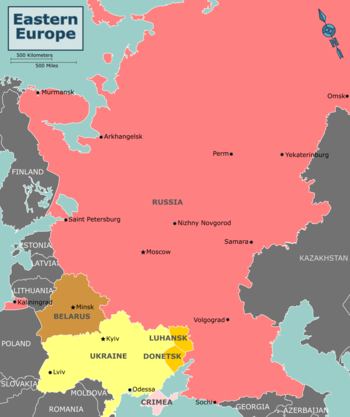
Although part of Kazakhstan is west of the Ural River and thus in Europe, the country is mainly in Central Asia and covered as part of that region.
For the south-easternmost part of Europe, see Caucasus .
Cities [ edit ]

- 55.790833 49.114444 1 Kazan — the capital of Tatar culture is an attractive city in the heart of the Volga Region with an impressive kremlin
- 50.45 30.523611 2 Kyiv (Kiev) — Ukraine's capital with heritage from the Viking Age
- 53.902246 27.561837 3 Minsk — capital of Belarus
- 55.755833 37.617778 4 Moscow — the heart and brain of the largest country on Earth, Moscow has the heritage of both the tsars and the Soviets and all the other current or former occupants of the Kremlin
- 46.485722 30.743444 5 Odesa — a harbour city on the Black Sea with a mixture of different cultures.
- 59.95 30.316667 6 Saint Petersburg — Russia's gateway to the West
- 44.605 33.5225 7 Sevastopol — a port city on the Crimea
- 43.585278 39.720278 8 Sochi — a city on the Black Sea which hosted the 2014 Winter Olympics
- 48.708611 44.514722 9 Volgograd — formerly called Stalingrad, this city was the scene of perhaps the deciding battle of World War II , and now home to a massive war memorial
Other destinations [ edit ]
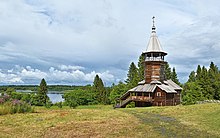
- 56.832113 60.348417 1 Border of Europe and Asia — it's clearly defined near Yekaterinburg , and a very popular stop for photo ops straddling the continents!
- 56.8 39.79 2 Golden Ring — a loop of pretty historical cities and towns forming a ring northeast of Moscow
- 65.07 60.15 4 Komi Virgin Forests — profoundly remote, and hard-to-visit, but this is by far Europe's largest wild area, containing Europe's largest National Park, Yugyd Va
- 57.016667 28.916667 5 Pushkinskiye Gory — the estate and museum of Alexander Pushkin, a world-known Russian poet.
- 51.272222 30.224167 6 Chernobyl — tour the site of the infamous 1986 nuclear disaster
- 48.75 30.2166 9 Uman — city in central Ukraine with the famous Sofiyivka Park
Understand [ edit ]
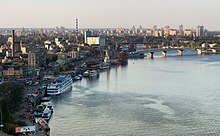
This article covers Belarus, Russia and Ukraine, all of which use East Slavic languages and share a common heritage going back to the Russian Empire and the Soviet Union , with Orthodox Christianity as the dominant religion. Parts of Western Ukraine , including the city of Lviv , have a Catholic majority, albeit one that celebrates its liturgy according to the Eastern rite.
During the Cold War a different definition of "Eastern Europe" was used, at least in the Western press and history textbooks. It included all the Communist countries of Europe which were members of the Warsaw Pact alliance, excluding the Soviet Union. In Churchill's phrase, these were the countries behind the "Iron Curtain".
Countries that were included in that definition but are treated in other region articles here are:
- Bulgaria , much like the countries covered here, with a South Slavic language and a strong Orthodox church
- Poland , the Czech Republic and Slovakia , with West Slavic languages and largely Roman Catholic
- The former East Germany , now part of the reunited Germany
Some countries in Europe were lumped in with Eastern Europe by some because they were Communist, although they were not part of the Warsaw Pact and neither geographically nor linguistically East European. These were:
- Yugoslavia — now Serbia , Croatia , Slovenia , Bosnia and Herzegovina , Montenegro , North Macedonia and Kosovo
- Albania (was in the pact, but withdrew from it in the 1960s)
A broader definition could include the following former Soviet republics and areas:
- Russia, Belarus and Ukraine, which we cover here
- Moldova and the not-widely-recognised breakaway country of Transnistria
- The Baltic states : Lithuania , Latvia and Estonia
- Georgia , Armenia and Azerbaijan
- Abkhazia and South Ossetia , which are secessionist states, not widely recognised by other countries
History [ edit ]

Since ancient times, nomadic peoples have travelled across the Eastern European plains, forests and tundras. The Rus were a tribe of partially Scandinavian origin (see Vikings and the Old Norse ) which settled along the rivers of eastern Europe from the 9th century and onwards, and over time became assimilated by the local Slavic population, with their name surviving in the names of Russia and Belarus. In the 13th century, the Mongol Empire conquered the Eurasian plains and vassalised many Slavic nations under the Golden Horde. The Russians eventually defeated the Mongols, and in 1547 Ivan IV proclaimed himself Czar of Russia, a country which was to expand south to the Caspian Sea, and east to the Pacific Ocean. Most of today's Belarus and Ukraine were part of the Polish-Lithuanian commonwealth .
In 1721, Peter the Great defeated the Swedish Empire in the Great Northern War, and proclaimed himself to be Emperor of the Russian Empire , which became one of Europe's and the world's great powers.
The Russian Empire was drawn into World War I , which led to the Russian Revolutions (February and October). The Soviet Union was the product of the October Revolution, and after it consolidated control over Russia, it was able to take over the other states defined as Eastern Europe in this article. The Soviet Union was hit hard by World War II in Europe , and was one of the adversaries of Cold War Europe until dissolved in 1991, with Russia, Belarus and Ukraine becoming sovereign countries. The Soviet power structure still remains in the region, as Russia keeps Belarus as a close ally, and makes claims on Ukraine.
Talk [ edit ]
Russian , Belarusian and Ukrainian are the East Slavic languages, together with the Rusyn language, which is spoken locally in the Carpathians. The East Slavic languages are written with Cyrillic script and are to some degree intelligible to each other. Ukrainian and Belarusian are mutually intelligible to a large extent, while Russian significantly more challenging for those who only speak Ukrainian or Belarusian and vice versa. Russian was the common language for inter-ethnic communication in the Soviet Union and is commonly used in Belarus, as well as in eastern and southern Ukraine.
30 million people in Russia have a mother language other than Russian; see Minority cultures of Russia . In Western Ukraine, there are also minority communities who speak Polish, Romanian or Hungarian as their mother tongues.
English was not commonly taught during the Soviet era but can be understood by educated young people.
Get in [ edit ]
By plane [ edit ], by train [ edit ].
The Trans-Siberian Railway from Beijing and Vladivostok to Moscow is a classic rail journey. The Almaty – Urumqi service runs twice per week, and Moscow is easily reached from Almaty by train.
Get around [ edit ]
Due to the war, transportation between Ukraine and Russia is shut down.
See [ edit ]
The Russian Empire was a patron of European art and European classical music , in particular in Saint Petersburg and Moscow. The autonomous republics are known for their local folk culture, see minority cultures of Russia .
Do [ edit ]
The vast sceneries of the countries give opportunities for outdoor life .
Eat [ edit ]
In such an area covering very different climates, there are different cuisines. Due to spontaneous and forced migration inside the Russian Empire and later the Soviet Union, traditions from far away can be found in surprising places, and of course in cities such as Moscow. Russian cuisine is the dominant culinary tradition in much of this area. The cuisines of Belarus and Ukraine are related to Central European cuisines, particularly those of other Slavic countries. There are also influences from Balkan cuisine, Georgian cuisine and Chinese cuisine .
Drink [ edit ]
Tea is the traditional hot drink.
Eastern Europe is part of the "vodka belt", with both plain and seasoned vodka. Crimea and Carpathian Ukraine are known for wine .
Mead and kvass are lighter beverages typical to the region.
Stay safe [ edit ]
Other than the geopolitical situation in the region, Eastern Europe is generally safe for tourists. However, most of this region has cold winters , with Russia being notorious for its frigid weather.
Go next [ edit ]
- Nordic countries , Baltic countries , Balkans
- Has custom banner
- Has warning box
- Has mapframe
- Maps with non-default alignment
- Maps with non-default size
- Has map markers
- All destination articles
- Outline regions
- Outline articles
- Region articles
- Has Geo parameter
- Articles Geo different to Wikidata
- Pages with maps
Navigation menu

2 Weeks in Eastern Europe: 5 Itineraries
DISCLAIMER: This post might have links to travel services and products that we enjoy. We might make a commission from it at no extra cost to you.
Despite being frequently overshadowed by its Western counterparts, Eastern Europe deserves a slot on your travel bucket list. From charming towns, natural beauty, and vibrant culture, I’ll highlight why this region should be on your radar.
The Caucasus Mountains, Adriatic, Caspian, and Black seas on the South and the Barents and Baltic seas on the North border the Eastern part of Europe. The countries within Eastern Europe include Bulgaria, Belarus, the Czech Republic, Poland, Hungary, Moldova, Romania, Ukraine, Slovakia, and the Western portion of the Russian Federation.
You can see a lot of places in just 2 weeks in Eastern Europe. Choose countries that are near one another to save some time. Go see some castles, eat local dishes, go wild swimming or rent a boat and enjoy the ocean.
ALSO READ: 2 weeks in Poland and Things to know before going to East Europe
THINGS TO KNOW BEFORE VISITING EAST EUROPE

Eastern Europe is a massive region. It’s understandable if you feel a bit overwhelmed planning your trip. Creating a travel itinerary and researching each destination shouldn’t be too stressful of a task. It should be exciting, something to look forward to.
To help you ease some of the stress and confusion, I put together some tips and things that you should know about spending a holiday in East Europe.
When is the best time to go to East Europe
Depending on the activities you plan to do, you can visit Eastern Europe anytime. For example, if you prefer to spend time on the beach and the coast, spring to summer are two great time to visit. The destination perfect for this time of the year is Greece, Montenegro, Albania, and Croatia.
But if you want to do some hiking in the autumn season or skiing in winter, Georgia, Bosnia and Herzegovina, Romania, Serbia, Bulgaria, Slovakia, Slovenia , Montenegro, and Poland offer affordable yet fantastic ski resorts.
Are 2 weeks enough for East Europe
14 days is not enough time to explore an entire European region. Sure, the continent is small with a fantastic transportation system, but there is so much to see. To make the most out of your time, it’s best to decide first which activities you want to do, attractions to see, and country you prefer.
With that information, you can plan your 2 weeks in Eastern Europe much better. Choosing the right mode of transportation will either make your trip better or worse. For example, although most parts of Europe have an open border policy, not all countries in the east practice this.
Meaning if you rent a car in Croatia, bringing it all the way to Albania might be an easy task. I’ll discuss more about transportation in the next section.
Getting around
If you want to rent a car, consider leasing from major brands such as Avis, Budget, Hertz, Sixt, Europcar, and AutoEurope. From there, you can check which companies will allow you to take the vehicle in all the countries you want to see.
Let’s say you picked up your car in Zagreb, but your trip ends in Tirana. Ask AutoEurope if you can pick up from Croatia and drop off the vehicle in Albania.
But if that sounds like too much trouble, another option is to rely on buses, trains, and planes . You can also rent a car in each country as you discover the things on your list, drop it at the airport or any city before you cross the border, and then get another car at your next destination.
Language and currency
Eastern European countries under a single currency called the euro include Croatia, Estonia, Greece, Latvia, Lithuania, Montenegro, and Slovakia. Whereas Albania, Bosnia and Herzegovina, Bulgaria, Czechia, Hungary, Romania, and Serbia are the countries that have decided to remain with their own currencies.
Many Eastern European countries are members of the EU and implement the Schengen State visa policy. This means that if you’re travelling to Greece, Poland, Lithuania, Estonia, Latvia, Croatia, Czechia, Slovakia, Hungary, and Estonia, and your hold a passport from the US, UK, Japan, Australia, New Zealand, Malaysia, South Korea, Singapore, and many places in Latin America, you can enter and travel for up to 90 days .
Albania, Bosnia and Herzegovina, Montenegro, Romania, Bulgaria, and Serbia are not part of the Schengen State (although some are part of the EU). These countries pretty much have the same visa policy as Schengen, with some differences.
For example, Albania allows US citizens to stay for up to 1 year, while EU passport holders can stay for 90 days. Serbia allows some other countries, such as Russia, to stay for 30 days.
On the other hand, many of these countries (non-Schengen member) allows substitute visa. This means that if you hold a valid visa from the UK, US, and Schengen, these visas are valid in these countries too. Each country accepts different substitute visas and validity of stay, so check these before going .
- Serbia visa policy
- Albania visa policy
- Bosnia and Herzegovina visa policy
- Montenegro visa policy
- Schengen State visa policy
What is the average cost for 2 weeks in Eastern Europe
The Baltics and probably Greece might be the most costly in Eastern Europe, but it’s still cheaper than in West and Central Europe. Food, transportation, and tours are pretty much the same cost across the eastern region. The accommodation is where you’ll notice a bit of difference.
For a mid-range budget, $1,300 is good for 14 days in East Europe . You can enjoy a private room and eat out throughout your trip. If you need to travel on a shoestring budget, you can do it at $900 while sleeping in dorm rooms and most eating street food or dining at local restaurants.
If you plan to spend 2 weeks in Eastern Europe as a celebration, you can do it as a luxury trip with a budget of $2,000 . With this budget, you can stay in four or five-star hotels, eat out, and enjoy private tours.
Other basic travel tips
Pinned map of top things to see in east europe.
Albania, Bulgaria, Croatia, Czechia, Estonia, Greece, Hungary :
Latvia, Lithuania, Montenegro, Poland, Romania, Serbia, Slovakia :
Click the icon on the top right to enlarge the map. Credit: map data: Google
2 WEEKS IN EASTERN EUROPE ITINERARY
If you are planning to travel for 14 days in East Europe but need some direction, this guide is for you. With the help of this two-week itinerary for East Europe, which highlights the best sights, you can plan the perfect getaway with your friends, family, or even yourself.
Eastern Europe has lovely mountain villages, magnificent castles and palaces, and stunning beaches. To help you devise your itinerary, I’ve provided 5 sample itineraries that you may select from and adjust to match your 14 days in East Europe.
Itinerary #1: The Baltics – Lithuania, Latvia, Estonia
The Baltics, commonly known as the Baltic States, are three nations: Lithuania, Latvia, and Estonia, located on the Eastern shore of the Baltic Sea. In addition to providing a fairy tale experience in its small villages and forests, the Baltic countries give a more authentic look into the history of Eastern Europe.
From its medieval roots to the tragic battles for independence. Your 2 weeks in Eastern Europe trip here will captivate you at every turn. We have a specific article on how you can spend 2 weeks in the Baltics , there are two itineraries you can choose from.
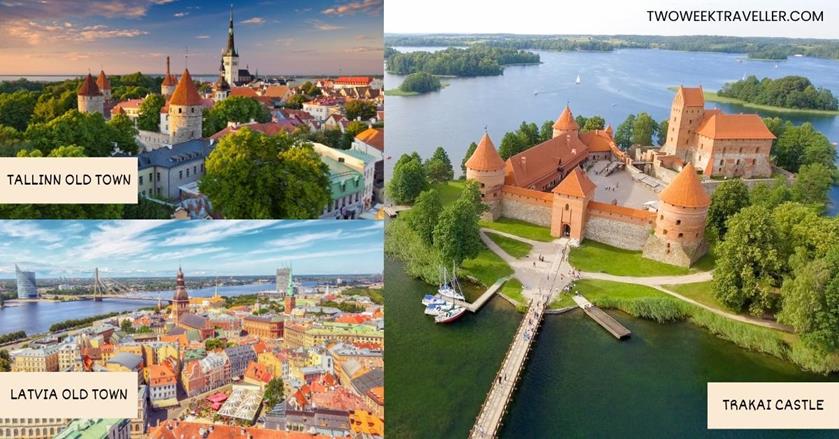
Estonia for 5 days
Start your adventure in Tallinn, the capital of Estonia, where you may stroll around The Old Town, designated a UNESCO World Heritage Site in 1997 and features ancient churches and cobblestone streets. There is much to see and discover outside the city, including the Aleksander Nevski Cathedral, the pink Toompea Castle, and the Lennusadam Seaplane Harbour Museum.
Latvia for 4 days
Riga, the capital of Latvia, is a crossroads of many countries and civilisations. To discover the city’s diversity, visit Riga’s Central Market, the biggest indoor market in Europe with over 3,000 stalls. Here, you can choose souvenirs, sample authentic street food, or consume fresh goods from nearby Latvian farms.
Lithuania for 4 days
End your vacation in Vilnius, Lithuania’s capital, where you can begin your day with some pastries from the historic Hales Market. Ensure to visit its primary landmark, the 14th-century Trakai Castle, in the middle of Lake Galve. You can stop by the historical Gate of Dawn and check out the Museum of Occupations and Freedom Fights during your stay here.
Begin your trip in Estonia, and take a 50 min direct flight from Tallinn to Riga to reach Latvia. Afterwards, fly from Riga to Vilnius for around 50 min to arrive in Lithuania. Alternatively, you can opt for bus services such as Lux Express or car rental for convenient transfer between countries, which often takes roughly 4-5 hr.
Itinerary #2: The Beach – Greece, Croatia, Albania or Montenegro
If you’ve been daydreaming about pristine beaches and considering travelling to a unique location, take this as your cue to get tickets. If you visit Eastern Europe’s magnificent cities and attractions, you’ll discover more than just its numerous islands and breathtaking beaches. Although tourism is still growing in this region, it offers a cheap and beautiful getaway.

Greece for 5 days
Greece is best known for its fascinating culture and natural beauty. It is home to some of the world’s most significant historical sites and over 6,000 islands. The top sights to see on the mainland, besides the capital Athens, are the monasteries of Meteora and Ancient Delphi. However, most visitors travel here to board a ferry for one of the famous islands, which include Crete, Corfu, Mykonos, Santorini, and Zakynthos.
If you’re looking for an island that has it all but is not too far from Athens, how about Milos? It’s rich in history but also offers a unique landscape due to volcanic activities in the past. There are minerals, lava rocks, and fantastic beaches. Stay in one of the best hotels in Milos facing the beach and enjoy the stunning Aegean Sea for the sunset. In the morning, you can visit the island’s Papafragas Caves and archaeological sites.
Croatia for 5 days
Croatia’s most famous beach, Ziatna Rat, is also known as the Golden Horn or Golden Cape because of its distinctively shaped shoreline and scattered sparkling pebbles lined up with umbrellas and sunbeds that line the beach during summer.
The Banje Beach in Dubrovnik is big enough for groups and romantic enough for couples. It offers a chance to dip yourself in the water and is a great place to watch the sun go down. If you just want to spend time in Croatia, we have two weeks in Croatia guide featuring 3 itineraries.
Albania for 4 days
Among Europe’s best-kept secrets, Albania provides a long stretch of coastline called the Albanian Riviera and famous beach towns like Dhermi and Ksamil. The Budva Riveria, which stretches down the Montenegrin coastline, is a popular summer beach resort for tourists and locals. This area has several outstanding beaches, with Mogren Beach being the one nearest to Old Town Budva.
Getting from one place to another
Begin your 2 weeks in Eastern Europe trip in Greece, and take a flight from Athens to Zagreb that takes 3 hr 50 min to reach Croatia. The best way to get from Croatia to Albania is to fly from Zagreb, which takes 2 hr 39 min. To reach Montenegro, take a nonstop flight from Zagreb to Podgorica for 1 hr 10 min.
Itinerary #3: Czechia, Slovakia, Hungary
Czechia, Slovakia, and Hungary offer you exciting culture, unique dishes, and very diverse culture. As you can see, These three countries are not too far from central Europe. This means that while travelling this region, you can clearly see the fascinating transition from Western Europe, to Central, and then entering Eastern Europe.
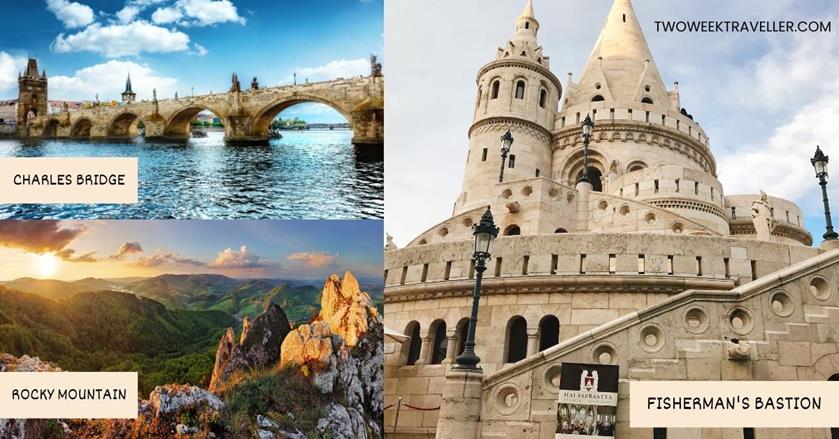
Czechia for 4 days
Despite being one of the smaller countries on the continent, travellers seeking some of the top destinations in Eastern Europe won’t be let down by the Czechia, formerly known as Czech Republic. The Prague Castle, home to the stunning St. George’s Basilica, the Powder Tower, St. Vitus Cathedral, and the Golden Lane, with its ancient workshops, serves as the main attraction for most tourists here.
Slovakia for 5 days
Slovakia is a paradise for outdoor enthusiasts, known for its national parks, beautiful hiking trails, and numerous caves, several of which are UNESCO-protected sites. With an astounding 19 natural reserves, more than 350 caverns, and hundreds of canyons and gorges, the Slovak Paradise National Park ought to be at the top of your list of places to go while you’re there. Alpine skiing is particularly common in this area, and you may experience it in both the Low Tatras and the High Tatras mountain ranges.
Hungary for 5 days
Hungary is bordered on both sides by the lovely Danube River, and the Freedom Bridge offers some of the prettiest sunset views of the river. Suppose you’re seeking a trip that mixes some rest with a solid cultural experience. This country is for you since it is home to numerous old spa towns and facilities, including Lake Heviz and Szechenyi Thermal Bath. While touring Budapest, swing by the Hungarian Parliament Building, as it has a regal appearance and is beautiful at night when lit.
Take a 1 hr 10 min nonstop flight from Prague to Budapest to get from the Czech Republic to Hungary. Take a 2 hr 55 min trip from Budapest to Kosice to travel from Hungary to Slovakia.
Itinerary #4: Romania, Bulgaria, Serbia
Romania, Bulgaria, and Serbia are a fun trio to spend 14 days exploring. You can visit beaches, go hiking, learn about the history, party, and also explore the gastronic culture of the Eastern Europe.
Since all of these countries share a land border, it’s very easy to cross from one place to another. You can do it by bus which would be the cheapest way, but there are also trainlines and flights.

Romania for 6 days
Romania is one of the cheapest travel locations in Europe, particularly if you plan to go hiking in the Carpathian Mountains. Among Bucharest’s most stunning structures include The Old Town, Arch of Triumph, and Revolutionary Square. Don’t miss The Palace of the Parliament, which features over 3,000 rooms built with marble and steel.
Bulgaria for 4 days
Another inexpensive destination is Bulgaria, where you can enjoy a summer holiday by the Black Sea. For outdoor enthusiasts, you can find a variety of hiking trails and beautiful views at the famous Vitosha Mountain or the Central Balkan National Park. Some of Sofia’s notable attractions that you should visit include St. George Rotunda Church and Boyana Church.
Serbia for 4 days
Serbia, abundant with wonders just waiting to be discovered, is a great place to end your journey. You can start exploring the Town Halls and the Presidential Palace, but a trip down Kneza Mihaila street is a better way to take in historic structures. Other attractions are Nikola Tesla Museum, Belgrade Fortress, and the Great War Island.
To get from Bulgaria to Serbia, take a nonstop flight from Sofia to Belgrade, which takes 1 hr 10 min. After your trip to Serbia, take a nonstop flight from Belgrade to Bucharest, which lasts an average of 1 hr 25 min to arrive in Romania.
Itinerary #5: Off-the-beaten-path – Bosnia and Herzegovina, Montenegro, and Albania
Make your trip memorable by skipping Europe’s typical destinations and heading off the beaten track. While Western European countries swarm with travellers worldwide, these countries are just as stunning and historical that often remain uncrowded.
With various unique attractions, consider these overlooked European gems for your upcoming holiday. Most of these places are in Southern Europe , so if that’s the region you’re interested in in, this itinerary will suit you.
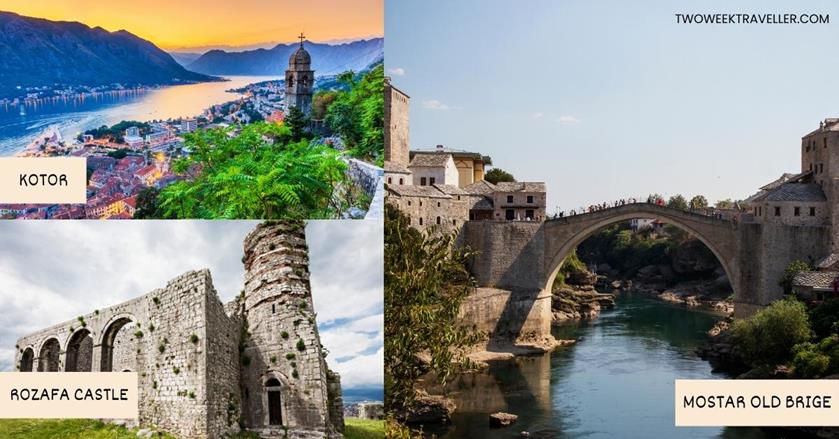
Bosnia and Herzegovina for 5 days
Discover the Old Town of Bosnia and Herzegovina, which includes the Mosque of Mostar and the Stari Most, and dip in the pools of Kravice Waterfalls. Keep your camera ready as you walk past the gorgeous Neretva River. The central city of Sarajevo is within a short drive from a range of affordable ski resorts, including Jahorina and Babin Do.
Montenegro for 4 days
The 15th-century village of Sveti Stefan, encircled by pink sand beaches, and its seafood restaurant have established this region as a popular tourist destination in Montenegro. The greatest way to experience Tara Canyon, the second-deepest canyon in the world, is on an exhilarating whitewater rafting adventure. Don’t forget to visit the Pavlova Strana viewpoint to admire the Rijeka Cronjevica River.
Albania 5 days
Hiking the Albanian Alps is considered one of the highlights of touring Albania because of its gorgeous snow-capped peaks, lovely valleys, and breathtaking canyon. To see the breathtaking sunset over the entire city of Tirana, take a cable car up to the summit of Dajti Mountain. I highly urge visiting The Sunset Restorat Bar, a restaurant perched atop a cliff above Filikuri Beach with views of Himara’s coastline and the Southern Albanian mountains.
You can begin your journey in Albania and fly from Tirana to Podgorica in 3 hr 20 min to reach Montenegro. Take a 5 hr 35 min flight from Podgorica to Sarajevo to get to Bosnia & Herzegovina.
THINGS TO SEE AND DO
This section lists the best things to do and places to see in each country to help plan your itinerary. Everything is categorised by country. After this section, you’ll see a list of must-try dishes in each country.
- The Blue Eye/Syri i Kaltër
- Skanderbeg Square
- Llogara National Park
- Rozafa Castle
- Amphitheatre of Durrës
- Good Cave (Shpella e Mirë besh)
- Preza Castle
- Vjosë-NartëDelta Protected Area
- Berat Castle
- Castle of Gjirokastra
- Et’hem Bej Mosque
- Ulza Regional Nature Park
- Parku Kombëtar Shebenik
- Pyramid of Tirana
- Buna River – Velipoja
Bosnia and Herzegovina
- Mostar Old Bridge
- Latin Bridge
- Sarajevo Tunnel
- Mlinčići/Jaice
- Sarajevo City Hall
- Gazi Husrev-beg Mosque
- Dervish House
- Štrbački buk Bosnia
- Avaz Twist Tower
- Pliva Waterfall
- Vrelo Bosne
- Mehmed Paša Sokolović Bridge
- Apparition Hill
- Kozara National Park
- Kastel Fortress
- Bjelašnica – skiing and mountain biking
- Black Sea Cruise with Lunch
- National Palace of Culture in Sofia
- Sofia History Museum
- Varna Gourmet and Wine Tasting
- Belogradchik Rocks
- Prohodna Cave in Karlukovo
- Rila Monastery & Boyana Church tour
- Krushuna Waterfalls
- The Rose Valley near Kazanluk
- Skopje (N. Macedonia) day tour
- Dubrovnik’s Old Town Walls – join a walking tour
- Trsteno Arboretum, Trsteno near Dubrovnik
- Dubrovnik’s Lovrijenac Fort
- Visit Game of Thrones filming locations – book a tour
- Nikola Tesla Technical Museum in Zagreb
- Diocletian’s Palace in Split – enjoy a walking tour with a local guide
- Mulini Beach in Rovinj
- Blue Cave, near Split – book the 5 island boat tour
- Museum of Broken Relationships
- Krka Waterfalls, near Split – visit on a boat tour
- Plitvice Lakes National Park near Zadar
- Kornati National Park near Zadar
- Euphrasian Basilica in Porec
- Pula’s Roman Arena
- Swim at Galebove Stijene in Pula
- Explore Brijuni/Brioni National Park near Pula
- Great Waterfall
- Golden Horn Beach
- National Park Kornati
- Paklenica National Park
- Rector’s Palace
- Cathedral of Zagreb
- Katedrala sv. Jakov
- Crkva sv. Donata
- Trakoscan Castle
- Dubrovnik Cable Car
- The Cathedral of the Assumption of the Virgin
- Park Maksimir
- Skradinski Buk Waterfall
- Temple of Augustus
- Park Šuma Marjan
- Hvar Island
- Sightseeing Dinner Cruise
- Prague Castle
- Charles Bridge
- Prague City tour
- Prague Astronomical Clock
- St. Vitus Cathedral
- Medieval Dinner
- Dancing House
- Old Town Square
- Brno Walking Tour
- Lennon Wall
- Národní Muzeum
- Karlštejn Castle
- Petrin Tower
- Church of Our Lady before Týn
- The Powder Tower
- Sedlec Ossuary
- State Castle and Chateau Český Krumlov
- Klementinum
- Tallinn Walking tour
- St. Olaf’s Church
- Lahemaa National Park
- Alexander Nevsky Cathedral
- Join a city tour – either a walking tour or 2-hour guided tour or an electric bike tour or push bike tour
- Kadriorg Art Museum
- Tallinn TV Tower
- Danish King’s Garden
- Estonian cuisine – do a 3-hour food tour or a food tour with a market visit on a bike
- Go on a Shore Excursion – check out this tour or cruise port with a bike tour
- Tallinn Town Hall
- Estonian Open Air Museum
- Day trip to Lahemaa National Park – read the reviews
- Day trip to Parnu
- Day trip to Helsinki, Finland by ferry
- Acropolis of Athens and Acropolis Museum
- Temple of Olympian Zeus
- National Archaeological Museum
- Ancient Agora of Athens
- Balos Beach
- The archaeological site of Mycenae
- Odeon of Herodes Atticus
- Panathenaic Stadium
- Archaeological Site of Sounion
- Melissani Cave
- Porto Katsiki
- Budapest hop-on-hop-off bus
- Hungarian Parliament Building
- Budapest’s Széchenyi Thermal Bath – book a full-day spa
- Buda Castle
- Buy souvenirs at Central Market Hall
- Take a boat cruise Danube River in Budapest – check cruise prices
- Matthias Church in Budapest
- Esztergom Basilica
- The Caves of Lillafured near Miskolc
- Lavender field at Tihany
- St. Stephen’s Basilica
- Széchenyi Chain Bridge
- Heroes Square
- Central Market Hall
- Matthias Church
- Gellért Thermal Bath
- Dohány Street Synagogue
- Vajdahunyad Castle
- Shoes on the Danube Bank
- Szimpla Kert
- Rudas Baths
- City Park of Budapest
- New York Café
- Riga day trip
- Riga hop-on-hop-off bus
- Sigulda and Gaugja National Park
- Explore Riga downtown on a walking tour or Old and New walking tour
- House of the Black Heads
- Riga Central Market – go on a food-tasting tour
- St. Peter’s Church
- Beer or Cide tour – check this bike tour
- The Freedom Monument
- Latvia Palace – and medieval castle tour
- Riga Cathedral
- Day trip to Rundale Palace and Hill of Crosses – check the tour cost
- Three Brothers, Latvian Museum of Architecture
- Art Nouveau Building – sign up for an architectural bike tour
- Latvian National Museum of Art
- Go on a pub crawl
- Daugava River – go on a boat tour or this one
- Day trip to Jelgava
- Try out the shooting range – read the reviews
- Museum of the Occupation of Latvia
- Day trip to Sigulda and Turaida – look at the price
- Trakai Castle from Vilnius – do an audio guide tour or one with a guide
- Curonian Spit tour
- Bernardine Garden
- Hill of Crosses tour
- Vilnius via a walking tour or bike tour
- Gediminas Castle Tower
- Jewish Quarter and Soviet Sites
- Vilnius Cathedral
- St. Anne’s Church
- Hill of Crosses – day trip from Vilnius
- Gates of Dawn
- Hot air balloon over the city – read the reviews
- Museum of Occupations and Freedom
- Cathedral Square
- Learn about Lithuanian cuisine – book a walking food tour or dinner with a local family
- Three Crosses Monument
- Palace of the Grand Dukes of Lithuania
- Full-day tour around Vilnius, to Trakai, and Keranve – check the tour price
- Vingus Park
- Walk around Uzupis – the art district of Vilnius
- Day trip to Paneriai Memorial Park – a tour that includes Trakai Castle
- Great Montenegro Tour – including Lovcen, River of Crnojecvic, and Sveti Stefan
- Ostrog Monastery
- Durmitor – explore Northern Montenegro
- Old Olive Tree
- Lady of the Rocks – plan a tour with Blue Cave
- Lovćen National Park – join a full day tour
- Crno Jezero
- Perast Old Town – day trip from Kotor
- Đurđevića Tara Bridge
- Tara River – go whitewater rafting
- Perast Beach
- Lake Skadar – boat tour from Virpazar to Kom Monastery
- Church of the Madonna dello Scalpello
- Kotor Bay – discover Kotor Old Town
- Former Austro-Hungarian Fort
- Blue Cave – boat tour including Lady of the Rocks and Mamula
- Skadar Lake National Park
- Wine and food tour – look up the price
- Independence Square
- Kayaking in Budva – check the tour price
- Wieliczka Salt Mine Tour
- Rynek Glowny
- Schindler’s Factory
- St. Mary’s Basilica
- Auschwitz-Birkenau Tour
- Palace of Culture and Science
- Ghetto Walking Tour
- The Royal Castles in Warsaw
- Chopin Concert
- Energylandia
- Hop-on Hop-off Bus
- Wroclaw Market Square
- Gdansk beach day and – City & Boat Tour
- Zamek Wawel
- Gdansk Walking Tour
- Marlbork Castle
- Stutthof Concentration Camp Tour
- Timisoara day tour
- Romanian Athenaeum in Bucharest
- National Museum of Romanian History in Bucharest
- Turda Salt Mines and Rimetea tour
- Dimitrie Gusti National Village Museum in Bucharest
- Cluj Medieval City tour
- Grigore Antipa National Museum of Natural History in Bucharest
- Dracula’s Castle & Birthplace
- Covered Stairway in Sighisoara
- The Black Church in Brasov
- Bran Castle and Dracula’s Castle tour
- The Clock Tower in Sighisoara
- Old Town Brasov tour
- Bucegi Natural Park near Brasoc
- Transylvanian Alps
- Novi Sad & Sremski Karlovci tour
- Uvac Meanders
- Full day Belgrade tour
- Belgrade Fortress
- Saint Sava Temple
- Go on a cruise around Belgrade – 2-hour city cruise or a sunset cruise
- Republic Square
- Book a Red Belgrade Communist Tour – check the price
- Nikola Tesla Museum
- Sargan Eight Railway – and House on Drina River, book a tour
- Ada Ciganlija
- Golubac Fortress – day tour from Belgrade with Iron Gate tour
- Studenica Monastery and Manasija Monastery – book a tour with Lisine Waterfall
- Manastir Žiča
- Day trip to Eastern Serbia – read the reviews
- Kopaonik National Park
- Holy Martyr George
- Stopić Cave
- Tasmajdan Park
- Aeronautical Museum in Belgrade
- Skull Tower
- Nature Park Sicevo Canyon
- Bratislava Sightseeing by traditional bus or segway tour or walking tour
- Bratislava Castle
- Michael’s Gate
- Soviet Era and Post-Communist Tour
- St. Martin’s Cathedral
- Devín Castle – 3-hour guided tour
- Spiš Castle
- The Blue Church – Church of St. Elizabeth
- Book a food tour – look at the price or a wine tasting tour
- Castle of Spirits (Bojnice Castle)
- Presidential Palace
- Orava Castle
- Tatralandia
- Primate’s Palace
- Dobšinská Ice Cave
- AquaCity Poprad
- Jasna Low Tatras
- Trenčín Castle
- Čachtice Castle
- Slovak Paradise National Park
- Demänovská Ice Cave
- The Ľubovňa Castle
WHERE TO STAY IN EAST EUROPE
This list of accommodations in Eastern Europe will help you find the one that suits your budget and level of comfort a lost easier:
Vilnius, Lithuania
- Affordable: Jimmy Jumps House or Mikalo House or Downtown Forest Hostel & Camping
- Mid-range: Comfort Hotel Rock n Roll or Domus Maria or Come2Rest – Subaciaus 5 or Art City Inn
- Luxury: Hotel Vilnia or Novotel or Neringa Hotel or Radisson Blue or Congress Avenue Hotel
Riga, Latvia
- Affordable: Orange Cat Rooms or Cinnamon Sally Backpackers Hostel or Blue Bird Hostel
- Mid-range: Avalon Hotel & Conferences or Wellton Riga Hotel & Spa or Hestia Hotel Draugi or Forums Boutique Hotel
- Luxury: Grand Palace Hotel or Neiburgs Hotel or Relais Le Chevalier or Hilton Garden Inn
Tallinn, Estonia
- Affordable: Alur Hostel & Bar or Villa Kadriorg Hostel or Imaginary Hostel
- Mid-range: Thomas’ Home or ibis Hotel or Rija Fonnental Design Hotel or St Olav Hotel
- Luxury: Revelton Suites or The von Stackelberg Hotel or Rixwell Collection Savoy Hotel or Radisson Collection Hotel or Centennial Hotel
Athens, Greece
Zagreb, croatia.
- Affordable: Apartments Lucky Place or Main Square Hostel
- Mid-range: Manda Heritage Hotel or Pod Zidon Rooms
- Luxury: Hotel Le Premier or Esplanade Zagreb Hotel and Sheraton Hotel
Tirana, Albania
Prague, czechia, bratislava, slovakia, budapest, hungary, bucharest, romania, sofia, bulgaria, sarajevo, bosnia and herzegovina, podgorica, montenegroo, must-try eastern european dishes, drinks, and snacks.
The cuisine in East Europe has lots in common, but still, there are plenty of dishes that only exist in specific countries Don’t forget to sit down at a local restaurant and try as many as you want.
- Borscht (Ukraine) – A beetroot-based soup
- Pierogi (Poland) – Dumplings with various fillings
- Ćevapi (Bosnia and Herzegovina) – Minced meat sausages
- Moussaka (Bulgaria) – Layered eggplant, potato, and meat casserole
- Pljeskavica (Serbia) – Meat patty, often served in a somun (like pita bread)
- Goulash (Hungary) – Meat stew seasoned with paprika
- Koldūnai (Lithuania) – Meat or vegetable-filled dumplings
- Sarmale (Romania) – Cabbage rolls stuffed with meat and rice
- Šopska Salata (Bulgaria) – Tomato, cucumber, and cheese salad
- Mămăligă (Romania) – Cornmeal porridge, similar to polenta
- Chvarci (Serbia) – Fried pork rinds
- Kotlet Schabowy (Poland) – Breaded and fried pork cutlet
- Lecso (Hungary) – Pepper and tomato stew, often with sausage
- Njeguški Stek (Montenegro) – Pork or veal steak stuffed with cheese and ham
- Tavë Kosi (Albania) – Yogurt and lamb baked casserole
- Souvlaki (Greece) – Grilled meat skewers, often served in pita bread with sauce
- Chimney Cake/Kürtőskalács (Hungary) – Cylindrical spit cake
- Sernik (Poland) – Cheesecake made with quark
- Túró Rudi (Hungary) – Chocolate-covered curd bar
- Papanasi (Romania) – Fried doughnuts with sour cream and fruit preserve
- Kvass (Ukraine, Baltics, Poland) – Fermented bread drink
- Živovoda/Slivovitz (Czech Republic) – Plum brandy
- Palinka (Hungary) – Fruit brandy
- Borovicka (Slovakia) – Juniper berry liqueur
- Compot (Ukraine) – Fruit drink made by boiling various fruits

SUMMARY OF 2 WEEKS IN EASTERN EUROPE
From hidden waterfalls, unspoiled mountains, and magnificent beaches, Eastern Europe offers a variety of natural beauty. If you’re looking for an epic journey that isn’t your conventional European vacation, this region will satisfy your adventurous heart.
Here, you can experience any type of climate. Enjoy the summer heat on Bulgaria’s Black Sea, go hiking in Slovakia’s High Tatras, or relax in a forest in Romania. Your two weeks in East Europe trip will take you through one of Europe’s most culturally diverse locations.
TO SAVE THIS ITINERARY, PIN THIS IMAGE BELOW:

Protect Your Trip »
Best eastern europe travel spots.
Eastern European countries are often overlooked in favor of popular Western European destinations, but they really shouldn't be. With rich history, gorgeous architecture and a variety of cultures, Eastern Europe offers a wealth of destinations to explore – and at a much lower price point. U.S. News considered attractions, amenities and more to determine the best places to visit in Eastern Europe. Don't forget to vote below for your favorite locations to help influence next year's list. As you're planning your trip abroad, it's best to consider international travel insurance for added protection. (Note: Some destinations were not considered in this ranking due to the Russia-Ukraine war.)
Transylvania
Tatra mountains, ceský krumlov, lake balaton, karlovy vary.

From Prague Castle to the Old Town Square to the famous Charles Bridge, Czechia's capital offers history and architecture that rivals any European city. Visit top sights like St. Vitus Cathedral and the Astronomical Clock at Old Town Hall, then wander through the Jewish Quarter to see the historic synagogues and one of the oldest surviving Jewish cemeteries of its kind. Prague is also about 60 miles northeast of Pilsen, the birthplace of Pilsner-style beer, so you'll find pints in bars on every corner.

The magic of Budapest lies in is its stunning historical architecture. You'll find fairy-tale-like structures, such as the neo-Gothic Fisherman's Bastion, the medieval Buda Castle, the neo-Renaissance St. Stephen's Basilica and the second-largest synagogue in the world, the Moorish Revival Dohány Street Synagogue. Plus, the "City of Spas" sits on top of 118 thermal springs and features several thermal baths, including the Széchenyi Baths and the Gellért Thermal Bath, making it an excellent destination for a relaxing vacation. Another bonus: Prices for lodging in this Hungarian city are a fraction of what you'll pay in cities like Rome and Paris.

With its sparkling blue water and ancient sights and streets, the seaside Croatian city of Split mixes stunning scenery with old-world charm. Visitors can stroll up and down Old Town's cobblestone streets, passing by fourth-century sights like the Cathedral of St. Domnius and Diocletian's Palace as they go. The palace, which was originally built to be the Roman emperor Diocletian's retirement home, is now one of the liveliest places in the city, with restaurants, bars and shops.

While you won't find any vampires here, a trip to Transylvania will make you feel like you've stepped inside a fictional land. Sitting in the shadow of the Carpathian Mountains, this region in Romania is best known for its dramatic scenery and medieval fortresses, churches and castles, including Bran Castle, Bram Stoker's inspiration for Count Dracula's home. Transylvania is also where you'll find some of Romania's most charming cities, such as Brasov and Sibiu. If you need a break from the area's rich history, check out the Turda Salt Mine, an underground amusement park built within a former salt mine.

Another gem in Croatia, this coastal city has gained popularity with travelers in recent years thanks to its picturesque location on the Adriatic Sea, its UNESCO-sanctioned Old City and its seafood-centric cuisine. For amazing photo ops, take a cable car up to the summit of Mount Srd for a bird's-eye view of the city and the nearby island of Lokrum. "Game of Thrones" fans will likely recognize many of Dubrovnik's sights, as much of the show was filmed here.

Bulgaria's capital and largest city makes an excellent vacation spot for travelers looking for a laid-back, affordable Eastern European trip. As one of Europe's oldest capital cities, Sofia has a rich history and culture, which visitors can learn about at the National History Museum, the Sofia History Museum and the Museum of Socialist Art. Another can't-miss attraction is the Alexander Nevsky Cathedral, one of Bulgaria's most famous (and eye-catching) landmarks. After sightseeing and museum hopping, vacationers can make their way to Borisova Gradina park to relax.

Estonia's capital city might not fit your typical idea of a vacation destination, but dig a little deeper and you'll be delighted by the beautiful Russian Orthodox architecture found at St. Alexander Nevsky Cathedral, the pink Toompea Castle (where parliament meets) and the regal Kadriorg Palace, which houses the Kadriorg Art Museum. Other can't-miss sights in Tallinn include the lower Old Town area and Lahemaa National Park, located roughly 30 miles northeast of the city. Before leaving, make sure you try some of the delicious chocolates made by Kalev Chocolate Shop, the oldest confectionary in Estonia.

A true fishing port, as well as a popular summer retreat, Rovinj, Croatia, is located on the western coast of the Istria peninsula in the Adriatic Sea. The town and its 14 surrounding islands, including the popular St. Catherine and Red islands, are scattered with picturesque sandy and pebbly beaches throughout. But with Rovinj's small size and big appeal, it can get crowded (and quickly) during peak travel season in late spring and summer, so you'll want to finalize your vacation plans at least a few months in advance.

Montenegro is less than 6,000 square miles (or slightly smaller than the size of Connecticut), but what this destination lacks in size it more than makes up for in charm. Medieval towns, magnificent mountains, breathtaking beaches and charismatic locals await you in this Balkan country. Wander past the red-roofed stone churches and romantic squares in Kotor, or view some of Montenegro's natural wonders, such as the startlingly blue Mediterranean waters surrounding Sveti Stefan and Tara Canyon, the second-deepest canyon in the world.

Many of Bucharest's tourist attractions offer insight into the city's communist history, including the Palace of Parliament, which features 1,100 rooms and is billed as the second-largest administrative building in the world. Visit the National Museum of the Romanian Peasant and the open-air National Museum of the Village Dimitrie Gusti to gain insight into the history of the Romanian people. Then, explore the charming Old Town area and enjoy Bucharest's impressive gastronomic offerings, which include a mix of traditional hearty dishes and modern international staples.

Bratislava is often called "the Beauty on the Danube" – and it's easy to see why. The Slovakian capital, a popular river cruise destination, is full of stunning architectural sights, including the art nouveau Blue Church, the Baroque Bratislava Castle and the Gothic St. Martin's Cathedral. What's more, Bratislava features all kinds of quirky bronze statues (think: a man in a manhole and a Napoleon army soldier hunched over a bench) scattered throughout the city. When the sun goes down, head to a bar, pub or club to get a taste of the city's superb nightlife scene.

This Lithuanian capital wows with its Baroque architecture, but it doesn't stay stuck in the past. Vilnius' Old Town offers an interesting mix of the old and the new, with cobblestone streets that lead to boutiques and trendy restaurants (head to Paupys Market for some of the most noteworthy spots). Be sure to take in the beautiful architecture of the Gates of Dawn shrine and the Church of St. Anne, and for panoramic city vistas, climb to Gediminas' Tower or take a ride to the revolving observation platform at the top of the Vilnius Television Tower.

You might be surprised to learn that of all of the destinations in Europe, the capital city of Slovenia is often considered one of the greenest cities on the continent. But once you get an eyeful of its expansive green spaces and car-free city center, it's easy to see why. Stroll through the charming Old Town, snap photos of sights like Ljubljana Castle and grab a bite at one of the many picturesque cafes that line the Ljubljanica river. If you're planning a winter visit, don't miss Ljubljana's Christmas market, when Old Town's Prešeren Square dazzles with lights and a towering tree.

This city on Poland's Baltic coast was made for scenic strolls. Admire the colorful architecture and Gothic Town Hall (all rebuilt after World War II) on Dlugi Targ Street, Gdansk's main thoroughfare, or peruse the galleries and jewelers on Mariacka Street. While in Old Town, visit St. Mary's Church, an immense Gothic structure. And you'd be remiss to skip a walk along the embankment of the Motlawa River, where you'll find a medieval crane and charming restaurants. Beyond its beautiful facades, Gdansk has an engrossing history that can be explored in museums like the European Solidarity Centre and the Museum of the Second World War.

Located in central Latvia on the gulf with the same name, Riga offers colorful, art nouveau architecture and a pedestrian-friendly Old Town. Take a tour of the House of the Black Heads before strolling through the picturesque Town Hall Square. Also save time for savoring authentic Latvian fare at a restaurant or Riga Central Market, one of the largest markets in Europe. And for a unique take on local history, head outside the city to the Ethnographic Open-Air Museum of Latvia, where you'll find 118 historical buildings that reflect Latvian culture through the ages.

Eastern Europe isn't only home to grand cities with magnificent architecture. Destinations like Latvia's Jurmala, the largest resort area in the Baltics, are ideal for a relaxing getaway. Jurmala's white sand beach stretches for more than 15 miles along the coast. Visitors can also cool off at Livu Akvaparks, the largest indoor water park in Latvia and one of the largest in Northern Europe. Away from the water, Jomas Street – Jurmala's main pedestrian thoroughfare – is a terrific place to take a leisurely stroll and grab a souvenir or bite to eat.

This mountain range on the Poland-Slovakia border is a popular destination for both winter and summer recreation. When snow hits the Tatras mid-December through April, Zakopane, Poland (about 70 miles south of Krakow) is the place to be for easy access to ski resorts, thermal springs and quaint wooden architecture. In warmer months (June through September), visitors hit trails that lead to peaks, valleys and high-lying lakes that rival the beauty of the Alps. During these months, the Slovakian side typically has fewer crowds and more dramatic scenery, though it's not as easily accessible.

?eský Krumlov, located in southwest Czech Republic, has preserved its medieval architecture and layout, making it a unique time capsule with storybook appeal. Most visitors make a beeline for its most imposing attraction –?eský Krumlov Castle. The castle complex, which consists of 40 buildings and palaces and spans roughly 17 acres, offers a glimpse into noble life dating back to the 14th century. Can't-miss sights include intricate palace interiors, an ornate Baroque theater, a bear moat, gardens and a tower with expansive views. Across the Vltava River, the winding streets of ?eský Krumlov's Old Town lend more stunning architecture, as well as pubs and shops.

Hungary's Lake Balaton, one of Europe's largest lakes, makes for an easy, relaxing day trip from Budapest. In summer, the lake's warm temperatures and shallow water make it a great place for swimming and sailing, while in winter, the lake's frozen surface gets thick enough for ice skating. A bike ride around the lake is also a must, as is exploring the lake's surrounding towns, which come alive with festivals throughout the summer. When travelers are ready to unwind, they can visit one of Lake Balaton's vineyards to sip a refreshing glass of white wine.

Less than 80 miles northwest of Prague, Karlovy Vary appeals to anyone looking for a rejuvenating vacation. The Czech Republic's famous spa town has no shortage of incredible wellness facilities that offer a range of treatments. When you're not busy relaxing, take some time to explore and see local sights like the Church of St. Mary Magdalene and the Mill Colonnade. You'll likely come across a few thermal springs while walking around. If so, take a drink from one of these springs; they're said to have healing properties. While you're here, treat yourself to a stay at one of the renowned luxury hotels in the area.
Vote to Add these Destinations to the Rankings

Veliko Tarnovo

Gjirokastër

Plitvice Lakes National Park

You May Be Interested In

Best Places to Visit in Europe for 2023-2024

Switzerland
Best Places to Visit in Switzerland

Best Cheap European Honeymoon Destinations

Best Places to Visit in Germany
World's best places to visit for 2023-2024.

Best Cheap European Vacations for 2023-2024
If you make a purchase from our site, we may earn a commission. This does not affect the quality or independence of our editorial content.
Recommended
The 18 Best Napa Valley Wineries to Visit in 2024
Lyn Mettler|Sharael Kolberg April 23, 2024

The 25 Best Beaches on the East Coast for 2024
Timothy J. Forster|Sharael Kolberg April 19, 2024

The 50 Best Hotels in the USA 2024
Christina Maggitas February 6, 2024

The 32 Most Famous Landmarks in the World
Gwen Pratesi|Timothy J. Forster February 1, 2024

9 Top All-Inclusive Resorts in Florida for 2024
Gwen Pratesi|Amanda Norcross January 5, 2024

24 Top All-Inclusive Resorts in the U.S. for 2024
Erin Evans January 4, 2024

26 Top Adults-Only All-Inclusive Resorts for 2024
Zach Watson December 28, 2023

Solo Vacations: The 36 Best Places to Travel Alone in 2024
Lyn Mettler|Erin Vasta December 22, 2023

26 Cheap Beach Vacations for Travelers on a Budget
Kyle McCarthy|Sharael Kolberg December 4, 2023

The 50 Most Beautiful White Sand Beaches in the World
Holly Johnson December 1, 2023


Touropia Travel Experts
Discover the World
25 Best Places to Visit in Eastern Europe

Eastern Europe might not be everyone’s number one travel destination. Communist-era buildings, the conflicts in the 1990s and border disputes in recent years have meant much of the region has been overlooked by potential tourists.
But with its patchwork of pretty, pastel-colored old towns, incredible ancient history, exciting nightlife, and nature from sprawling lakes to swooping mountains, Eastern Europe is a surprising delight. History, culture, nature, ethnicity – all of them mix into an intriguing swirl that’s making this part of Europe an increasingly popular vacation destination.
25. Vilnius
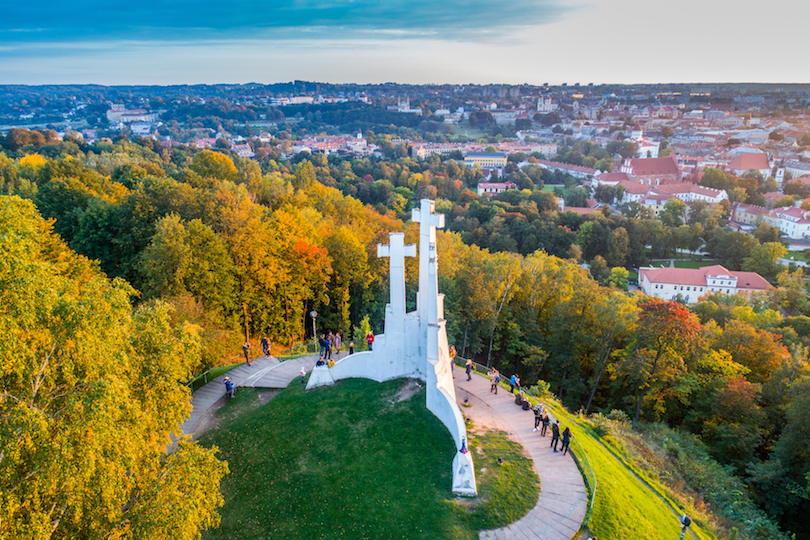
Vilnius is the Lithuanian capital which comes complete with a particularly beautiful old town. This heart of the city boasts Baroque architecture along its cobblestone streets. But you can see more than just Baroque: there’s the Gothic Saint Anne’s Church, the 16th-century Gate of Dawn, and the Neo-Classical Vilnius Cathedral.
Other than being home to Europe’s largest Baroque old town, Vilnius contains an array of bars and cafes hidden down charming alleyways and lining atmospheric courtyards. With a large population of students (over 20,000 of them), after night falls, Vilnius becomes a vibrant destination with flowing beer and live music.
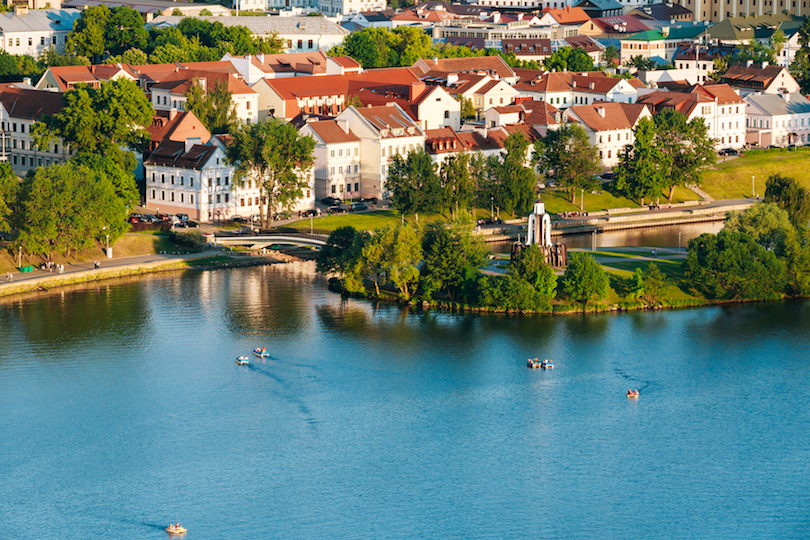
Minsk is the Belarusian capital. Completely destroyed during World War II, the city sadly no longer has much in the way of historical monuments or buildings. With that in mind, much of Minsk is actually made up of Stalinist architecture, such as Independence Square, a sprawling former KGB headquarters, and more recent, very impressive churches.
Nowadays, Minsk is a modern city with cool cafes to chill out in with a coffee, restaurants with international cuisine, and interesting art galleries. It’s a cosmopolitan capital that seems to be moving with the times, with a host of nightclubs and bars to visit in the evenings.
23. High Tatras
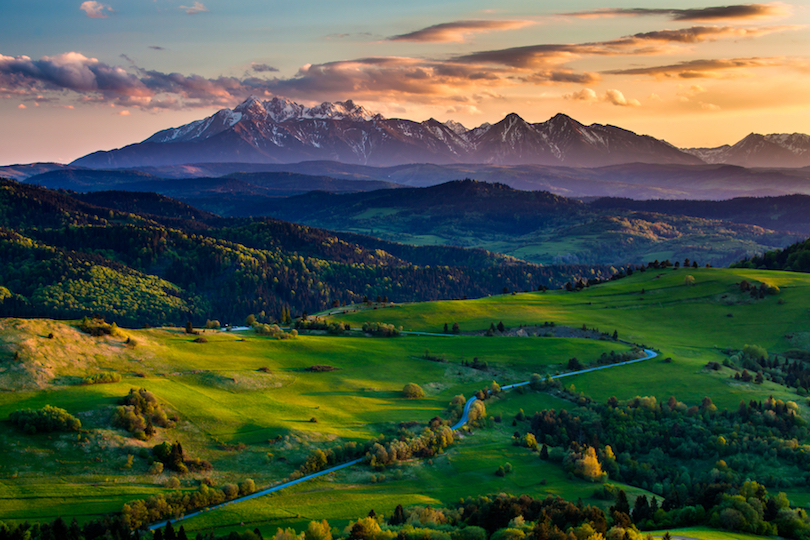
This rugged collection of mountains on the border of northern Slovakian is the tallest range in the Carpathian Mountains. Mount Krivan is the highest peak and is a symbol of the Slovak pride, luring many of its countrymen to climb to the summit.
Over a hundred emerald lakes, gushing waterfalls, and Alpine meadows characterize this beautiful region, making it a great place to hike around; in the winter skiers flock to the snow-covered slopes of the High Tatras. Luckily, you can stay in this marvel of nature, thanks to accommodation ranging from lakefront lodgings to more rustic mountainside retreats.

The Bulgarian capital of Sofia sits in the west of the country. Being something of a crossroads for Europe, it has attracted invaders and settlers alike for the past 2,000 years. Its architecture and landmarks reflect the history of the region, including Ottoman mosques, Greek temples, Roman ruins, and Soviet monuments.
Despite its age, Sofia is a surprisingly youthful city with a laid-back atmosphere, where its citizens enjoy relaxing in green parks and strolling along the boulevard. There are plenty of museums and galleries for you to delve into, but on the other hand, nightlife abounds, with a plethora of restaurants and nightclubs.
21. Butrint National Park
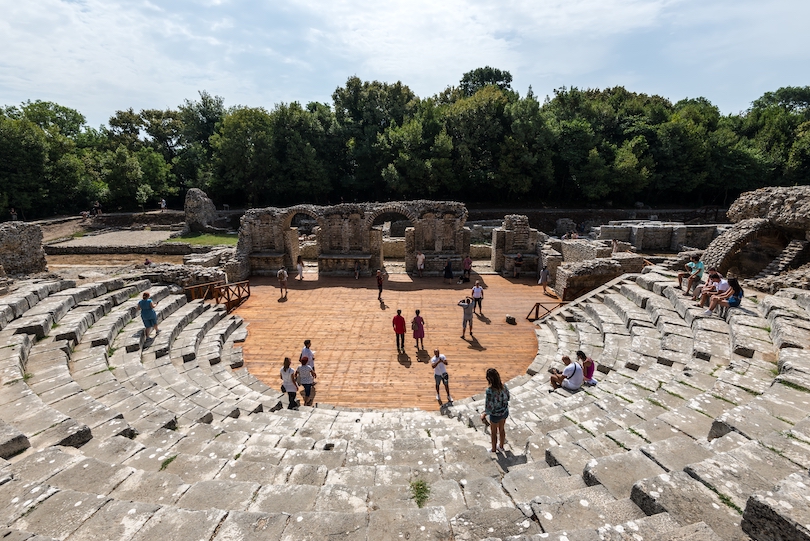
Butrint National Park sits in the south of the little-visited Balkan mystery of Albania , just across the sea from Corfu. It’s got just about everything you could want in a national park – lakes, marshes, grassy plains, wetlands, and even archaeological sites. These include the site of Butrint itself; known in Latin as Buthrotum, it’s full of ancient architecture, including a very well preserved Roman-era theatre and a Greek acropolis.
Elsewhere, this park boasts remote, rocky islands; one even features a 15th-century Venetian fortress known as the Ali Pasha Castle. Visitors looking to stay in Butrint should choose one of the few informal, family-run lodgings here.
20. Cesky Krumlov
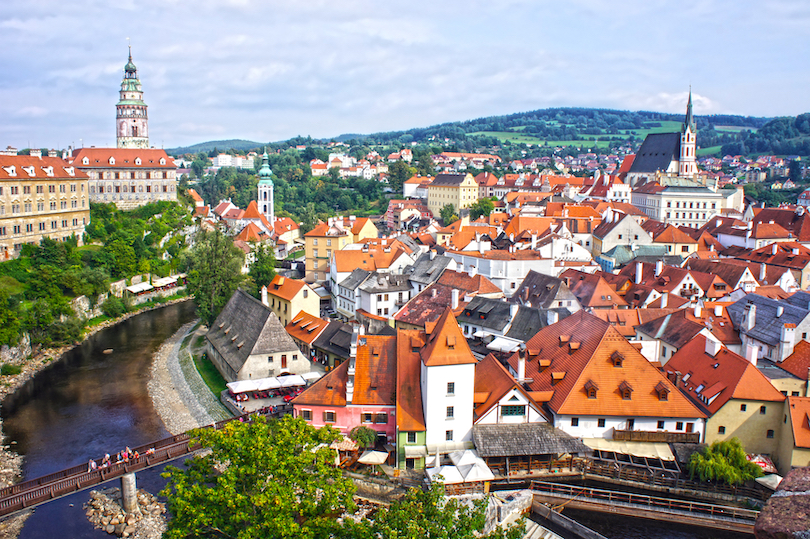
In the South Bohemia region in the Czech Republic lies Cesky Krumlov. This historic city is a supremely picturesque place to visit; think orange-tiled rooftops and the pretty riverside of the Vltava River, all flanked by green, rolling hills.
Made up of Renaissance and Baroque architecture, the town is overlooked by an impressive 13th-century castle, patchworked with a variety of styles through the ages; there’s also an ornate Baroque theatre to marvel at here.
It’s a town that should not be missed because of its sheer charm and beauty. Come in summer and stay till the sun goes down to watch the energetic city come alive with bars and restaurants.
19. Golden Ring
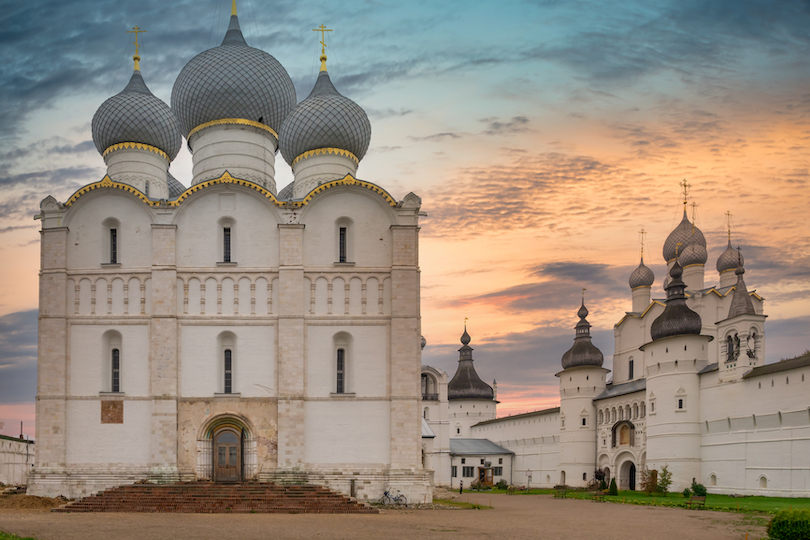
This is a vast area northeast of Moscow, Russia , that encompasses a handful of historic Russian cities. The medieval towns form a ‘Golden Ring,’ and due to their significance in the early history of Russia and the Rus tribe who founded it, have been labeled open-air museums.
The main towns are Sergiyev Posad, Kostroma, Ivanovo, Vladimir, Suzdal, Yarislavl, Perislavl-Zalessky, and Rostov Veliky. There are significant religious sites such as the 14th-century monastery of Troitse-Sergieva Lavra, grand buildings like Yarislavl, and other churches telling the story of a millennium of Russian Orthodox history.

The Polish capital of Warsaw has had a long, complex history, often marked by war and conflict. It was very much damaged during World War II, for instance, with the old town destroyed. However, it has been lovingly rebuilt to its former medieval glory, with brightly colored townhouses making for a pretty – if slightly artificial – place to wander around.
There’s a mixed bag of architecture across the city, including contemporary cafes and bars to discover. There are plenty of outdoor spaces to enjoy and, with a lot of restaurants and some culinary brilliance going on, it’s an excellent destination for foodies.
17. Lake Balaton
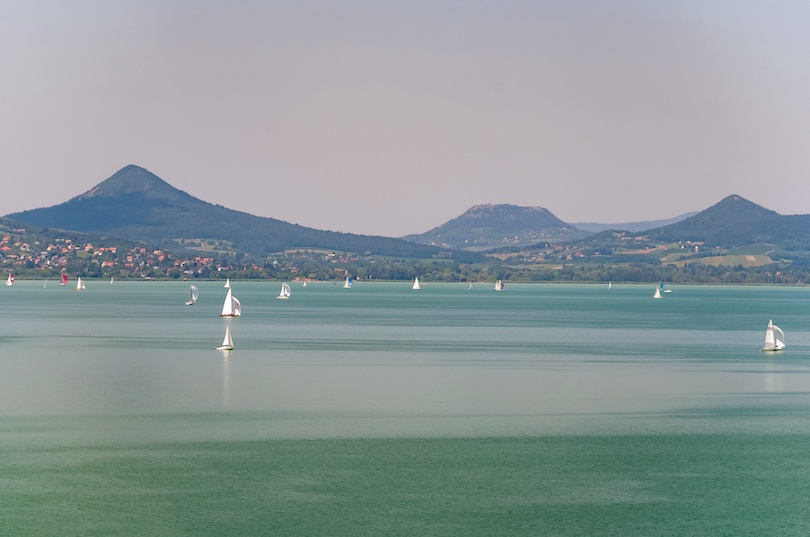
Set in western Hungary , the holiday destination of Lake Balaton is awash with beautiful beaches along its shores, as well as resort towns. Flanked by volcanic hills, it’s the largest lake in Eastern Europe, and is thought of as the ‘Hungarian Inner Sea.’
On the northern shores, you’ll find the town of Szigliget, home to a medieval fortress, and the oldest medieval town in the area – Tihany. This old town features a stunning Baroque abbey as its centerpiece.
If you like wine, you’ll be happy to know that Lake Balaton is famous for its vineyards, which dot the surrounding hills. Windsurfing and sailing are popular during the summer months.
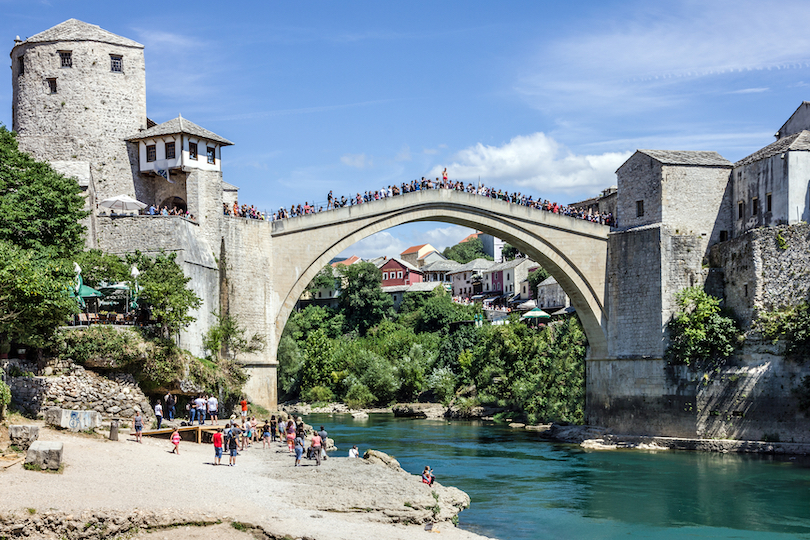
Mostar, in Bosnia and Herzegovina, is famous for its Old Bridge over the Neretva River; in fact, the name Mostar derives from mostari, meaning ‘bridge keeper.’ The bridge was built in 1556 under the orders of the occupying Ottomans, but was destroyed 427 years later in 1993 by Croat forces during the Balkan Wars.
Though it’s easily reachable on a day trip from neighboring Croatia, to get the most out of your visit to Mostar, the best thing to do is stay overnight. The crowds of daytrippers trickle away, and the restaurants high above the river along cobbled streets light up.
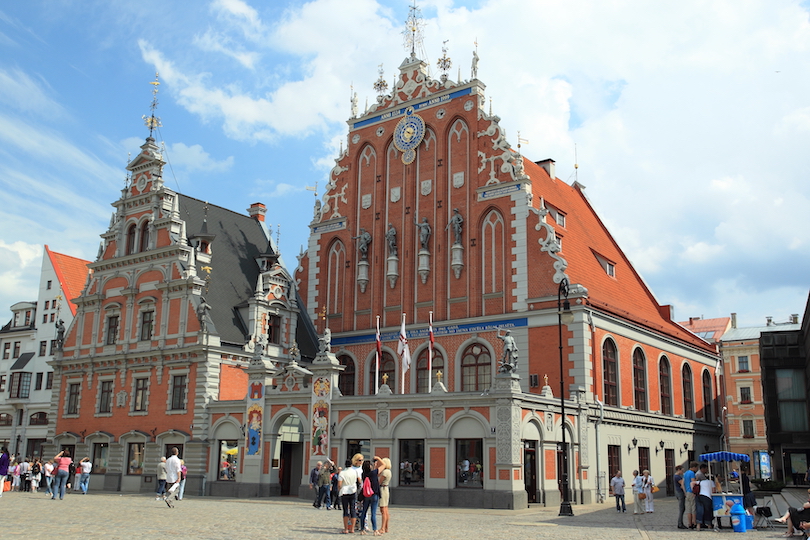
Situated on the Baltic Sea, Latvia’s capital is a mix of traditional and contemporary lifestyles. It’s an energetic place, where culture combines with the cobblestone streets for an exciting city atmosphere.
You can expect intricate Art Nouveau architecture intermingling with Gothic spires in the city’s beautiful old town, as well as a buzzing central market where you can dive into the city’s gastronomic delights – from cheese and sausage to black bread – perfect for a picnic in one of Riga’s pretty parks. Sip a cool cocktail or a local beer in one of the many pubs when night falls and the fun begins.

The Russian capital is a must-visit destination. It’s home of the Kremlin – the historic castle-turned-presidential complex – Red Square – a symbol of Russia’s power, and Lenin’s Mausoleum, where you can see the former Communist leader lying in situ.
Of course, the captivating and colorful onion domes of Saint Basil’s Cathedral are not to be missed, either. Museums, such as Pushkin State Museum and the State Tretyakov Gallery, allow you to learn more about Moscow, too.
Iconic ballet can be seen at the equally iconic Bolshoi Theatre. For nightlife and bars, head to the Garden Ring District; this is where you will find Moscow’s youthful vibrancy.
13. Lake Ohrid
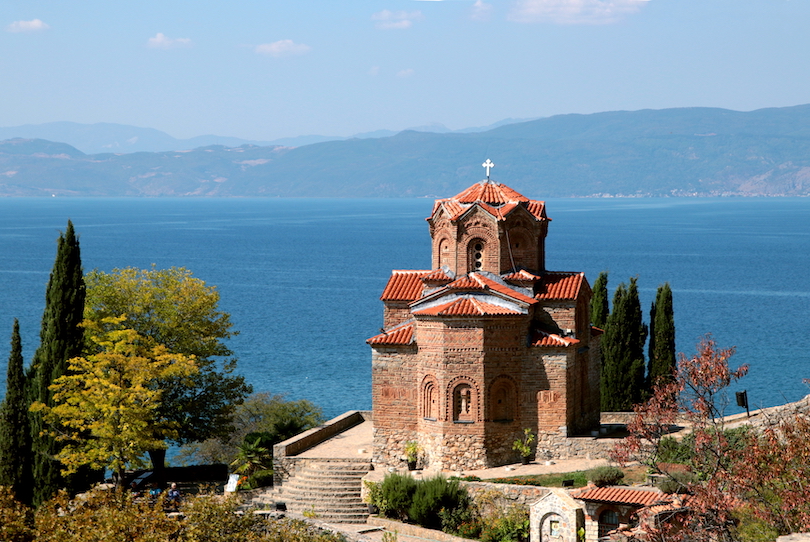
Straddling the borders of Macedonia and Albania, Lake Ohrid wins not one but two accolades of the natural world: it’s one of the deepest, and also one of the oldest lakes in Europe. Most of the lake falls within Macedonia, making this the best place to base yourself to see the spectacle.
The old town of Ohrid itself, for example, is home to old architecture, family-run lodgings, and a maze of narrow, cobblestone lanes to get lost in. Further south around the lake, Sveti Naum Monastery dates back to 905 AD and is a beautiful building to behold, with views of the surrounding mountains and lake equally stunning.
12. Plitvice Lakes National Park
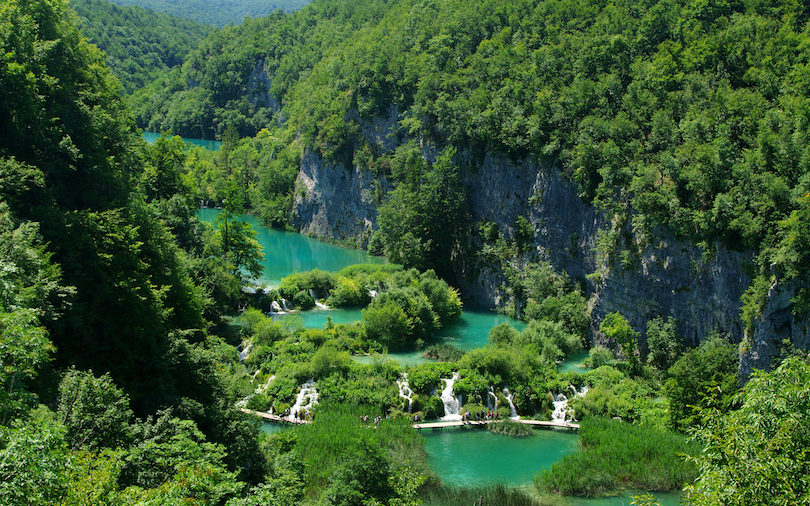
Huddled in central Croatia , Plitvice Lakes National Park is famous for its 16 terraced lakes, all conjoined by waterfalls that spill into a limestone canyon. This lovely area is a playground for people with a sense of adventure, who enjoy hiking amongst fantastic scenery.
You can expect boardwalks and hiking trails that wind through limestone rock formations and cliffs, and around the variegated waters of the lakes. That color change is down to the different mineral content of each lake. It’s no wonder that this sublime area was chosen to be Croatia’s first national park – and that it’s a very popular spot in summer.
11. Belgrade

Belgrade is an old city. The capital of Serbia , its long history involves not only Romans and Slavic tribes, but also Ottomans and Habsburg royals. In more recent times, it was the capital of Yugoslavia.
A proud, bold city, Belgrade – while not always beautiful – has an eclectic energy all of its own, with Soviet blocks next to golden age Art Nouveau buildings; the city’s patchwork history remains. It’s also a lively place to be and one of the most hip capitals of Eastern Europe. Spend time sipping coffee in quirky cafes, stroll along the pedestrianized boulevard Knez Mihailova, and hit up one of the packed bars in the riverside Savamala quarter.
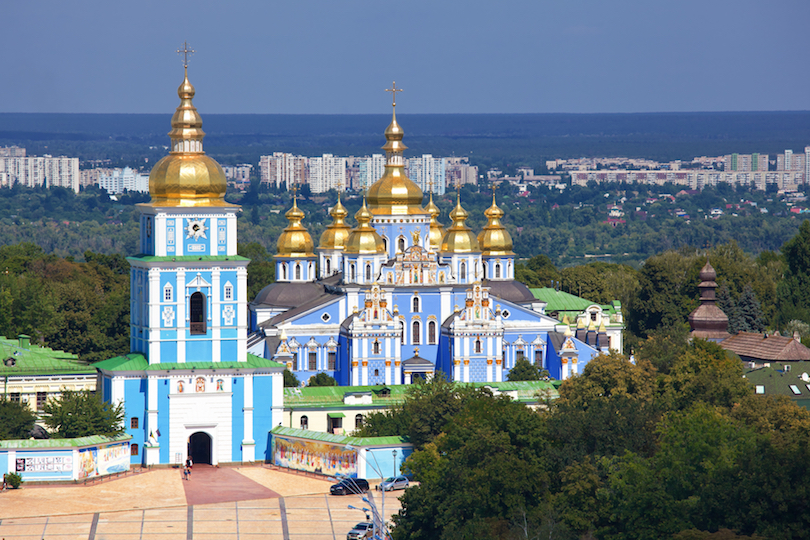
The Ukranian capital is an intriguing place – it’s vibrant, it’s historic, it’s atmospheric. Founded in the 5th century AD, Kyiv is one of Eastern Europe’s oldest cities, and was the center of the federation of Kievan Rus’.
There are plenty of places to soak up the history, like at the Pechersk Lavra complex – an important Orthodox Christian church – as well as the Saint Sophia Cathedral, with its breathtaking interiors and golden domes.
Elsewhere, the Motherland Monument is a dizzying Soviet marvel in concrete. At weekends, Khreschatyk Street is pedestrianized and comes alive with people enjoying their days off.
9. Lake Bled
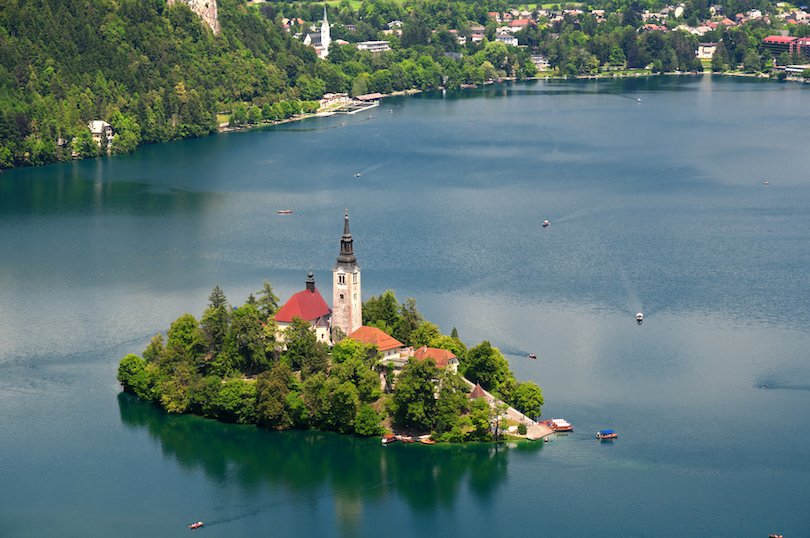
Slovenia’s spectacular Lake Bled sits in the Julian Alps in the northwest of the country. This dazzling, mirror-like body of water is backed by tree-covered hills and snow-peaked mountains, for one of the most awe-inspiring natural wonders in Eastern Europe.
Here, there’s Bled Castle sitting high on a cliff above the lake, and Bled Island in the center of the lake, reached by traditional wooden boats called pletna. There are a range of hiking paths around the lake, meandering in and out of woodlands and villages. The town of Bled is a popular place to base yourself to explore the lake, but staying in the capital of Ljubljana puts you in easy reach, too.
8. Budapest

The Hungarian capital that straddles the Danube River – and formerly the capital of the illustrious Austro-Hungarian Empire – Budapest is made up of three cities – Buda, Pest, and Obuda. Pest, in the east, is characterized by its Neo-Gothic spires – in particular, the soaring Parliament Building.
Buda, with its medieval Castle Hill, 13th-century Matthias Church, and Fisherman’s Bastion, can trace its history back to the Romans. Obuda is even older: the Roman capital of Pannonia, Aquincum, was established here in 106 AD.
Around the city, enjoy the much-loved thermal baths, spend an evening at the opera, pedal around Margaret Island, and hop around the emblematic ruin bars.
7. Bay of Kotor
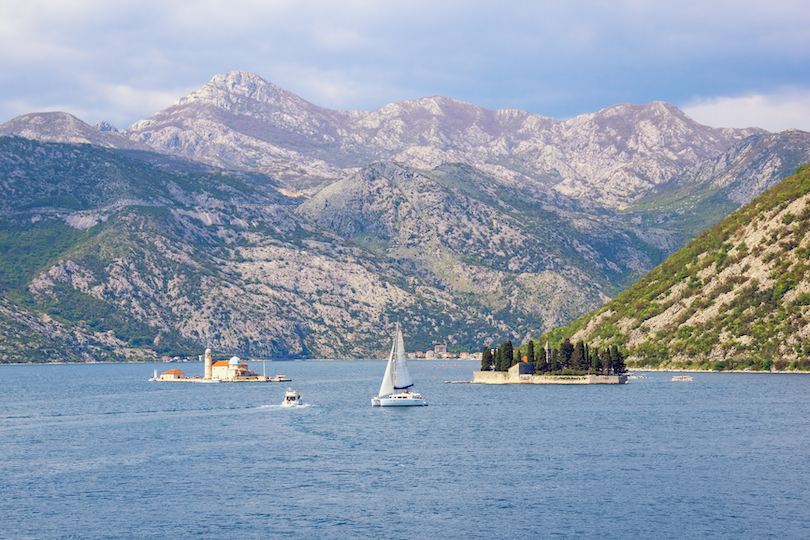
A sweeping bay in the eastern Adriatic Sea, the Bay of Kotor – also known as Boka – is situated in southwestern Montenegro . It’s a beautiful spot ringed by jagged green hills and medieval towns, with red-roofed houses spilling down to the coastline. Best explored by car along its winding roads, the region is packed full with incredible sights – from old citadels to islands topped with monasteries.
The bucolic, beautiful Bay of Kotor transcends others in the region – and there’s plenty of chances for seafood and delicious dinners by the sea to complement the scenery. Kotor old town is a Venetian wonder, surrounded by walls with a mountain backdrop that’s well worth using as a base.
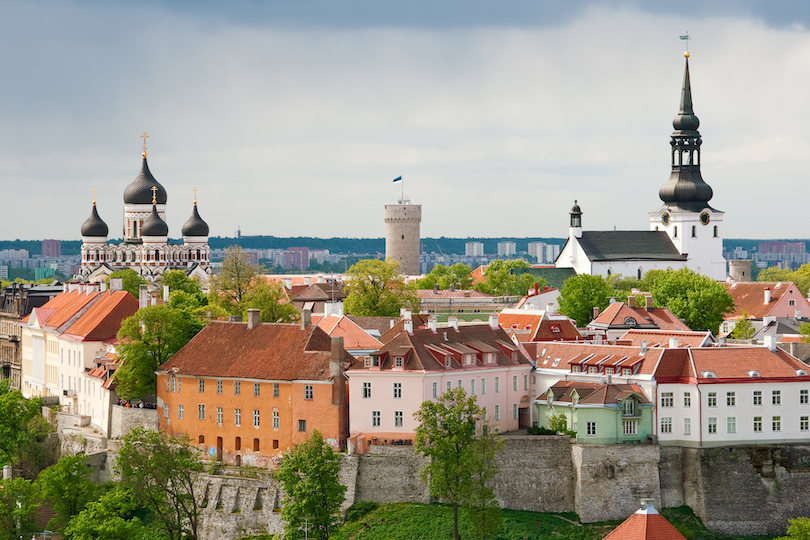
The capital of Estonia , Tallinn entices. With its 14-century old town, built as a defense system, when you walk through the impressive medieval Viru Gates, you can feel the history right away.
Parts of Tallinn’s city wall are still walkable, complete with windows where you can glimpse the charming city below; you can also get grand vistas of the city skyline from the Kohtuotsa Viewing Platform atop Toompea Hill.
There are also historic churches such as Saint Olaf’s Church, dating back to the 1200s. Tallinn has a hipster side too: former warehouses comprise Telliskivi Creative City, complete with trendy restaurants, bars, and shops.
5. Transylvania
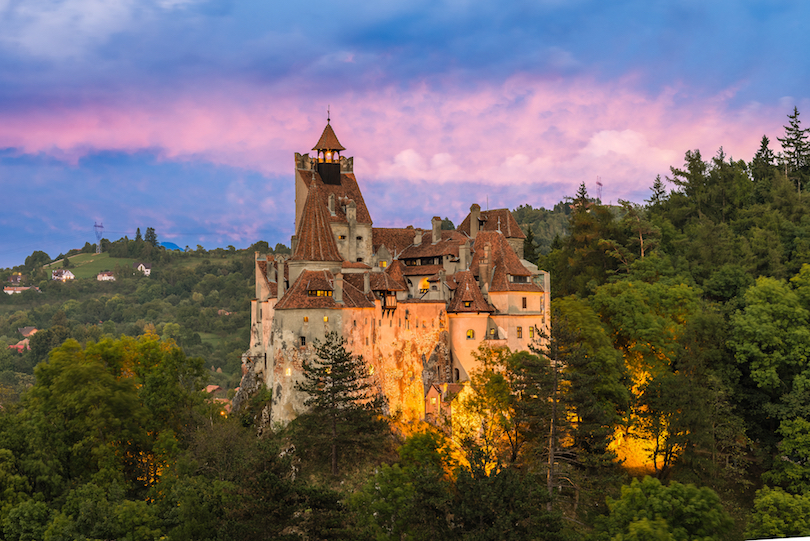
The central Romanian region of Transylvania is synonymous with stories of Dracula and bloodthirsty vampires. Whilst not entirely true, the area is mythical in terms of its natural beauty; bordered by the Carpathian Mountains, visiting Transylvania is like being transported into a slow-paced, medieval world. The countryside abounds quaint villages and local life between pastures and swathes of hills blanketed by trees.
There are many historic fortresses built by medieval German settlers, including the famous Bran Castle: these daunting spires make up what is popularly known as Dracula’s Castle . Make sure to visit the colorful city of Sighisoara, stacked with Saxon medieval architecture. You should also try out the region’s many thermal springs.
4. Saint Petersburg

The old capital of Imperial Russia, St. Petersburg is the cultural center of the country. It was founded in 1703 by Peter the Great and is home to lavish imperial buildings. Other sights include the Mariinsky Theatre for a world class ballet and opera, the lavish 1880s Church of Spilled Blood, as well as the State Russian Museum, where you can muse over Kandinsky Pieces.
The Hermitage Museum, spread over six buildings including the beautiful Winter Palace, has an incredible collection of antiques to marvel at. St. Petersburg is also a canal city with a Baltic coastline to boot; you can expect great shopping, dining and nightlife.

This southern Polish city, close to the Czech Republic, is a former royal capital. There is a beguiling mix of medieval buildings and modern-day, youthful nightlife to soak up here. Krakow is known not only for its old town – complete with the 13th-century Rynek Glowny, a cafe-lined market square, which is where you’ll find the iconic Cloth Hall, the grandiose centerpiece of the square.
It’s also known for its Old Jewish Quarter, called Kazimierz. Once home to the Jewish community of Krakow, Kazimierz has a new lease of life with boutiques and great restaurants; you can also visit places that appeared in Schindler’s List.
See also: Where to Stay in Krakow
2. Dubrovnik

Set in the south of Croatia on the Adriatic Sea, Dubrovnik is famous for its old town. This walled, medieval part of town was shelled in 1991 during the Balkan Wars, but has been restored to its former glory. Take a walk along the old city walls and be beguiled by the Baroque buildings; enjoy lazy afternoons at streetside restaurants soaking up the splendor of the city.
See also: Where to Stay in Dubrovnik
Stroll along the Stradun – the main pedestrian walkway through town – pick up some morning produce at the market in Gundulic Square, and siesta in a range of accommodation. Fans of Game of Thrones and Star Wars can easily find filming locations around the fortress.

Prague was given the nickname ‘City of 100 Spires,’ and it’s not wholly incorrect: the old town of Prague is bristling with Gothic, Renaissance, and Baroque architecture, boasting soaring spires that make the skyline like something from another time. Now the capital of the Czech Republic, Prague was once capital of the Kingdom of Bohemia.
Prague has a lot of sights pointing to its history, like the 9th century AD Prague Castle. There’s the 14th-century Charles Bridge boasting its stunningly ornate Gothic towers, and the old town square where you’ll find Prague Astronomical Clock – the oldest still functioning in the world.
See also: Where to Stay in Prague
One of Europe’s most popular city destinations, Prague is also awash with lodgings, eateries, bars, and nightlife.
Map of Places to Visit in Eastern Europe
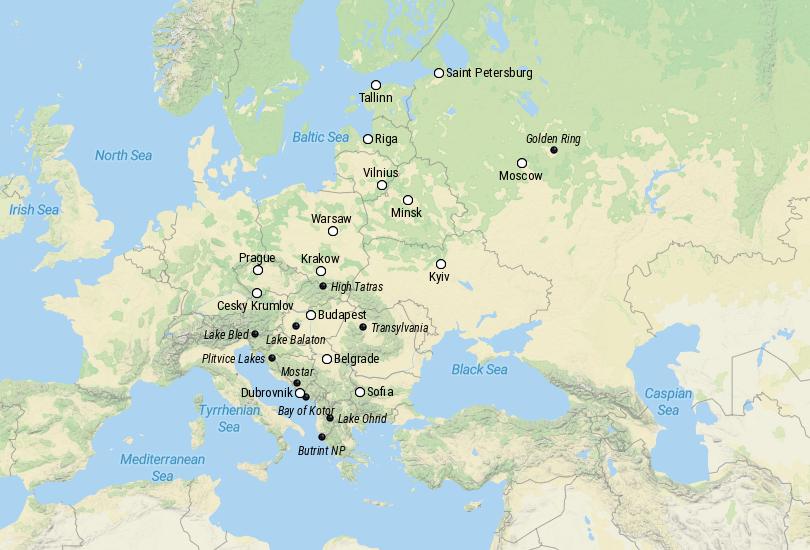
Share this post:
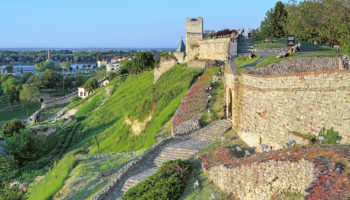
22 Top Things to do in Belgrade, Serbia
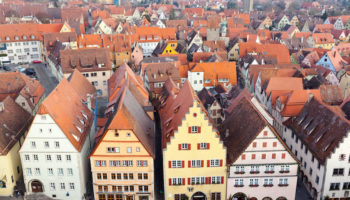
21 Best Places to Visit in Central Europe
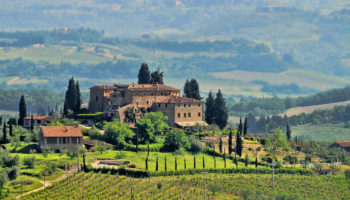
6 Most Beautiful Regions of Europe
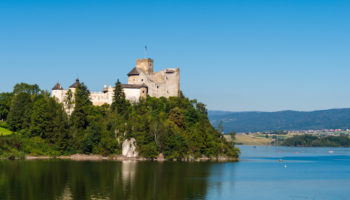
16 Most Beautiful Castles in Poland
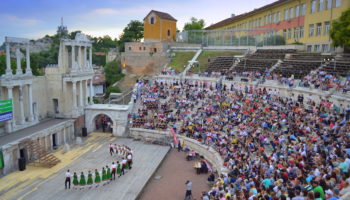
12 Top Tourist Attractions in Bulgaria
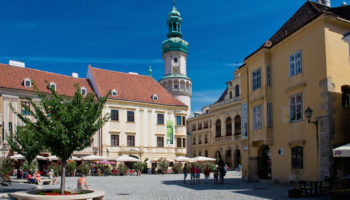
10 Best Places to Visit in Hungary
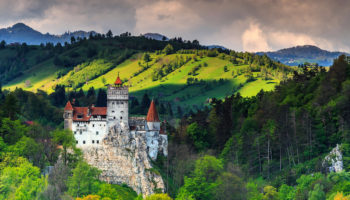
9 Most Beautiful Regions in Romania
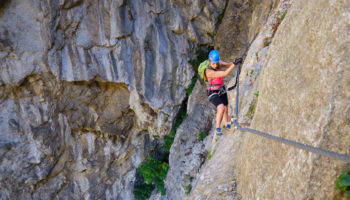
17 Best Things to Do in Romania
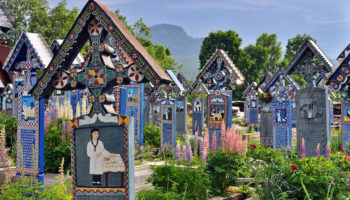
15 Top Tourist Attractions in Romania
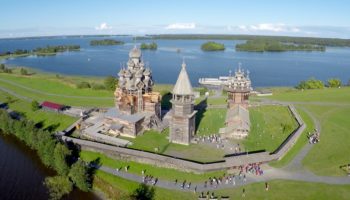
10 Top Tourist Attractions in Russia
Reader interactions, leave a reply cancel reply.
Your email address will not be published. Required fields are marked *
This site uses Akismet to reduce spam. Learn how your comment data is processed .
Account Options
Matador Original Series

The Ultimate Road Trip Routes Through Eastern Europe
E astern Europe is one of the most culturally and naturally diverse regions in the world. It’s often overlooked by those opting for more traditional European escapes, but, personally, I have been constantly blown away while living and traveling there. The history is complex and, therefore, so is the culture, with remnants from an array of political and religious influences.
In this region, you can find it all and do it all. Considering the nature, cities and nightlife, architecture, scenery, arts and food, there’s always something new at the next turn. An Eastern European road trip may very well be your most epic adventure to date. With so much to see and do, it’s impossible to tackle it all at once but here are three options that will keep you exploring.
The Center Loop
Route: Vienna — Ljubljana — Zagreb — Budapest — Krákow — Wroclaw — Prague — Vienna
- Total days: 12
- Distance: 2,370 KM
- Best time to go: From May to September
This route is superb not only because you are hopping from one city, filled with unbelievable character and nightlife, to the next, but you can also detour and catch some serious scenery.
Start in Austria’s capital, Vienna , for a few days of sightseeing (and some wiener schnitzel) before heading south and crossing the border into Slovenia and on to Ljubljana . Slovenia is a small country and it’s fairly easy to drive from one end to the next in a matter of hours.
It’s a great place to explore: Lake Bled is famous for a reason (or opt for its larger, less crowded neighbor, Lake Bohinj), the mountains in Triglav National Park, or the old walled seaside town of Piran (yes, Slovenia even has a sliver of Adriatic coastline).
From there you can cross over to Zagreb , Croatia. Zagreb is surprisingly small for a European capital, meaning you can see it all in a day or two. It has two old towns, a ton of street art, a beautiful park that dominates its core, and an emerging foodie scene. The Plitvice Lakes National Park, essentially a web of lakes all connected by waterfalls, is an easy day trip.
Save your late nights for your arrival in Budapest . This city lives and breathes for you as you make your way through its historic core to ruin bars, discos, and some of the grandest sights in Eastern Europe.
From Budapest get back on the road and head to Krákow. Getting to Krákow means crossing the entire country of Slovakia, so detour through the High Tatras mountains and roam the 900-year-old Spiš Castle. Once in Krákow, it’s best to experience it by foot. The city is unmatched for its food, spirits, nightlife, arts, and some of the most haunting history in the entire region. And it’s not far from Wroclaw, a perfectly picturesque city with its signature pastel-colored, cookie-cutter buildings of Old Town Hall.
This road trip hits all the greats, including Prague , a city that is sure to captivate you from start to finish. It’s so immaculately preserved, with twisting cobblestone streets and perfect architecture, you really might pinch yourself.
The food is some of the best and no trip is complete without a dozen nighttime strolls when the city really sparkles. Finish your trip back in Vienna, put your feet up, and savor the rich cafe culture.
John Lennon Wall
Castle hill.
- Explore the Sigmund Freud Museum in Vienna.
- Hike the Vintgar Gorge near Lake Bled.
- Visit the Museum of Broken Relationships in Zagreb.
- Relax in Budapest’s thermal baths.
- Eat at one of the Milk Bars and taste vodka in Kazimierz.
- Fish in the Labska Dam in the Kroknose Mountain Range.
- Tour the prestigious wineries of Krasna Hora.
Route: Warsaw — Krutynia River — Vilnius — Riga — Pärnu — Tallinn
- Total days: 8
- Distance: 1,130 KM
- Best time to go: From May to July
Begin this trip in Warsaw, Poland. Warsaw is a large and diverse capital city.
There’s no one neighborhood to see, so some exploring is required. But the exposure to warm, pastel architecture juxtaposed with gray, Communist concrete will certainly leave an impression. Białowieża Forest, one of Europe’s last remaining primeval forests, is a close day trip, and so is Poland’s lake district on the Krutynia River where you can kayak and relax.
From Warsaw, cross the border into Lithuania. Vilnius , the capital of Lithuania, is buzzing with energy while still embracing its historic past, filled with castles and palaces and impressive baroque architecture. Potatoes seem to be the theme of every meal, but it’s worth it for meat-filled potato pancakes and dumplings.
Next cross to Lativa where you’ll find the food in Riga is similar, but a little lighter, taking the form of smoked fish and sausages. It will fuel you for all there is to do in this amazing city. It’s certainly a place to wander and stare, with a quirky mix of gothic spires and art nouveau details.
Pärnu is a little detour on your way to Tallinn and perfectly breaks up the city theme. It’s on the sea, it’s charming, it’s old, it’s quaint, and it’s an excellent place to spend a lazy summer day. You’ll refresh yourself before heading to another bustling capital city. Estonia’s capital Tallinn is smaller than Riga, a bit more concentrated and peaceful, and maybe the most picturesque of the Baltic cities.
Gediminas Castle Tower
Supreme court of poland, canoe trips - soomaa.com.
- Taste pierogies in Warsaw’s Old Town.
- Kayak or canoe down the Krutynia River.
- Experience interrogation by retired KGB agents in Vilnius.
- Enjoy traditional drinks and Latvian folk music in Riga.
- Take a romantic stroll along the seawall in Pärnu.
- Sing Estonian songs with a choir of 30,000 in Tallinn.
The Balkans
Route: Bay of Kotor — Dubrovnik — Split — Zadar — Ljubljana
- Total days: 7
- Distance 820 KM
- Best time to go: From May to August
This road trip starts off with some incredible scenery. The Bay of Kotor may very well leave you speechless with its giant, jagged peaks surrounding a calm and historic inlet. The old town is one of the most preserved in the region and you can hike up to the fortress for dizzying views. The coast is well worth the time and brings you to Dubrovnik, another perfectly preserved old town. There is almost too much to see here, and you will easily get your architecture fix wandering through the narrow streets, and your adventure fix kayaking around the walls.
Dubrovnik is beautiful, but so is Split , which is home to the perfectly squared and preserved Diocletian Palace.
This is an excellent place to wander and get a little lost. You can find quiet, beautiful corners and hidden cafes filled with locals. In the city’s park, Marjan, you can ditch the crowds, enjoy nature, and find some secret swimming holes.
Zadar is a port city framed by dramatic mountains and home to some of the country’s best sunsets. Island hopping is the thing to do here, and these islands are not nearly as crowded as those found near Split. End the trip in Ljubljana , a super artsy, foodie, and green capital. You can spread your hipster wings here and hang out in Metelkova, a prison turned hostel and public art space.
Marjan Forest Park
Kampana tower, dubrovnik city walls.
- Eat farm-fresh cheese from the hills near the Bay of Kotor in Montenegro.
- Enjoy incredible views from Dubrovnik’s City Walls.
- Swim in the Adriatic Sea at Bacvice Beach in Split.
- Explore the waterfalls in Krka National Park.
- Listen to the waves play the Sea Organ in Zadar.
More like this
Discover matador, adventure travel, train travel, national parks, beaches and islands, ski and snow.

Eastern Europe Itinerary For 3 Weeks
DISCLAIMER: This post might have links to travel services and products that we enjoy. We might make a commission from it at no extra cost to you.
East Europe is said to be a highly underrated travel destination. But those who choose this destination, are rewarded with charming countryside villages and unspoiled landscapes. The fact that it is not as frequent as in other parts of Europe makes it an excellent choice for travellers who want to avoid the crowd.
Known as an under the radar destination, it will enable you to enjoy all the sights and attractions that it has to offer. Places that have fewer crowds and at more reasonable prices. Making your own Eastern Europe itinerary for 3 weeks shouldn’t be that hard or time-consuming.
Are you ready to discover the hidden gems of East Europe? Make sure to take note of the list of places to visit when you are in the region. Plus, we have a few ideas on what to see or do while you are spending 3 weeks in Eastern Europe.
MUST-READ: Europe in 3 weeks on a budget or 3 weeks in Greece itinerary
PINNED MAP FOR THINGS TO SEE AND DO IN EAST EUROPE
Albania, Bulgaria, Croatia, Czechia, Estonia, Greece, Hungary
Latvia, Lithuania, Montenegro, Poland, Romania, Serbia, Slovakia
Enlarge the map by clicking on the icon on the top right. Credit: map data: Google
IMPORTANT TRAVEL TIPS FOR EAST EUROPE
First, let’s talk about the amazing places you can explore in East Europe and which trail will save you time, be easier to travel through, and will maximise your holiday. East Europe is massive, it will exhausting and will be a rushed trip if you want to cover the entire region in just 3 weeks.
So, I added 3 areas or trails to explore this region. Each trail or route offers amazing places to see, and historical locations and is worth a visit for 3 weeks. Below, you will itineraries for 3 weeks to the Baltics, the Balkans, and the Visegrad separately.
Read each route’s itinerary and decide which one suits you better. I will first give a quick overview of each country featured. Later on, you will see the actually day-by-day Eastern Europe itinerary for 3 weeks.
RELATED POST: 3-week South Europe itinerary or 3 weeks in Western Europe or 20 days in Central Europe
3 Weeks in The Baltic Region (Estonia – Latvia – Lithuania)
Exploring the Baltic region is one of the main attractions in East Europe. It consists of three countries: Estonia, Latvia, and Lithuania. While this area is often overlooked, those who travel the region are rewarded with fairy-tale-like experiences.
These countries serve as the medieval roots of Europe with many histories and tragedies to tell. There are also plenty of small towns and forests that have their unique charm. This region is a perfect destination for spending 3-week in East Europe. You can easily take the train to get to the next country (or city) or rent a car.
As a country that is located between the border of the Gulf of Finland and the Baltic Sea, Estonia is known for its diverse terrain. This goes along with its picturesque lakes, old-growth forests, and rocky beaches. It was once a member of the Soviet Union and as such is home to many hilltop fortresses, churches, and castles.
- How to get there: To get to Estonia, you can book a flight to Tallinn Airport, the main airport in the country. You can also take the train + ferry combo if you are coming from Stockholm or Copenhagen. And Eurostar provides connecting train services from other parts of Europe.
- What to see : Pikakari Rand, Eesti Vabaohumuuseum, Lennusadam, Tallinn Town Hall, Alexander Nevsky Cathedral, Lahemaa National Park, Narva-Jõesuu
- Language : Estonian
- How many days to stay: 3-5 Days
- Must-try food: Kiluvoileib
- Must-try beer or cider: Blackmouth Cur
As a vast yet unspoiled landscape filled with lakes, wooded areas, and the sea, Latvia offers its capital city of Riga. The rest is just filled with natural beauty and diverse terrain that is waiting to be discovered.
Even though it is a small country, it packs a lot of sights that are mostly pristine in the setting. It showcases the actual work of nature.

- How to get there: To get to Latvia, you can fly to the Riga International Airport. There are commercial flights from various parts of the world. You can also fly into Lithuania and take the bus to Latvia.
- What to see: Rundale Palace, House of the Black Heads, Gauja National Park, St. Peter’s Church
- Language: Latvian
- How many days to stay: 2-3 Days
- Must-try food: Beetroot soup, mushroom picking
- Must-try beer or cider: Valmiermuiža beer
As the southernmost state in the Baltic region, Lithuania is a country that is known for its unique character. It has been designed by a mixture of Gothic, Baroque, and Renaissance architecture.
As the largest of the Baltic states, it offers plenty of things to see and do. The diversity of the attractions means that it is a great tourist destination for all kinds of travellers, and people of all ages.
- How to get there: To get to Lithuania, you can book a flight to Vilnius International Airport. There is also a smaller airport – Palanga Airport – but the flights that are served are quite limited. You can also travel to Lithuania via train from Poland, Belarus, Russia, or Latvia.
- What to see: Trakai Island Castle, Gediminas Castle Tower, Vilnius Cathedral, Hill of Crosses, KGB Museum, Uzupis
- Language: Lithuanian
- How many days to stay: 4 Days
- Must-try food: Cepelinai, Bulviniai Blynai, Kepta Duona
- Must-try beer or cider: Sakiškių Chipotle Porter
3-weeks in The Balkans (Romania – Bulgaria – Serbia – Hungary)
At the heart of Eastern Europe are three culturally rich countries: Romania, Bulgaria, and Serbia. Each of these countries is worth adding to your itinerary in East Europe. If you have limited time, they are a must-visit.
This trail offers a fascinating history, picturesque landscapes, and eclectic architecture. The countries you can visit in the region represent the best of what Eastern Europe has to offer. This Eastern Europe itinerary for 3 weeks will take you to 4 countries and dozens of attractions to see.
As a country best known for the legend of Dracula, Romania is a country noted for its pristine rolling hills, rocky mountains, stone churches, and monasteries. The towns that makeup Romania have their own stories to tell. If it’s your first time in Romania, I recommend you spend at least a few days in the capital city and discover Bucharest .
Thus, it makes it worthwhile to explore them, too. Whether you want to see nature and wildlife, castles and medieval towns, or folk culture, you will surely have your fill.
- How to get there: To get to Romania, you can choose from one of many international airports, including Henri Coanda Airport or Aurel Vlaicu Airport in Bucharest. You can also get to Romania by train as it is part of a massive European rail network. There are international trains from Vienna, Budapest, Sofia, Kyiv, Moscow, and more.
- What to see: Bran Castle, Peles Castle, Palace of Parliament, Poiana Brasov, Balea Lake
- Language: Romanian
- How many days to stay: 5 Days
- Must-try food: Sarmale, Ciorba de Burta
- Must-try beer or cider: Timisoareana
If you are planning to visit Bulgaria, you will be relieved to know that it is one of the most affordable countries in Europe. That alone should convince you to visit this country when exploring East Europe. It is a country abundant in natural resources.
Featuring the rivers, mountains, seaside towns, plains, and highlands, it makes your visit worthwhile. Whether you want to experience a lively metropolis with a hint of the old, explore the natural scenery, or go to some ski resorts in Bulgaria – there’s something for everyone.

- How to get there: Bulgaria is easily accessible from major European cities and other continents, as well. But as of now, there are only direct flights from Europe and the Middle East. Those from North America or Australia need to book a connecting flight.
- What to see: Rila Monastery, Borovets, Sunny Beach, Boyana Church, Seven Rila Lakes
- Language: Bulgarian
- How many days to stay: 3-4 Days
- Must-try food: Banitsa, Tarator
- Must-try beer or cider: Glarus
As quickly emerging as one of the most coveted tourist destinations in Europe, Serbia is a diverse country and warm with friendly locals. Since this is a landlocked country, you won’t find any beaches or lots of bodies of water.
Located at the heart of the Balkans, Serbia shows off a feisty spirit. It highlights world-class nightlife, epic festivals, historic metropolises, and sacred monasteries.
- How to get there: To get to Serbia, you must fly to the Belgrade Nikola Tesla Airport. It is located about 18km from downtown Belgrade, serviced by direct and connecting flights from major cities outside Serbia. There are also day and night international trains that travel to Serbia from Austria, Slovenia, Hungary, Romania, Bulgaria, and more.
- What to see: Belgrade Fortress, Church of Saint Sava, Knez Mihailova Street, Novi Sad Strand, Ada Ciganlija
- Language: Serbian
- Must-try food: Sarma, Cevapi
- Must-try beer or cider: Apatinska pivara
On the surface, Hungary appears to be just like any other East European country with stunning architecture, interesting folk art, and gastronomical delights. But for those who dare to look past that, they are rewarded with a treasure trove that is Hungary.
It is an architectural gem at every turn – from churches, museums, and public buildings. But more than just an architectural wonder, these structures have a history to tell. The famous bathhouses are also drawing tourists from all over the world.
- How to get there: To get to Hungary, you must book a flight to Liszt Ferenc Airport in Budapest. There are several daily flights with Easyjet, Ryanair, Eurowings, and Wizzair to this airport. You can also take the train from other parts of Eastern Europe such as Austria, the Czech Republic, and Slovakia via international train connections.
- What to see: Buda Castle, Fisherman’s Bastion, Heroes Square, Parliament Building, Lake Balaton
- Language: Hungarian
- How many days to stay: 3-4 days
- Must-try food: Goulash, Chicken Paprikash
- Must-try beer or cider: Dreher
3-weeks in The Visegrad Group (Czech Republic – Slovakia – Poland)
Eastern Europe itinerary for 3 weeks is not complete with the Visegrad group . The Visegrad Group is another popular route that tourists take when visiting Eastern Europe. The highlight of your trip is filled with castle towns that offer picturesque views with a fascinating history.
There is a right mix of the medieval past and the urban energy to appeal to a wide range of travellers. But if you are after fresh-air fun activities, these destinations will leave you satisfied.
The history of Poland dates back to the 10th century. This is what makes this an excellent destination for anyone exploring East Europe because you can uncover that history with every building, street, or castle you visit.
There is no shortage of heritage trails in Poland along with living museums in the form of architecture and ruins. If you are seeking to escape to nature, it is also rich in rivers, woodlands, lakes, and hills that beckon you to discover them!
- How to get there: To get to Poland, you can book flights to Warsaw or Krakow – the main gateways to Poland. There are several other airports in various cities in Poland to consider as your point of entry, too. Train travel to Poland is another good option to get into the country. There are international train services from Berlin, Prague, Vienna, Kyiv, and Budapest.
- What to see: Wieliczka Salt Mine, Wawel Royal Castle, Auschwitz Birkenau, Warsaw Old Town, Bialowieza Forest, Wawel Cathedral
- Language: Polish
- Must-try food: Pierogi, Rosol
- Must-try beer or cider: Ciechan Pszeniczne
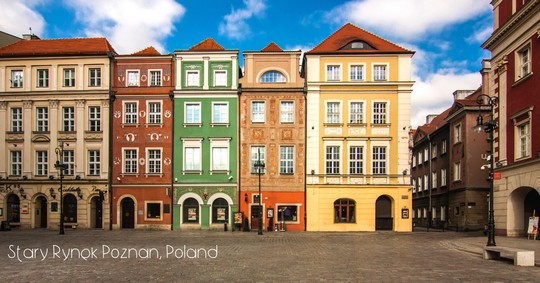
Czech Republic
There is more to the Czech Republic than just Prague. While Prague is undoubtedly a fantastic destination, the country invites you to explore a bit more, and you will be rewarded if you do so. It is home to many historic neighbourhoods.
You can also take your time to visit the beautiful squares, castles, and cathedrals. Walking the streets of the Czech Republic, you can feel and immerse in that living history. Indeed, this country feels like one large open-air museum.
- How to get there : All major airlines and carriers service flights to the Czech Republic. There are numerous flights to Prague’s Vaclav Havel Airport on a daily or weekly basis. You can also book an international train service from significant points in Europe to Prague. There are direct rail connections to the Czech Republic from Hungary, Romania, Belarus, Germany, Poland, Austria, and Slovakia.
- What to see: Charles Bridge, Prague Castle, St. Vitus Cathedral, Prague Astronomical Clock
- Language: Czech
- How many days to stay: 5-8 Days
- Must-try food: Palačinky, Trdelník
- Must-try beer or cider: Pilsner Urquell
Known as the land of castles and mountains, Slovakia is a country as a fairy-tale town transformed into reality right before your eyes. The capital city of Bratislava is one of the best destinations in the country.
Moreover, it boasts of a thriving old town and a vibrant drinking culture. There are also plenty of opportunities available for nature and outdoor lovers.
- How to get there: To get to Slovakia, you must book a flight to Bratislava Airport. There are many direct and connecting flights from various European cities or from outside Europe. You can also fly via Vienna Airport and then transfer via bus or train to Slovakia.
- What to see: Bratislava Castle, St. Martin’s Cathedral, Spis Castle, Michael’s Gate, Orava Castle
- Language: Slovak
- Must-try food: Bryndzové halušky, Kapustnica
- Must-try beer or cider: Lager by Minipivovar Buchvald
BASIC TRAVEL TIPS FOR EAST EUROPE
When you start planning and creating your own travel itinerary, see if these travel sites can be useful. I love using these websites because they are affordable, flexible, and have so many options. From hotels, flights, tours, and even travel insurance.
EASTERN EUROPE ITINERARY FOR 3 WEEKS: RECOMMENDED TRAVEL ITINERARIES
East Europe might be underrated, but it won’t be soon. More travellers are finally coming to the realization of what beauty, history, culture, and gastronomy are waiting for them in each of these destinations. While you can use the information provided here to build your itinerary, make sure to be open to some spontaneity. There will be lots of surprises and hidden gems that are still waiting to be discovered for each of these destinations.
Via The Baltics (Estonia – Latvia – Lithuania)
The good thing about this travel route is that these three countries are standing vertically across each other. Making the trail either go north or south. You can either enter through Tallinn, Estonia or Vilnius Lithuania to maximise your time. Personally, this Eastern Europe itinerary for 3 weeks is my favourite. The vibe in each country is so relaxed and the crowd is not as intense at the other destinations.

- Day 1-4 Vilnius: do day trips from here, sleep in Vilnius – Trakai Castle from Vilnius
- Day 4: take a bus to Klaipeda (cost: €20, takes 3.45 hours) or train (cost between €13-€25, takes 4-4.5 hours)
- Day 4-6 Klaipeda: sleep in Klaipeda – Curonian Spit tour
- Day 6: take a bus to Siauliai (cost €11.80, takes 3 hours)
- Day 6-8 Siauliai: sleep in Siauliai – Hill of Crosses tour
- day 8: take a bus to Riga (cost €11, take 2.5 hours)
- Day 8-15: day trips from here, sleep in Riga – Riga day trip | Riga hop-on-hop-off bus | Sigulda and Gaugja National Park
- Day 15: take a bus to Parnu
- Day 15-17: Parnu, sleep in Parnu, visit Kihnu Island
- Day 17-20: take a train or bus to Tallinn, sleep in Tallinn – Tallinn Walking tour | Lahemaa National Park | Tallinn Bike tour
- Day 20: take a bus or train to Tarlu or extend your stay in Tallinn
I recommend this route to be done the other way around and start in Tallinn, Estonia instead if that works best for you.
Via The Balkans
The Balkan Trail is actually pretty cool. You can easily do a circle route and start wherever you want and what’s the most convenient especially if you are already travelling some around Europe.
I will start the itinerary in Budapest, Hungary. But you can begin anywhere you want, I recommend you look at the airfare and see which is the best place for you to start this amazing 3 weeks in Eastern Europe.

Hungary – Romania – Bulgaria
- Day 1-4: Arrive in Budapest, day trips and city tours, sleep in Budapest – Szechenyi Spa | Budapest Evening Cruise | Budapest hop-on-hop-off bus
- Day 4: take a train or bus from Szeged to Timisoara, Romania (cost €12-€14, takes 2.5-4 hours)
- Day 4-6: explore Szeged and sleep here –
- Day 6: take a bus to Timisoara, Romania (cost €6, takes 3 hours)
- Day 7-9: explore and sleep in Timisoara – Timisoara day tour
- Day 9: head to Cluj-Napoca ( cost $9-$15 on a 6-7 hour bus or $7-$25 on a 6-hour train)
- Day 9-12: Cluj-Napoca, explore the Transylvania region, sleep in Cluj-Napoca – Turda Salt Mines and Rimetea tour | Cluj Medieval City tour | Dracula’s Castle & Birthplace
- Day 12: head to Bucharest (cost $16-$25 for an 8-hour bus or $11-$40 on a 9-hour train)
- Day 12-14: Bucharest – Peles, Bran Castle, Old Town Brasov tour | Dracula’s Castle tour
- Day 14: head to Varna, Bulgaria (cost $17-$30 for a 4-7-hour bus or $9-$20 for a 7.5-hour train)
- Day 14-17: Varna, Bulgaria – Black Sea Cruise with Lunch | Varna Gourmet and Wine Tasting
- Day 17: head to Sofia (cost is $14-$21 on a 6.5-hour bus or $12-$19 on a 7.5-hour train)
- Day 17-21: Sofia
Serbia – Bulgaria – Romania
- Day 1-4: Belgrade, Serbia – Novi Sad & Sremski Karlovci tour | Full day Belgrade tour
- Day 4: take a bus to Nis, which cost $9-$20, and takes 3.5-4 hours
- Day 4-6: Nis – see Devil’s Town and Nis Fortress
- Day 6: take a bus to Sofia, Bulgaria, cost $9-$14, takes 3 hours)
- Day 6-9: Sofia, Bulgaria – Rila Monastery & Boyana Church tour | Skopje (N. Macedonia) day tour
- Day 9: head to Plovdiv, cost $5-$10 for a 2.5-hour bus or $4-$10 for a 2.5-hour train
- Day 9-11: Plovdiv
- Day 11: head to Varna, cost $14-$30 for a 6-7-hour bus or $9-$15 for a 5.5-hour train
- Day 11-14: Varna – Black Sea Cruise with Lunch | Varna Gourmet and Wine Tasting
- Day 14: head to Bucharest, Romania, cost $17-$30 for a 4-7-hour bus or $9-$20 for a 7.5-hour train
- Day 14-18: Bucharest, Romania – Peles, Bran Castle, Old Town Brasov tour | Dracula’s Castle tour
- Day 18: head to Cluj-Napoca, cost $17-$40 on a 6-9-hour bus or $11-$40 9.5-hour train
- Day 18-21: Cluj-Napoca – Turda Salt Mines and Rimetea tour | Cluj Medieval City tour | Dracula’s Castle & Birthplace
TIP: You can skip Plovdiv in Bulgaria and head to Varna from Sofia right away via a bus or train.
Hungary – Serbia – Bulgaria
- Day 1-4: Budapest, Hungary – Szechenyi Spa | Budapest Evening Cruise | Budapest hop-on-hop-off bus
- Day 4: take a bus to Szeged
- Day 4-6: Szeged (sleep here)
- Day 6: take a bus to Belgrade, Serbia – either connect in Subotica or Novi Sad, both will take 5-6 hours, and cost $10-$15)
- Day 6-9: Belgrade – – Novi Sad & Sremski Karlovci tour | Full day Belgrade tour
- Day 9: take a bus to Nis, which cost $9-$20, and takes 3.5-4 hours
- Day 9-12: Nis
- Day 12: take a bus to Sofia, Bulgaria, cost $9-$14, takes 3 hours
- Day 12-15: Sofia – Rila Monastery & Boyana Church tour | Skopje (N. Macedonia) day tour
- Day 15: head to Plovdiv, cost $5-$10 for a 2.5-hour bus or $4-$10 for a 2.5-hour train
- Day 15-17: Plovdiv
- Day 17: head to Varna, cost $14-$30 for a 6-7-hour bus or $9-$15 for a 5.5-hour train
- Day 17-21: Varna – Black Sea Cruise with Lunch | Varna Gourmet and Wine Tasting
TIP: You can skip Plovdiv in Bulgaria and head to Varna from Sofia right away via a bus or train. You can also do this itinerary the other way around.
Via The Visegrad Group
The Visegrad Group or region is probably one of the most curious places for me personally. The countries here are so the same but also highly different in many ways. The best way to learn the difference between them is to pack your bags and explore. This Eastern Europe itinerary for 3 weeks is so rich in activities. From visiting historical spots to trying out local food and drinks in 3 different countries.
Here is a recommended three-week itinerary for Czech Prague, Slovakia, and Poland.

- Day 1-4: Arrive in Prague, Czech Republic – Sightseeing Dinner Cruise | Prague City tour | Medieval Dinner
- Day 4: head to Brno, cost €4 on a 3-hour bus
- Day 4-6: Brno – Brno Walking Tour
- Day 6: head to Bratislava, Slovakia, cost €5 on a 2-hour bus
- Day 6-8: Bratislava – Bratislava Sightseeing Bus | Soviet Era and Post-Communist Tour
- Day 8: head to Kosice, cost €20 on a 10-hour bus or €19 on a 5-6 hour train
- Day 8-11: Kosice
- Day 11: head to Krakow, Poland, €8 on a 4.5-hour bus or
- Day 11-14: Krakow – Wieliczka Salt Mine Tour | Schindler’s Factory | Auschwitz-Birkenau Tour
- Day 14: Head to Warsaw, €9 on a 4.5-hour bus or €16 on a 3-hour train from Katowice or Krakow
- Day 14-18: Warsaw – Ghetto Walking Tour | Chopin Concert | Hop-on Hop-off Bus
- Day 18: head to Gdansk or stay longer in Warsaw, €7 on a 5-hour bus or €15 on a 4-hour train
- Day 18-21 Gdansk beach day and – City & Boat Tour | Gdansk Walking Tour | Stutthof Concentration Camp Tour
SUMMARY OF EASTERN EUROPE ITINERARY FOR 3 WEEKS
East Europe might be underrated, but it won’t be soon. More travellers are finally coming to the realization of what beauty, history, culture, and gastronomy are waiting for them in each of these destinations.
While you can use the information provided here to build your itinerary, make sure to be open to some spontaneity. There will be lots of surprises and hidden gems that are still waiting to be discovered for each of these destinations.
I hope you found this Eastern Europe itinerary for 3 weeks suggested helpfully. I’ve said it before and I’ll say as long as I could, Eastern Europe have so much to offer and I will never get sick of exploring this part of the world. If you have any questions, let us know in the comment section below.
SAVE THIS TRAVEL TIP AND ITINERARY ON YOUR PINTEREST:

Detailed Maps of Europe
Map of Europe with capitals
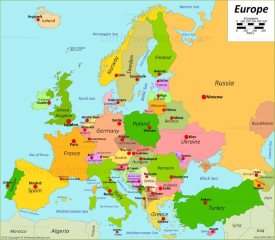
Physical map of Europe
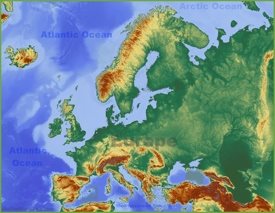
Rail map of Europe
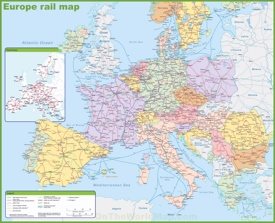
Map of Europe with countries and capitals
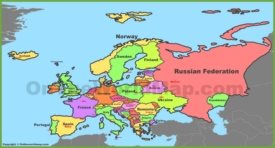
Political map of Europe
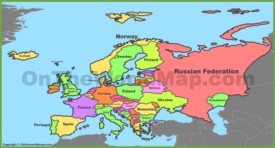
Outline blank map of Europe
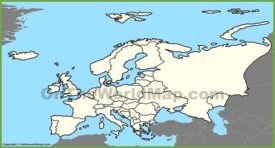
European Union countries map
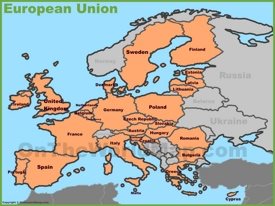
Europe time zones map
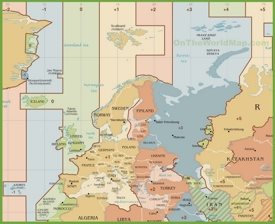
Europe location map
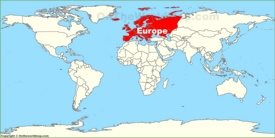
Regions of Europe
Balkan countries map
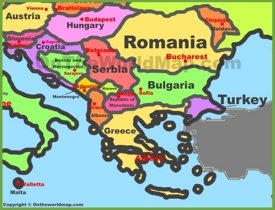
Baltic states map
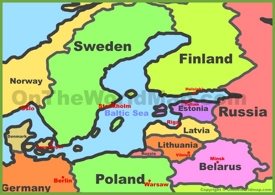
Map of Scandinavia
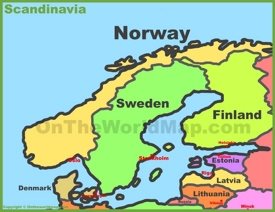
Western Europe map
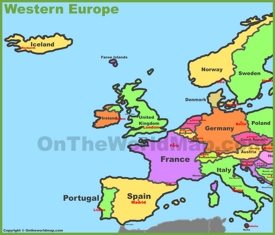
Map of Central Europe
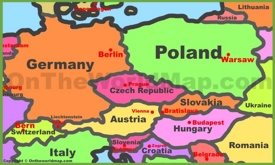
Map of Eastern Europe
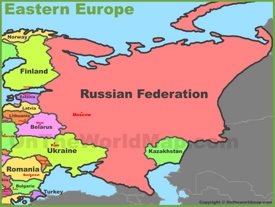
Map of Northern Europe
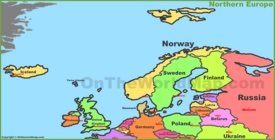
Map of Southern Europe
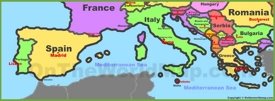
Map of Europe with cities
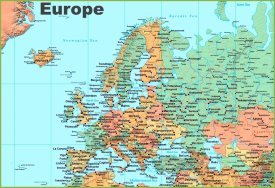
Countries of Europe
- Bosnia and Herzegovina
- Czech Republic
- Faroe Islands
- Isle of Man
- Liechtenstein
- Netherlands
- North Macedonia
- Switzerland
- United Kingdom
- Vatican City
Cities of Europe
- ALL CITIES OF EUROPE
- CAPITALS OF EUROPE
Capital Cities of Europe
- Capital - Country
- Amsterdam (official) - Netherlands
- Andorra la Vella - Andorra
- Athens - Greece
- Belgrade - Serbia
- Berlin - Germany
- Bern - Switzerland
- Bratislava - Slovakia
- Brussels - Belgium
- Bucharest - Romania
- Budapest - Hungary
- Cetinje (Old Royal Capital) - Montenegro
- Chișinău - Moldova
- Copenhagen - Denmark
- Douglas - Isle of Man
- Dublin - Ireland
- Gibraltar - Gibraltar
- Helsinki - Finland
- Kyiv - Ukraine
- Lisbon - Portugal
- Ljubljana - Slovenia
- London - United Kingdom
- Luxembourg - Luxembourg
- Madrid - Spain
- Mariehamn - Åland Islands
- Minsk - Belarus
- Monaco City - Monaco
- Moscow - Russia
- Nicosia - Cyprus
- Nur-Sultan - Kazakhstan
- Nuuk - Greenland
- Oslo - Norway
- Paris - France
- Podgorica (official) - Montenegro
- Prague - Czech Republic
- Pristina - Kosovo
- Reykjavik - Iceland
- Riga - Latvia
- Rome - Italy
- San Marino - San Marino
- Sarajevo - Bosnia and Herzegovina
- Skopje - North Macedonia
- Sofia - Bulgaria
- St. Helier - Jersey
- St. Peter Port - Guernsey
- Stockholm - Sweden
- Sukhumi - Abkhazia
- Tallinn - Estonia
- Tbilisi - Georgia
- The Hague (de facto) - Netherlands
- Tirana - Albania
- Tiraspol - Transnistria
- Tórshavn - Faroe Islands
- Tskhinvali - South Ossetia
- Vaduz - Liechtenstein
- Valletta - Malta
- Vatican City - Vatican City
- Vienna - Austria
- Vilnius - Lithuania
- Warsaw - Poland
- Yerevan - Armenia
- Zagreb - Croatia
- North America Map
- South America Map
- Oceania Map
Popular maps
- New York City Map
- Los Angeles Map
- Las Vegas Map
- Australia Map
- Germany Map
- Netherlands Map
- Singapore Map
- United Arab Emirates Map
- United Kingdom Map
- United States Map
U.S. States
- Arizona Map
- California Map
- Colorado Map
- Florida Map
- Georgia Map
- Illinois Map
- Indiana Map
- Michigan Map
- New Jersey Map
- New York Map
- North Carolina Map
- Virginia Map
- Wisconsin Map

8 Things To Know About Travelling to Eastern Europe
If you are planning a trip to Eastern Europe then this article is for you.
As a tour guide myself, I get the same questions from travellers who are travelling to Eastern Europe.
Hi, we’re Rach & Marty!
We’ve visited every country in the world and want to help you get the most out of your travels!
Whether you need an expertly planned itinerary , some experienced hints and tips , or just craving a delicious food adventure , we’ve got you covered!
We may earn affiliate commissions from websites we link to, at no cost to you. Click here for details.
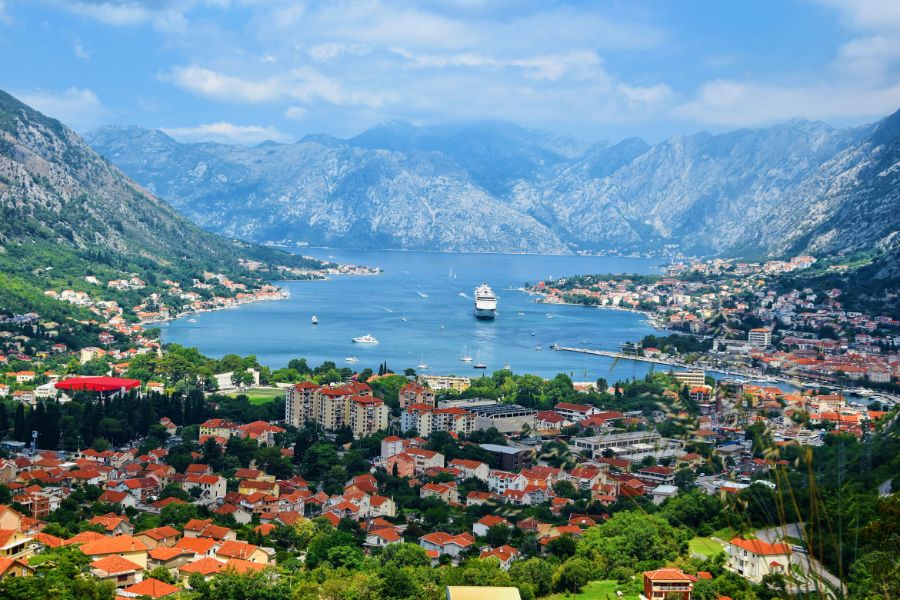
So I decided to answer them all here, and I am certain you’ll find this helpful.
Table of Contents
1. What countries are in Eastern Europe?
Let’s start with the definition of Eastern European Countries. This really depends on how you split Europe into regions. You either have Western and Eastern Europe or you split them into more appropriate regions of Balkans, Baltics, Central Europe and Eastern Europe.
In the wider sense, there are 20 Countries in Eastern Europe and they can be also split into these 4 regions.
- Central Europe: The Czech Republic, Slovakia, Poland, Hungary,
- Eastern Europe: Ukraine, Belarus, Bulgaria, Romania, Moldova and the European part of Russia.
- The 3 Baltic states : Latvia, Lithuania, Estonia
- The Balkans : Slovenia, Croatia, Bosnia & Herzegovina, Serbia, Macedonia, Kosovo and Albania
If are getting Balkans and Baltics confused, I recommend reading my article Baltics and Balkans Countries explained .
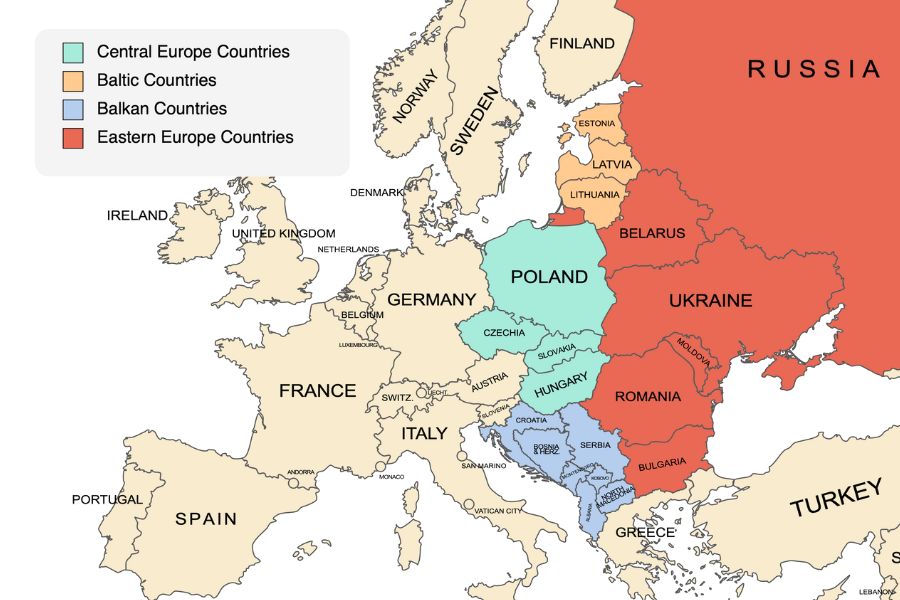
2. Is it safe to travel in Eastern Europe?
I have been asked these questions for many years but this year, the main reason is the war in Ukraine that has everyone worried. So let me answer both points:
Is travelling to Eastern Europe safe for solo travellers or women?
Absolutely yes. Apart from Belarus, every county in Eastern Europe has a lower crime rate than countries in Western Europe. So the chances of you being robbed, pickpocketed or involved in any form of crime are on par with Western Europe.
I personally feel safer as a solo woman on the streets of Eastern European capitals than in London or Paris at night. The point is, you are as safe as in Western Europe. Our 12 tips for safe travel apply when travelling to Eastern Europe and the rest of the world too.
Please note: Some capital cities have a small number of bars where male tourists end up “spending a lot of money” on drinks with pretty girls that invite them there.
Is it safe to travel to Eastern Europe right now with the war in Ukraine?
With the ongoing war in Ukraine, I hear more people being hesitant about travelling to Eastern Europe. Personally, being from Slovakia, I don’t believe it matters if you are in Poland, Germany , or Austria . Should this conflict spill over into other countries beyond Ukraine in Eastern Europe, they are all part of NATO and it would mean the whole of Europe is at war based on international law.

3. What is the best way to travel around Eastern Europe?
Is Eastern Europe easy to travel around? Yes, it is. Travelling to Eastern Europe from Western Europe is easy, there are plenty of flights to get you to your first point of travel or you can get there by train to bus. As for continuing your travelling in Eastern Europe, well the infrastructure is also great.
Here are recommended ways to travel around Eastern Europe:
Travelling in Eastern Europe by trains
While trains in Eastern Europe might not be as fast as TGVs in France or Switzerland and Italy, the good news is that there are many and they often cost a third of the price. There are great overnight trains with sleepers and some exceptional private trains too, such as Regiojet .
I wrote a dedicated blog on how to travel Europe by train for all the know-how. As for Eastern Europe, just remember the Balkans have too many mountains and trains might not connect all cities, buses are therefore a better option. But trains are a fantastic option for Prague – Bratislava – Budapest journey. You can continue on Belgrade or add Warsaw and Krakow.
I use Trainline to search, compare and book the cheapest train fares all over Europe. Their website is so user friendly and the prices are unbeatable with the average saving being up to 60 off%!
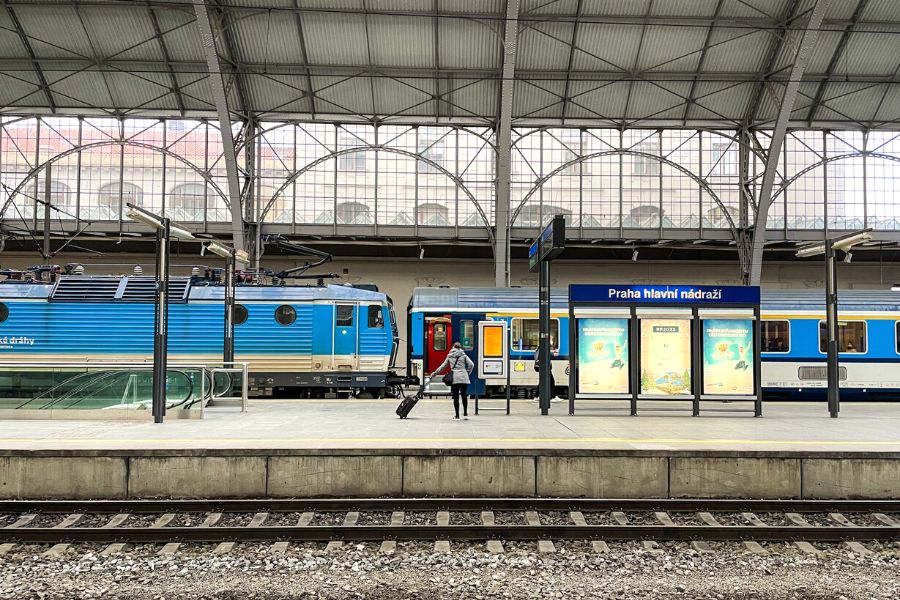
Travelling to Eastern Europe by bus:
You can get everywhere and anywhere on buses in Eastern Europe. Some of the best international routes are run by Flixbus (a German Company), Eurolines, Regiojet and Omnibus. The good news is that they often include free wifi, sometimes even a coffee and USB chargers.
Plus they can be super affordable and buying a ticket is easy online.
I recommend using Rome2Rio to check the connection for the best option to get from A to B. And to make instant reservations, we use Omio to reserve train and bus tickets all over Europe.
For domestic routes, you can always find buses that will get you there.
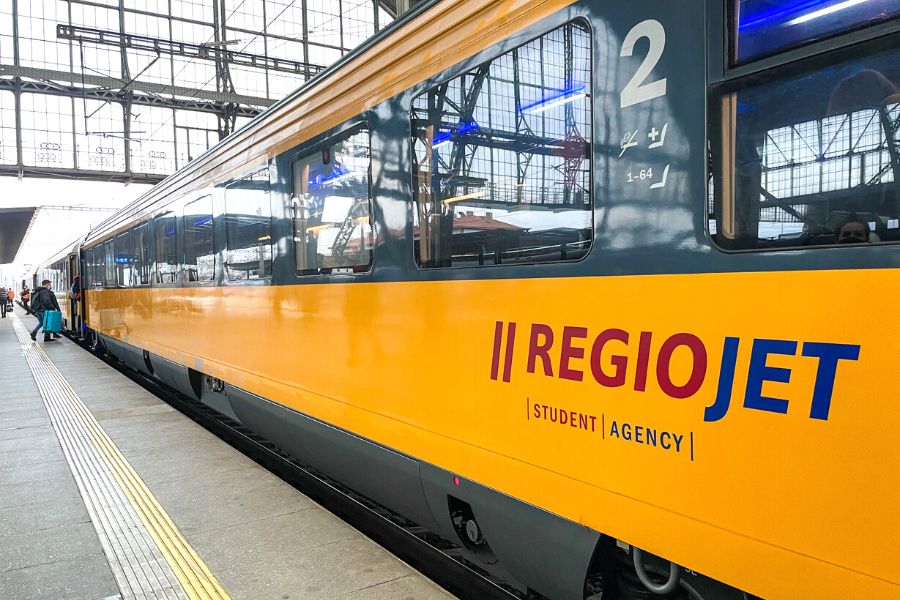
Car Rental in Eastern Europe:
Yes, car rental in Europe gives you a lot of freedom if you are keen to explore countries in depth with smaller towns or national parks.
If you’re planning to see the main cities, you are better off using a train/bus/plane to get between them and then public transport as the best way to get around the cities is on public transport (trans, metro, buses) and with a combination of uber/grab/taxi.
Parking, tolls, and the cost of fuel when renting a car might add up quickly when travelling to Eastern Europe and around. And sometimes being able to rest on a 5-hour train journey is a better option than a 4-hour drive by car.

Lowcost Airlines in Eastern Europe
With the expansion of low-cost companies across Eastern Europe, you can get some amazing deals with airlines such as AirBaltic, Ryanair, Easyjet and Wizz Air with a base in Budapest being the best one.
With Wizz Air, you might be able to fly from Bratislava to Sofia for as little as 11 Euros. Budapest to Zadar for 20 Euros.
To find the best deals, book on Skyscanner .

Is country hopping in Europe possible?
Absolutely. You can choose your type of transport with Omio or mix it up. Travelling to Eastern Europe these days can easily include multiple countries in a trip.
Get Connected with eSIM

Get connected easily on your travels—buy an eSIM! An eSIM works like an app: buy it, download it, and get connected in minutes! It’s easy, affordable, and convenient. Keep your original phone number, too!
Click below and view which eSIM data plan you need for your next adventure. Use our referral code: RACHEL5045 , to get $3 off your first purchase !
4. Which countries in Eastern Europe are part of the European Union?
When travelling to Eastern Europe, don’t forget to check your visa requirements. For most nationalities, travel here is straightforward within the EU (the majority of countries are part of the Schengen Zone where free movement without borders has been established across 26 countries), but it’s always good to check countries’ requirements from outside of the EU.
We wrote this post on The Complete List of all the Countries in the EU in 2023 to explain in more detail.
11 Eastern European countries are part of the European Union:
- Bulgaria, Croatia, Czech Republic, Estonia, Hungary, Latvia, Lithuania, Poland, Romania, Slovakia, and Slovenia.
9 Countries in Eastern Europe are NOT part of the European Union:
- Albania, Montenegro, North Macedonia, and Serbia are in the process of integrating the EU legislation into national law and might become part of the EU in the next years.
- Belarus, Bosnia and Herzegovina, Kosovo, Moldova, and Ukraine are not part of the EU, but some are hoping to join.
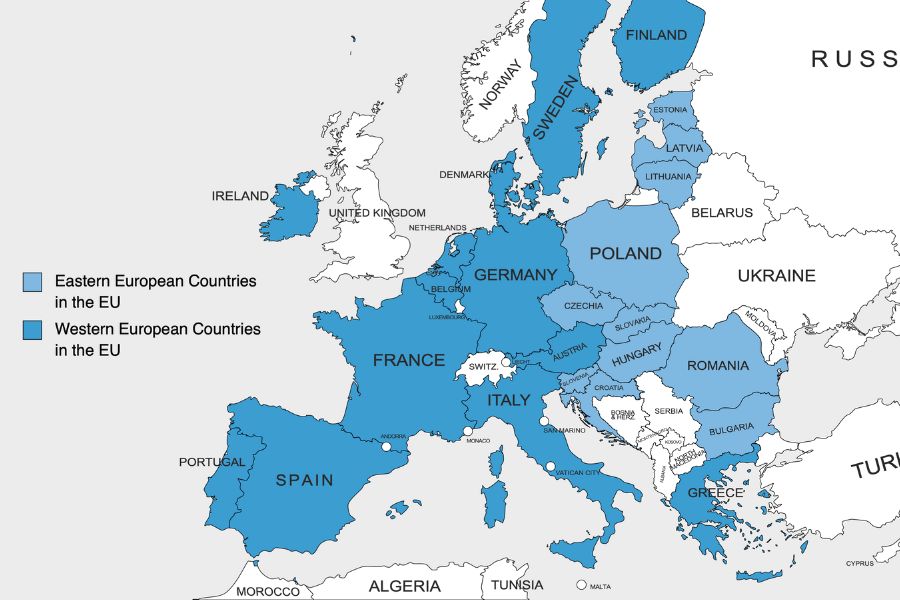
5. What is the best country in Eastern Europe?
This is a really difficult question to answer as each country has something to offer. Just because Croatia is more visited than Romania doesn’t mean it’s less worth it. Travelling to Eastern Europe is a joy because often you will find amazing places you knew little about.
I have visited all capital and main cities in Eastern Europe and for me, Prague, Tallinn, and Dubrovnik are three of my favourite. Perhaps my passion for eating the best Czech food in Prague keeps me returning time and again. It could also be because there are so many awesome things to do in Prague too.
As for my favourite county, I would have to say Slovenia. Gorgeous, with lovely capital beautiful nature, and fantastic food . and I love the Slovenian people.
Just don’t get Slovakia mixed up with Slovenia: Slovakia vs Slovenia – What is the difference?
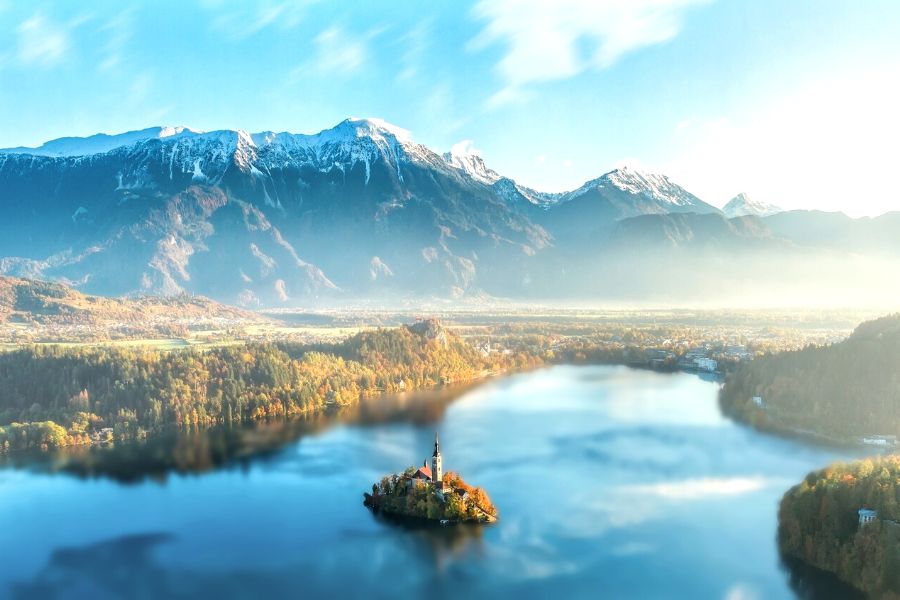
Make sure you get Travel Insurance before hitting the road. We recommend Heymondo & SafetyWing Travel Insurance.
Click here and get 5% off Heymondo from us!
6. Can I pay by card in Eastern Europe?
Yes, debit and credit cards such as Visa and Mastercard are accepted everywhere. American Express not so much, mostly in high-end shops, hotels, and restaurants.
The only time you’ll need cash is when buying fruit at local markets, souvenirs, and when paying at smaller restaurants. It’s always good to have cash on you and use the card when you can. Don’t forget that you might be charged an international fee for each payment unless you have a card that offers no international fees.
Read more about the debit card we use to travel the world with zero ATM or international fees. Or better yet, sign up for a WISE international bank account, a very wise move for sure.
Also, generally speaking, in bigger cities and capitals in Eastern Europe, more people pay by card than in smaller villages.
There are plenty of ATMs to withdraw money, but ALWAYS use official bank ATMs and avoid EURONET ATMs – they are scams and you will get the worse possible exchange rate. My friend was travelling to Eastern Europe and decided to take a lot of cash out in Prague in Euros – lost so much money as the ATM charge them really high fees.
Avoid Euronet ATMs. And if you must use one, then ensure you select to withdraw cash in the currency of the country you’re in, NOT in your home currency. If you do that, you’ll get a terrible exchange rate as I mentioned above.
7. Do people speak English in Eastern Europe?
Yes. The majority of the younger generation in Eastern Europe has learned English as a second language.
The opinion that nobody speaks English in Eastern Europe is very dated and it is one of the common misconceptions about Eastern Europe.
Of course, the ability to speak English does vary between the countries in Eastern Europe, but when in doubt, find someone under 40 and the chances are they will speak English.
If they don’t, please note that the majority of people in Eastern Europe do speak 2-3 or even 4 languages, English just might not be one of them for the older generation. If you know German, you might also try it, especially in the Czech Republic, Poland, Slovakia, and Croatia.
A nd Russian was commonly taught in the former Soviet countries (Estonia, Latvia, Lithuania, Ukraine etc).
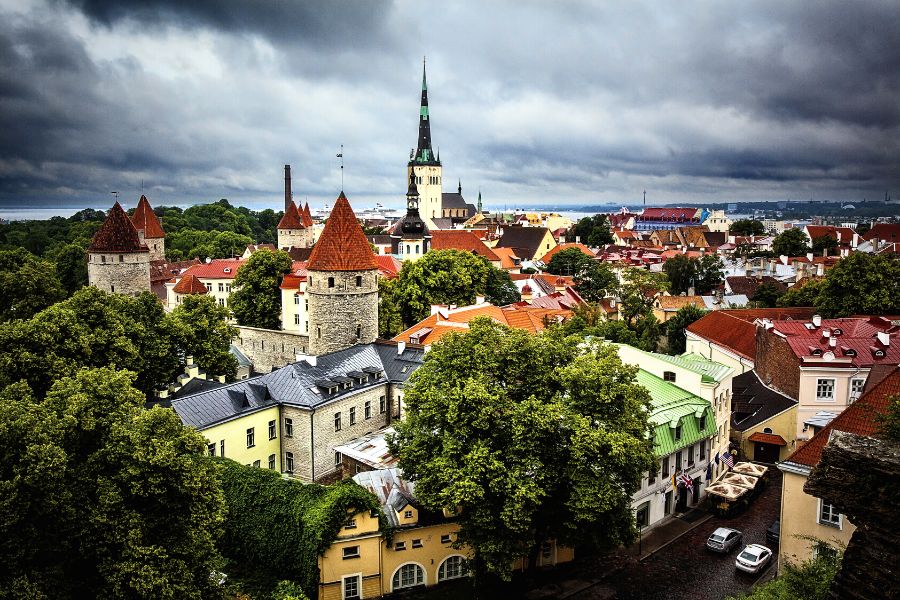
- 🔥 Hot Tip: Book accommodation in advance on Booking.com
- 🎟 Book your attractions and tickets online: We recommend Viator and GetYourGuide
- 🔋 Stay charged: This Belkin Power Bank is essential!
- 📸 Join a Group Tour: Find some amazing Group Tours here
- ✅ Get Connected with an eSIM: Fast, easy and affordable! View easy eSIM options here
8. Do Eastern European countries use Euro?
Just because countries are in European Union, it doesn’t mean they use Euro. We wrote this dedicated post about the countries in Europe that use the euro to explain this a little more.
Here is a quick list and map of countries in Eastern Europe that use the euro as their main currency.
There are 7 countries in Eastern Europe that use Euros as their currency:
- *Montenegro (not in the EU, but use Euro)
- *Kosovo (not in the EU, but use Euro)
And there are 6 countries in Eastern Europe and the EU that do not use the euro:
- Bulgaria – Bulgarian lev (will adopt Euro in January 2024)
- Croatia – Croatian kuna ( will adopt Euro in January 2023 )
- Czech Republic – Czech koruna
- Hungary – Hungarian forint
- Poland – Polish złoty
- Romania – Romanian leu
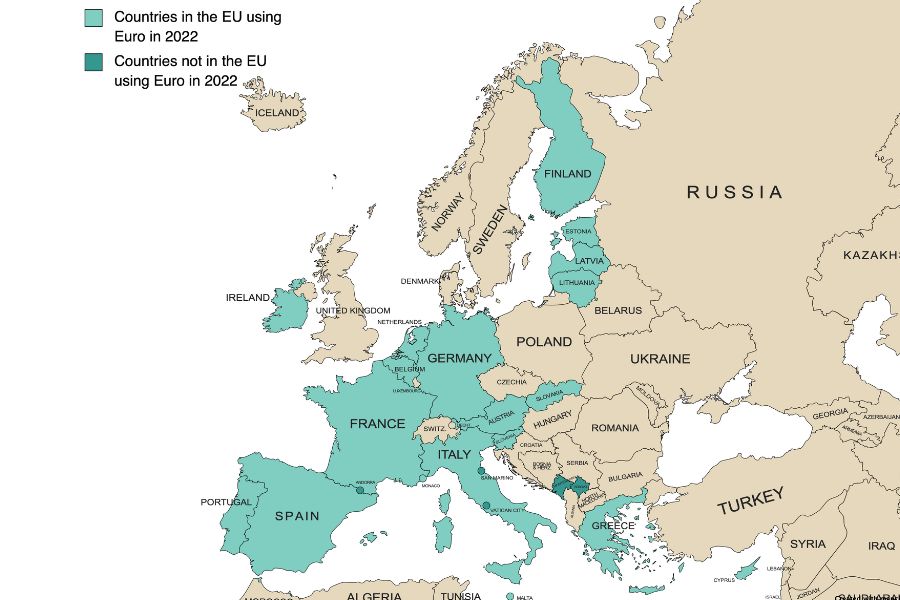
While Euro is not their currency, you might find some places accept euro for payment, especially in Prague, Budapest, or Dubrovnik. Usually, you pay a lot more in euros than when paying in local currency.
Countries in Eastern Europe and not in the EU that do not use the euro, but they own currency:
- Albania – Albanian lek
- Belarus – Belarusian ruble
- Bosnia and Herzegovina – Bosnia and Herzegovina convertible mark
- Moldova – Moldovan leu
- North Macedonia – Macedonian denar
- Russia – Russian ruble
- Serbia – Serbian dinar
- Ukraine – Ukrainian hryvnia
Best 10-day itinerary for Eastern Europe
One of the most common questions I get is where to go when travelling to Eastern Europe. Since people have 2 weeks, here are a few suggestions for Eastern Europe trip itinerary, or more specific a 10-day itinerary for Eastern Europe.
I have included an itinerary for 10 days across the Baltics, Balkans, Central Europe, and more of the East part of the Balkans.
You can connect these cities with public transport (bus or train) and can add some day trips as well, but as it’s based on 4 – 5 cities in 10 days, so it can be fast-paced.
- Best of Central Europe 10-day Itinerary: Prague – Krakow – Bratislava – Budapest (add Ljubljana)
- Best of Baltics in 10 days: Tallinn – Riga – Vilnius – Warsaw – Krakow
- Best of Eastern Europe in 10 days: Budapest – Ljubljana – Split – Sarajevo
- 10 Days across the Balkans Itinerary: Belgrade – Sarajevo – Mostar -Dubrovnik
- Eastern European itinerary from Black to the Adriatic Sea: Bucharest – Sofia – Skopie – Tirana – Kotor
If you are planning to visit Budapest, my 2 Days in Budapest Itinerary will have you covered for everything you must do.
For Bratislava, don’t miss these 13 Things to do in Bratislava Slovakia , and for the Czech Republic here are the 7 Best Things to do in Prague.
Don’t miss our EUROPE CITY GUIDES
- ROME 3 Days Itinerary
- VENICE 1-Day Itinerary
- FLORENCE 2 Days Itinerary
- AMSTERDAM 3 Day Itinerary
- PARIS 4 Days Itinerary
- BUDAPEST 2 Days Itinerary
- PRAGUE 2 Days Itinerary
- LONDON 1 Day Itinerary
- ATHENS 1 Day Itinerary
- BERLIN 2 Days Itinerary
- VIENNA 2 Days Itinerary
- LISBON 2 Days Itinerary
Travel Planning Resources
✈️ Flights : We use Skyscanner to book cheap flights worldwide.
🏨 Accommodation : Booking.com is our preferred platform for booking hotels and accommodation.
🏥 Travel Insurance : We recommend Heymondo ( Get 5% off Heymondo) & SafetyWing
🚌 Transportation : Trainline is the best website to reserve trains. We use Omio to book transport worldwide. For travel in Asia, we use 12Go.
🚘 Car Rental : We use DiscoverCars to book rental cars worldwide.
👫 Group Tours : G Adventures OR compare multi-day tours worldwide with Tourradar .
📸 Day Tours & Trips : GetYourGuide & Viator are the only two platforms you need.
📚 Lonely Planet: The Best Range of Travel Guides & Ebooks , and FREE Shipping! (use code RACHELDAVEY10 for a 10% discount)
🎒 Luggage : Osprey Farpoint 40L Backpack or Samsonite Luggage Range.
🛄 What to Pack: Don’t forget your Universal charger and a good power bank . To help you pack the essentials, here is our ULTIMATE Packing List for all Travellers .
🐶 Become a House Sitter: Join Trusted Housesitters and enjoy FREE accommodation worldwide. Use our invite to receive 25% off your new membership.
💰 Send Money Anywhere: WISE & Revolut are the best online accounts that let you send money, get paid, and spend money internationally. Both are so easy to use and way cheaper than any bank transfer.
📶 Stay Connected: Airalo eSIM allows you to get connected the moment you land at your destination, and you can avoid those expensive data roaming charges. We LOVE this product! Use promo code NOMAD15 for 15% off ALL eSIMs (new Airalo users only) OR use NOMAD10 for 10% off ALL eSIMs (for existing Airalo users)
✅ Check out our Travel Gear and Travel Resources for more valuable tips to save you money!
Tasty Food Adventures

Eating in Malaysia like a local – Number 1 Best Food Tour

20 Most Popular Foods From Venezuela
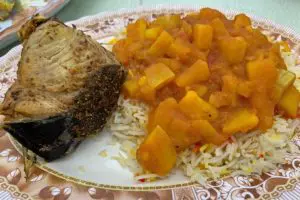
20 Most Popular Foods From Yemen

8 Best Places to Eat in Yeppoon
See all Food Adventure blogs
Expert Travel Guides

Eritrea Travel Tips | 10 Essential Things to Know Before You Go

Magical Island of Flores in Indonesia – 7 Day Itinerary
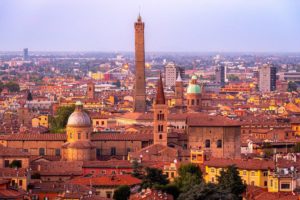
12 Amazing Things to Do in Bologna Italy

A Delicious Evening In Kyoto, Japan
See all our Travel Guides
Trusted Hints & Tips

Backpack vs Suitcase – Which One Should You Choose?

26 Best Travel Tips For Thailand (2024)

7 Best Tips for Traveling to Europe in 2024

5 Things I Really Hate About Air Travel
See all our expert Hints & Tips
2 Comments . Leave new
Great tips. Inspiring confidence. Thanks 🙂
Great information! Thank you!
Leave a Reply Cancel reply
Your email address will not be published. Required fields are marked *
Post Comment

Get our Rail Planner app
Plan your trip, get extra discounts, and show your Pass as you go.

Our favorite spring routes
Celebrate spring with these 7 off-the-beaten-path train routes

All about seat reservations
Everything you need to know about booking your seats

Alternatives to Busy Routes
Travel between popular European cities without seat reservations

Through our Chatbot in the bottom right corner.

Ask the Community
Browse questions from fellow Eurail travellers, or ask your own!
- Plan your trip
European Railway Map
- Order overview
- Reservations overview
- My Trips & Travelers
- {{translatedTraveler}} {{#promotional}} {{currencySign}} {{standardPrice}} {{/promotional}} {{quantity}}x {{currencySign}} {{finalPrice}}
- Child {{childPasses}}x FREE
- {{translatedPassType}}
- {{translatedValidityPeriodDescription}}
- {{translatedClass}}
- Remove Pass(es)
- {{variant.localizedTravelPackDescription}} {{quantity}}x Free
- {{variant.localizedPassUpgradeDescription}} {{quantity}}x {{currency}} {{price}}
- Your order will arrive by {{expectedDeliveryDate}} 1 x {{currency}} {{price}}
Your cart is empty
Your Eurail travel map
Start planning your Eurail adventure here. You can see the average train travel times between all the big European cities in 33 countries on the train map below.
Train routes through 33 countries
The map below shows the bigger cities in Europe, to which cities they are connected and how long it takes to travel between them. It's an interactive map, so start clicking around and planning your trip!
Click on the train icons to see the cities of each country, and click on the routes (the lines in between 2 train icons) to see travel times. The green lines represent trains; the blue lines are ferries.
Please note that routes may change throughout the year. This map doesn’t show any (temporary) disruptions on the rail network; find more information on disruptions here .
Don't know where to start? Use our Trip Planner to find the best Eurail Pass for you!
Traveling with a eurail pass.
With a Eurail Pass you can travel in all countries on the Europe rail map above, now including Great Britain. Please note that most high-speed trains and all night trains need an advance reservation . These are not included in your Eurail Pass. We can help you book your seat reservations for 95% of the trains in Europe.
Travel times for 10 most popular routes
Check out the travel times between Europe's most popular cities. If you'd like to know more about a specific route, just visit our Popular Routes section .
Feel free to also play around with the Europe travel map above to see where else you could go with your Eurail Pass!
European itineraries
The Eurail railway map is a great resource for planning the perfect itinerary. Check out some examples of spectacular European itineraries you can experience with a Eurail Pass.
Follow one or more of our itineraries, or use parts of them to create your own. Planning your trip is half the fun, and with these itineraries, you get to see the very best of Europe!
Choose the right Pass
Not sure which Eurail Pass meets your travel desires?
Not to worry! Our Trip Planner will help you find the perfect Pass for your trip!
Change of currency
You cannot change the currency once you have a Pass in your cart. Remove the Pass, and then change the currency on the website header.
Train Travel in Eastern Europe – The Adventure of Lifetime with this Amazing Eastern Europe Itinerary!
By: Author Jim Vail
Posted on Published: 3 September 15 - Last updated: 3 January 24
Home » DIY Travel » Train Travel in Eastern Europe – The Adventure of Lifetime with this Amazing Eastern Europe Itinerary!
An insider’s guide to train travel in Eastern Europe! A fantastic read for anyone who wants to ride a train across Europe! Plus, after reading this guide, you will not be able to stop yourself from buying tickets and riding across Europe.
Living in Germany allowed us to start exploring Eastern Europe and those post-Soviet countries that all gained their independence in around 1991. Taking the trains allowed us to get a taste of a few new countries at a time, meet the people, and see the landscapes glide by through the windows.
In this guide to using trains in Eastern Europe and the Eastern Europe rail pass, ee’ll share our planning strategy, suggested routes, and planning tools.
On top of that, we’ll also try to answer some frequently asked questions about train travel in Eastern Europe. And finally, we’ll share some stories from our journey.
In this article, you’ll learn:
Common Questions About Train Travel in Eastern Europe
- An Epic Eurail Eastern Europe Itinerary
- Tools for Planning a European Train Trip
Apps for Train Travel in Eastern Europe
- What are Train Stations like When You do Train Travel in Eastern Europe?
More Useful Resources for Train Travel in Eastern Europe
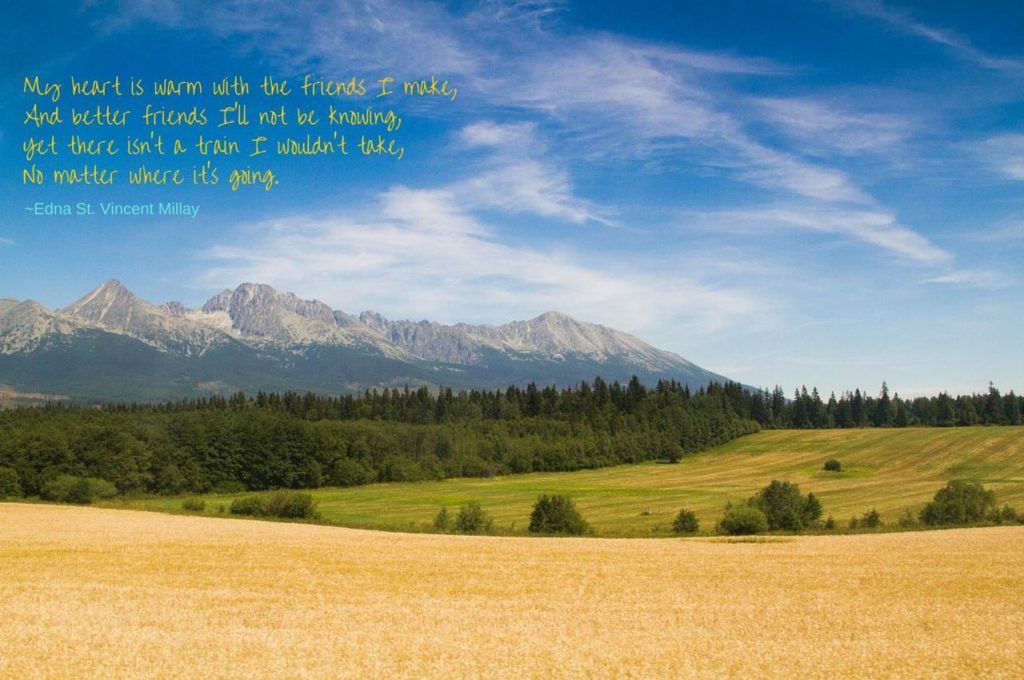
We really enjoyed taking the overnight trains from Ankara to Istanbul and Izmir while we were living in Turkey , and that is more what we had pictured. All of these thoughts and more were bubbling around in our heads and for the first time in a long time the prospect of going through the motions of travel, the getting from point A to point B, was something of a mystery.
When our Eurail passes arrived in the mail in early June I thought, “We have plenty of time to plan this trip.” There was this vague, nebulous idea that we would ride trains and our stops could be the capital cities of Eastern Europe.
We knew we would visit as many UNESCO World Heritage Sites as we could and that we wanted to visit as many new countries that time allowed. But when it came down to planning and figuring out a specific route we just kept avoiding it. What a chore!
And wouldn’t all of that planning and scheduling turn the trip into a checklist of sights and cities? Where was the adventure and romance of traveling through Europe on a Global pass, going wherever our fancy took us? It was easy enough to put off all of that drudgery!
We had lots of questions to answer while we were planning our train journey through Eastern Europe.
Is Train Travel in Eastern Europe Safe?
Traveling by train between cities is not the same thing as traveling on public transportation within cities. To begin with everyone should have a seat. So, there aren’t people bumping into you, trying to grab your wallet or camera.
That doesn’t mean there is no theft. It’s a good idea to keep your most valuable items, like your passport, credit cards, and money on your person. Especially on night trains, you will fall asleep, and that will give an opportunity to someone to steal.
It’s important to be aware of your surroundings, and know where your luggage is (try to stay as close as possible to it). On all the trains we’ve taken in Europe, we never felt unsafe, and we never had anything stolen. Everyone we met were just trying to get somewhere.
Do They Check Passports on Trains in Eastern Europe?
At every border, customs agents got on the train. In the Schengen zone, they visibly calculated how many days you had left on your visa. In fact, when we traversed Poland to Slovakia, a young couple were kicked off because they’d overstayed their Schengen.
Crossing the borders of all the Eastern European countries, the customs agents were thorough, but not intimidating, just like the ticket collectors.
Do You Need Seat Reservations on Trains in Eastern Europe?
One of the questions we got a lot was, “Did we always need a seat or ticket reservation?” It usually only costs a few euros to reserve a first class seat (if there is a first class car on the train) so if you have time you might as well get the reservation.
We found that many of the ticket clerks would tell us if we didn’t really need the reservation and they were always spot on. Sometimes, however, you don’t have time to make the reservation or even inquire about it. What does an intrepid Eurail traveler do in these situations?
Leaving Krakow we had intended to head north to Warsaw and had made the reservation in the afternoon the day before we planned to depart. During the evening we talked ourselves out of Warsaw and right out of Poland.
It was time to start heading south and east, that’s why we came on this trip wasn’t it? The reservation was free so we just scrapped it.
The ticket office in Krakow is open all night but I wasn’t really feeling up to the 15-minute walk at midnight so we just consulted our trusty DB Navigator , found a train leaving early the next morning, got a few hours of sleep and then jumped aboard the train for Zilina.
There weren’t any first class cars so we just grabbed a seat in second class and had a great time making friends. In Zilina we switched trains to Levoca and–yes!–there was a first class car.
The second class cars were all overloaded with no seats to be found. We had to walk through all eleven cars with the hopes that first class would have some seats available.
We checked carefully once we got there and found the last two empty seats on the train had reservation labels on them. We had learned to read them carefully and, as luck would have it, the previous occupants of these two prime seats had only been riding from Bucharest to Zilina.
They had just left when we got on. We took the seats and relaxed comfortably while at every other stop we saw more and more passengers boarding without reservations or seats.
Did we always need reservations? No, but it sure would have been better that time around. So did we go to the train station and talk to a person to plan all of our routes?
No way. Most of these ticket offices or traveler information desks are so busy, especially in summer, that we would have wasted far too much time waiting around.
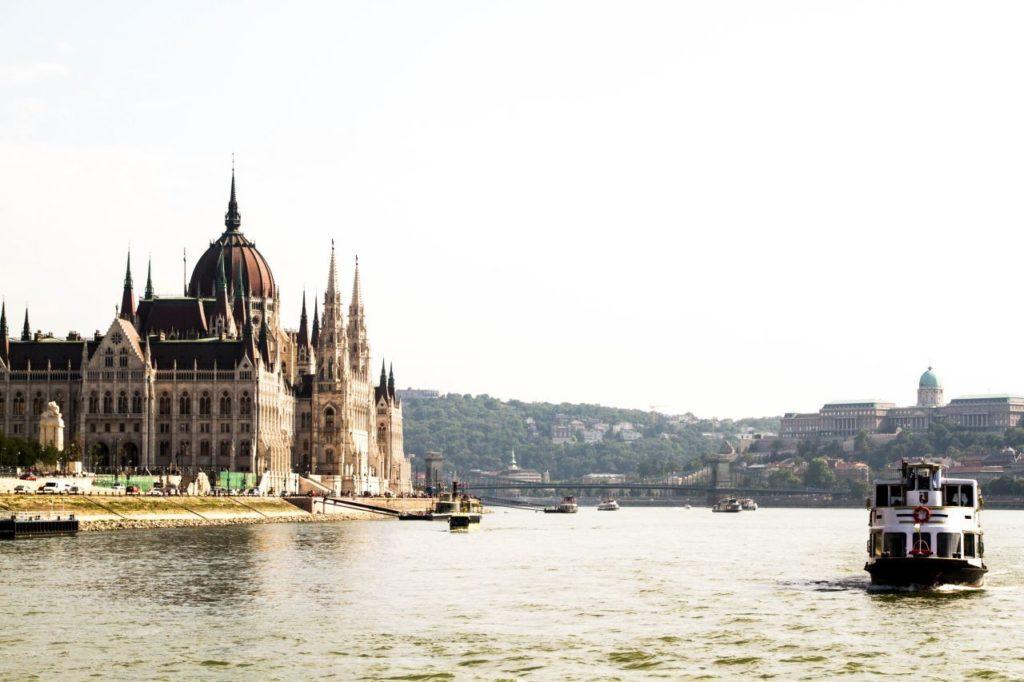
Building Our Eastern Europe Itinerary
We had the map that came with our passes, and we loved pulling it out and just dreaming about the routes we’d take and the cities we’d visit, but reserve a specific train on a set date? Two months ahead of the visit?
No way. Instead, we spent time looking for resources, trying to figure out the best way to go about this and still maintain some spontaneity.
In the end, we came up with a set of tools and resources which helped us along the way, and it seems like a good idea to share those with others and hopefully help them save some time in their own journey.
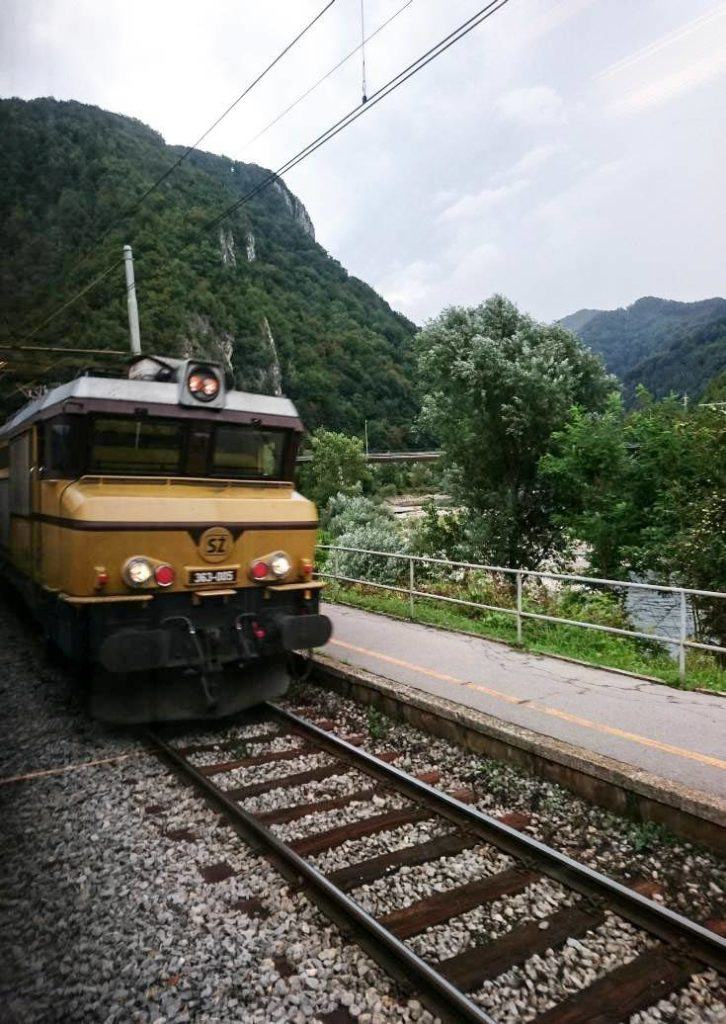
Knowing where we wanted to visit along the way was helpful, and once we picked our first destination, everything else just started falling into place.
There were some days on the trip where we changed routes two or three times based on something we read online or after listening to some fellow traveler’s advice. But somehow, everything just worked during our train travel in eastern Europe.
Our final Eastern Europe itinerary turned out like this:
Weiden, Germany–Krakow, Poland–Levoca, Slovakia–Budapest, Hungary–Sibiu, Romania–Bucharest, Romania–Sofia, Bulgaria–Thessaloniki, Greece–Skopje, Macedonia–Belgrade, Serbia–Ljubljana, Slovenia–Graz, Austria–Murzzuschlag, Austria–Weiden, Germany
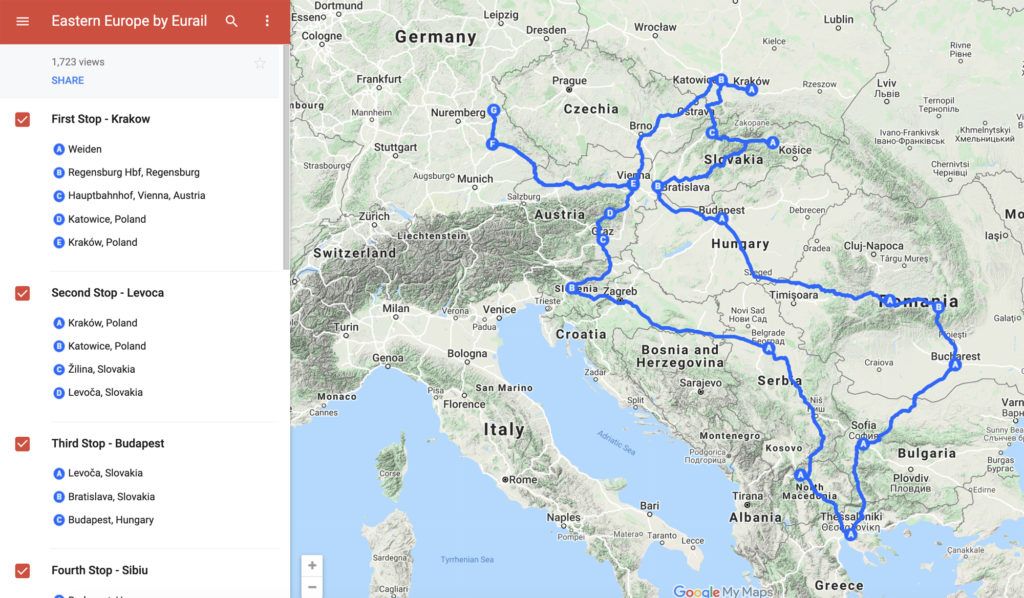
Train Travel in Eastern Europe – Our Train Trip Begins
Walking from our front door to the train station in our little town of Weiden, Germany , we weren’t really sure what was in store for us. Sure, we’ve both been on trains before. Even long distance overnight trains.
Would the trains of eastern Europe be clean, comfortable, and fast like those in the west? Or crowded, slow, hot and grimy, like those crossing the subcontinent of India? More likely, we thought, somewhere in between.
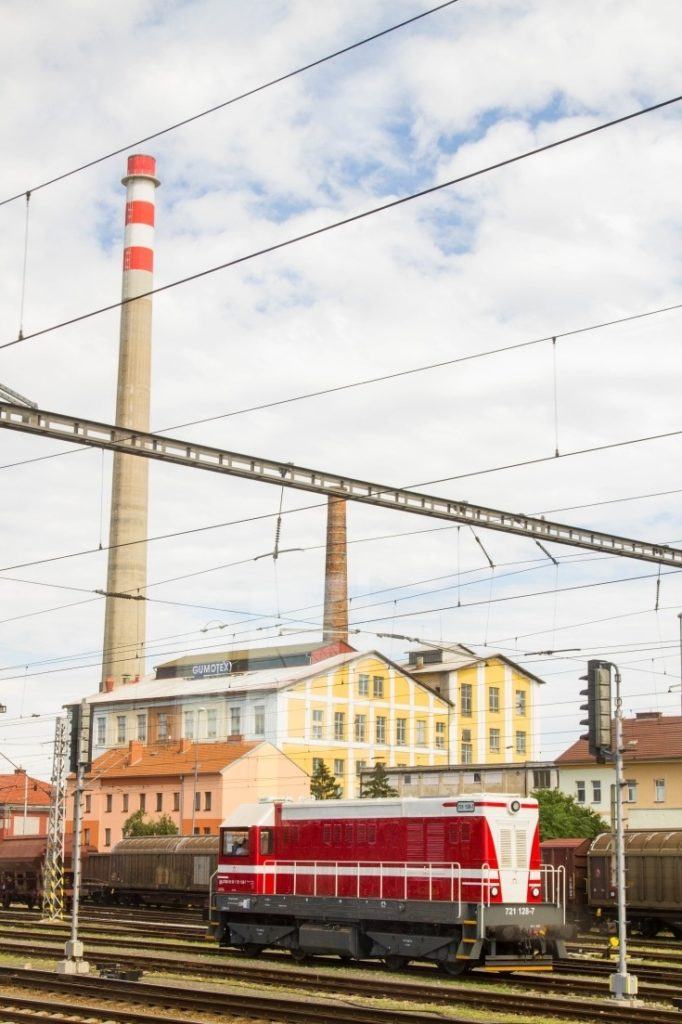
Weiden is a small town with a two-platform station. A few intercity trains go through and even fewer actually stop, so from there we had to take an hour-long commuter ride to Regensburg .
This short sleek new train was fast and comfortable. We were actually cold inside the car, while outside it was the beginning of one of the most blisteringly hot heat waves in Europe’s recent history.
We must have been showing our eagerness and excitement all over our faces; we looked so happy to be on our way that the ticket agent asked us within ten minutes if we wanted her to take our photo. We did!
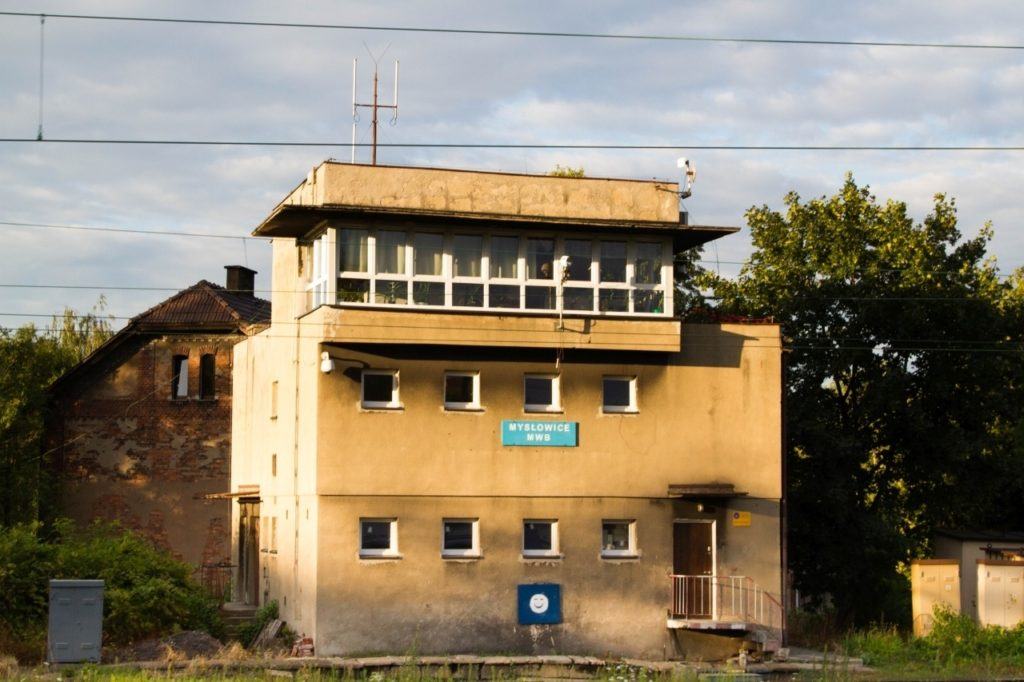
Aside from this short interaction, train travel at the beginning of our trip was impersonal and sterile. We seemed to be traveling in our own bubble much like during air travel.
As we traveled east and then south that bubble expanded and grew to include more passengers in nearby seats. Somewhere outside of Skopje that bubble burst completely and we were part of a larger community now; all traveling, talking, commiserating, and sweating together in one car packed full of passengers.
Leaving Belgrade and traveling back west and then north we could feel that bubble contracting back towards us and enclosing us in the safe but less than stimulating travel cocoon of western Europe. It seems the more modern and fast the trains traveled the more we were isolated from our fellow travelers.
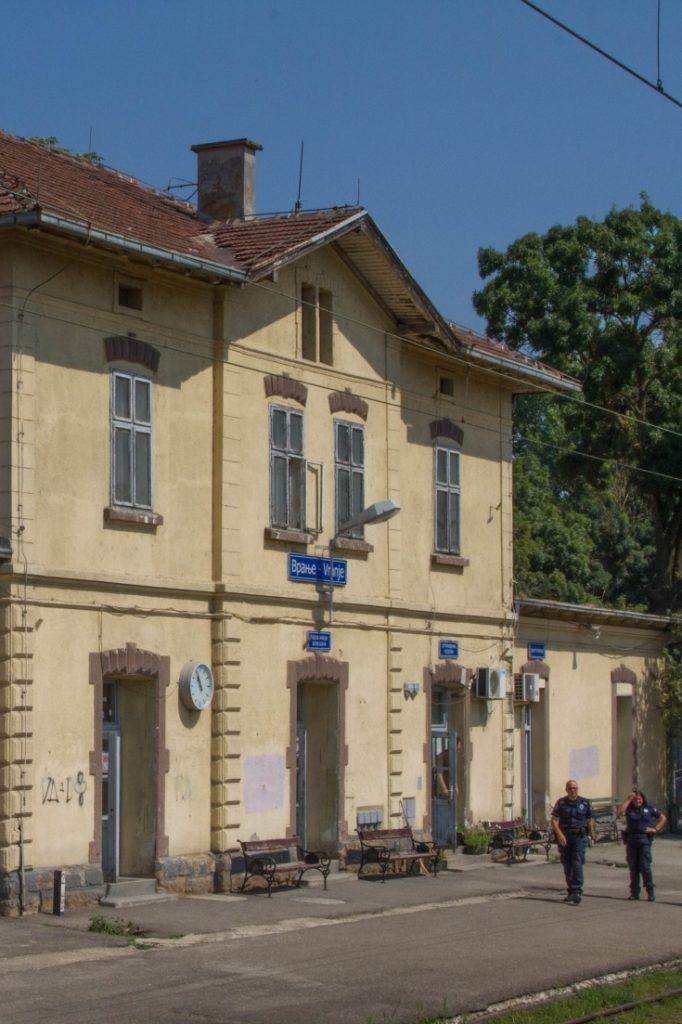
Perhaps the best example of train traveling working as a catalyst for creating community happened to us on the route between Romania and Bulgaria.
The train connecting Bucharest to Sofia, one of many magnificent Eastern European capitals , seems to have been put in place with the sole purpose of transporting backpackers and other tourist-type rail pass passengers from one major hub to another.
The train consisted of an engine and two cars and none of the passengers we encountered on that trip were from Romania or Bulgaria, everyone of us a traveler, all backpackers in spirit despite the actual luggage being carried.
That train started out as any other in the East. No air conditioning, windows open, passengers sitting quietly in their cars, some sleeping, others reading, small groups in conversation.
The usual banter back and forth: “where have you been on this trip?”, “where are you going?”… exchanges of hotel information or hidden treasures found along the way. All of that ended, however, at the border.
Our train arrived at the border crossing on time and we all sat patiently as the border patrol came on and checked passports.
After they left and we continued to sit in the hot sun, people began to get restless, walking up and down the aisles, exchanging theories on the delay–the bubble was expanding.
After half an hour someone realized we were waiting for the train coming from Sofia, the two engines would be detached and then reattached to the other train’s cars and then pull them back into the engines’ countries of origin. The tourists and the passenger cars could cross borders, but not the engines or their drivers.
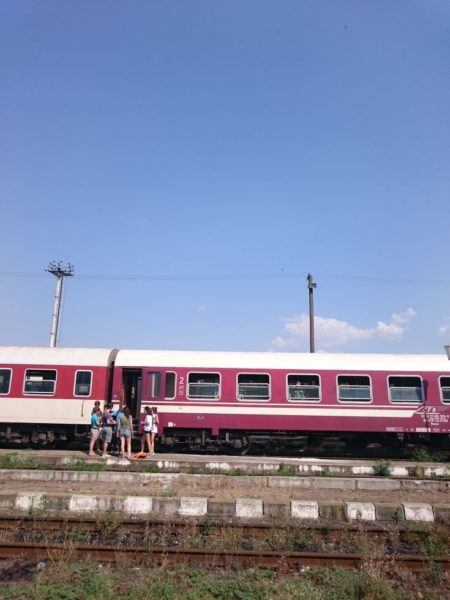
After an hour with no sign of the Bulgarian train, passengers began climbing out of the cars. We descended upon that poor somnolent station building like a swarm of lotuses looking for food. Literally.
We were looking for food and drink. No one had been prepared for the delay and water (and alcohol) rations had run dry in the 100 degree heat. A foraging explorer from New Zealand found a small kiosk operating out of a ramshackle hut on the edge of the tracks selling water, snacks, ice cream and beer.
Soon, the entire contents of both cars had spilled out onto the one and only cement platform and an impromptu party broke out. There were toasts to be made, songs to be sung, food to be shared, arguments to be won, friends to be made, breakups, hookups, tears, laughter and–finally–cheers!–as the long overdue train chugged up the tracks towards our motley crew.
Back aboard the train there was a new sense of camaraderie and for a few, at least, the party continued on down the tracks.
This one train ride encapsulated the entire adventurous, and might I say, nostalgic experience. Everything I’d ever read, every story I’d been told or movie I’d seen about a train trip was found in that one leg of our journey.
To be sure, parts of that experience were repeated throughout our adventure but never was it all to be found again on one single train ride.
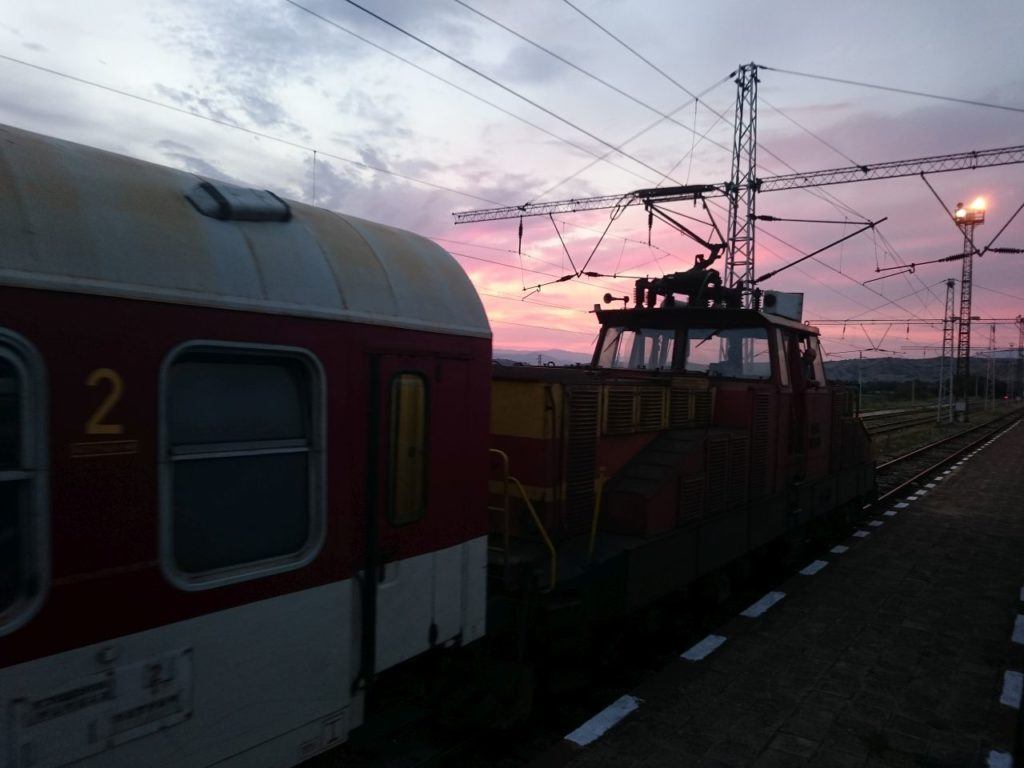
Beautiful sunsets were just one of the bonuses of train travel in Eastern Europe.So, aside from the adventure and the sense of mystery and facing the unknown, why travel by Eurail? The internet is overflowing with blog posts and articles about how to travel cheaper by rail.
But if you read those posts you’ll quickly discover that while it may be true that we could have done our entire journey for less than the cost of the Eastern Europe Rail Pass, we would have had to know six months prior exactly where and when we wanted to travel.
All of the legs of the journey would have needed to be booked and reserved so far in advance that there would have been no mystery, no flexibility, no unknown to face and overcome.
We were able to use our passes with a magical sense of power. A magic wand allowing admittance and passage across flowing visions of mountainous landscapes, windswept plains, and mirror like lakes reflecting the reds and pinks of sunset as we rattled off into the night.
At no time did our passes let us down. I’m pretty sure that there was one bus in Austria where the mere flash of our rail pass bewitched the driver and convinced him to let us board and ride for free.
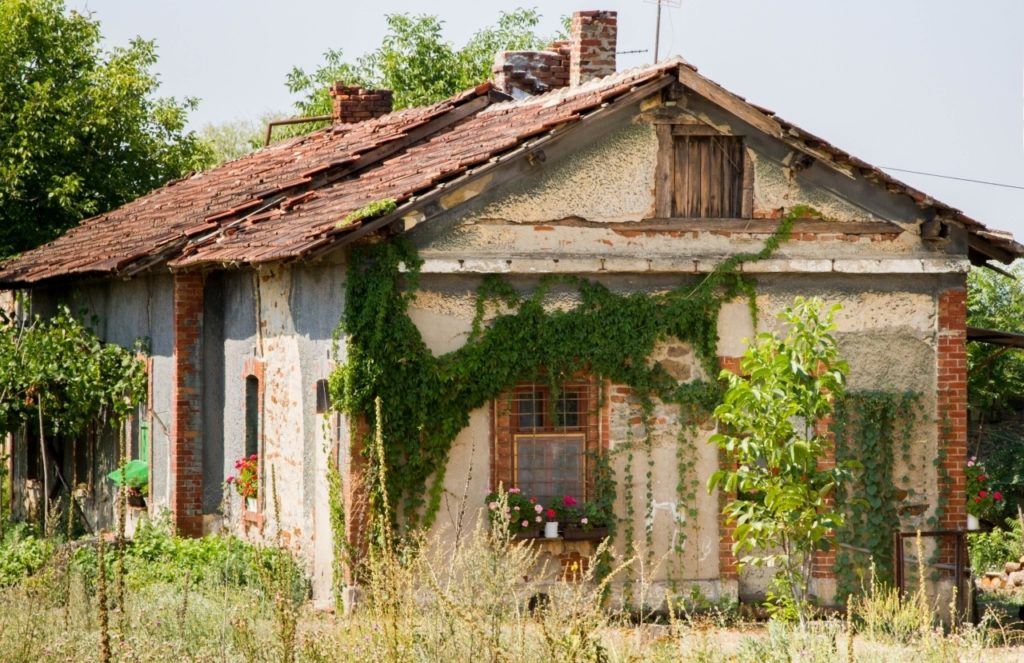
An Epic Eurail Eastern Europe Itinerary – Train Travel in Eastern Europe
For our sample easter Europe train adventure we recommend starting out in Munich, Germany. This is a very easy destination with many affordable low cost airlines serving it. Of course, you could start your journey somewhere else along the route. Do some careful searching for cheap flights into Munich, Vienna, Prague, or Warsaw and choose the starting point that works best for you. All of these cities make an excellent starting point for this itinerary.
Munich, Germany
Munich is one of the easiest and cheapest airports to fly into. For this reason it is often the starting point for an eastern Europe train adventure. However, don’t just land, get off a plane, and climb onto a train. Take some time to visit this bustling Bavarian capital. While you’re here consider checking out: the world famous Hofbrauhaus , Berchtesgaden , and the biggest party on Earth – the Oktoberfest (if the time is right). Be sure and check out some of these must try German dishes while you are here, as well.
Time allotted: 2 days Where to stay: Design Hotel Stadt Rosenheim Munich Where to eat: Hofbrauhaus , Wirtshaus in der Au
Prague, Czech Republic
Czechoslovakia was one of the first countries to part ways from the Soviet Union and later went through the Velvet Divorce splitting into the two countries of Czechia and Slovakia. Both of these incredible countries should be on any Eastern Europe itinerary.
Czechia is best known, in my view, for inventing the best beer in the world, pilsner. The capital city, Prague, is a fairytale town with towering gothic spires, and wonderfully ornate architecture. Don’t miss the Top Attractions in Prague like the Charles Bridge, the Astronomical Clock, and the Clementinum (best view in the city). Of course, when in Prague, everyone should have a beer at U Fleku, a warm trdelnik from a street vendor, and some roast pork with bread dumplings.
Time allotted: 2 days Where to Stay: Unitas Hotel Where to eat: U Fleku , U Parlamentu
Krakow, Poland
Poland’s relatively flat landscape, punctuated by rolling hills and shallow river valleys, makes for easy traveling by train; while it’s medieval town centers offer a vibrant splash of color. Spending two days in Krakow provides the perfect introduction to this friendly country. Explore somber WWII history with a visit to Auschwitz , then go way back in time plumbing the depths of Wieliczha Salt Mine , and later take some time for a beer and pierogi in the old town central square.
Time allotted: 2 days Where to stay: Betmanowska Main Square Residence, Hotel Gródek Where to eat: Pierogarnia Krakowiacy , Gościnna Chata
Levoca, Slovakia
The train journey from Krakow to Levoca is one that needs to be taken during the day. Be sure to be on the left side of the train after leaving Zilina for the best views of the High Tatras mountains. The UNESCO inscribed walled town of Levoca is a renaissance dream . Spend the night in one of the quaint inns in the center and then explore the town in the morning. Don’t miss the Gothic church, the “cage of shame” and the old town hall.
Time allotted: One overnight Where to stay: Hotel U Leva Where to eat: U Leva
Bratislava, Slovakia
Bratislava , the capital of Slovakia, is a vibrant city embracing its proud past through a robust building renovation program. Most of the central Old Town has been restored to its medieval and Baroque splendor. Aside from taking a stroll back in time around the expansive pedestrian zone, visitors shouldn’t miss the Blue Church, the quirky sculptures, and the beautifully restored castle.
Time allotted: 2 days Where to stay: Art Hotel William, Arcadia Boutique Hotel Where to eat: Koliba Kamzík
Budapest, Hungary
Few cities have as much charm and old world mystique as Budapest . Spanning both banks of the Danube River, this incredible city of spas and baths is full of romance and culinary treasures. Take a cooking lesson , ride the Children’s Railway , and just explore the sights. Of course you must have a hearty plate of chicken paprikash, some goulash, and a bowl of fish soup on a river boat.
Time allotted: 2 days Where to stay: Danubius Hotel Gellert, Novotel Budapest Danube Where to eat: Kéhli Vendéglő , Szegedi Halászcsárda , Mazel Tov
Known for its haunting stories of Transylvanian vampires, Romania today is anything but scary. This beautifully idyllic countryside provided hours of gorgeous scenery in our window. Get off the train to see ancient castles, fortified churches, and stunning landscapes. Must try foods include mamaliga (polenta), salata de vinete (eggplant dip), and Fasole făcăluită (bean casserole).
Our recommendation is to get off the train for Sightseeing in Sibiu . Then rent a car for a few days and take a road trip to: fortified churches , Sighisoara , the Transfagarasan Highway , and Transylvania. Continue by train to Bucharest for a visit to the capital city.
Time allotted: 4 days Where to stay: Art Hotel (Sibiu), Cavaler (Sighisoara), Trianon (Bucharest) Where to eat: Casa Krauss (Sighisoara), Caru’ cu bere (Bucharest)
Sofia, Bulgaria
Bulgaria is situated on the historical land route into Europe from Asia. Because of this, it has seen countless invasions throughout history. Sofia’s architecture, therefore, is a crazy mix of everything from ancient roman ruins, Byzantine churches, Ottoman mosques, to Soviet gothic stadiums. This makes exploring the city particularly fascinating as you never know what to expect around the next corner. Don’t miss the multi-domed Saint Aleksander Nevsky cathedral, the ruins of ancient Serdica, and a stroll down Vitosha Boulevard pedestrian zone.
With extra time rent a car and explore the surrounding countryside with a trip to Rila Monastery or the wine growing region around Melnik .
Time allotted: 2 – 3 Days Where to stay: L’Opera House Where to eat: Moskovska Restaurant 15 , Rainbow Factory
Thessaloniki, Greece
It may be the cradle of Western Civilization but Thessaloniki still feels like Eastern Europe to me! History is everywhere in this city. And if that’s not your cup of tea, head out to the beach for some sun, swimming, and a waterfront seafood feast. Thessaloniki is a great base for exploring the surrounding countryside, especially on a road trip . From here, a visit to the stunning clifftop monasteries in Meteora is a must. With a little extra time, head into the mountains and checkout the Oracle at Delphi .
Time allotted: 2 – 3 days Where to stay: Orestias Kastorias (Thessaloniki), Kastelia (Meteora) Where to eat: The Rouga (Thessaloniki), Taverna Gardeina (Meteora)
A trip to the Balkans could easily be its own adventure. We really wanted to experience as much of eastern Europe as possible on this trip so we made overnight stops in Skopje, North Macedonia , Belgrade, Serbia , and Ljubljana, Slovenia . It would really take quite a bit more time to explore these countries further as the train system coverage makes travel within country time consuming, if not impossible. Still, as far as authentic travel goes, the Balkans can’t be beat.
Time allotted: 3 overnights Where to stay: Hotel Alexandar II (Skopje), Garden Hotel Srbija (Belgrade), City Hotel Ljubljana (Ljubljana) Where to eat: Old City House (Skopje), Restoran Lovac (Belgrade), Julija (Ljubljana)
Make your back to Munich before your Eurail pass expires and enjoy one last beer and wurst before you catch your flight back home!
Tools for Planning a European Train Trip and Using Trains in Eastern Europe
There are several tools that really make it easier for you to get from point A to point B, but the starting point for most of our journeys was a map–a real, paper map. Sometimes you just want to unfold a map, spread it out on the table and let your imagination take you down the roads, train lines, rivers, whatever as you use trains in Eastern Europe!
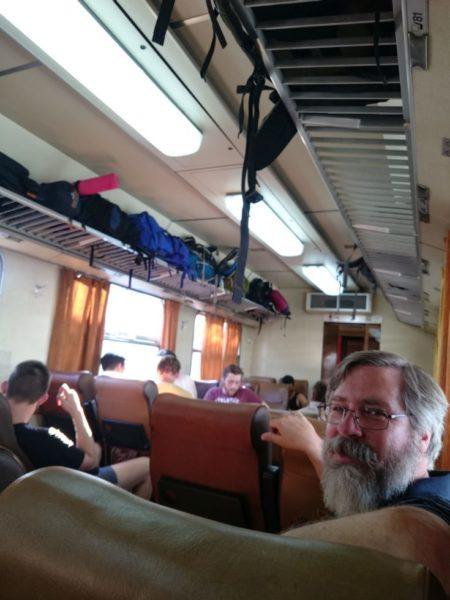
Being able to see the big picture is invaluable in this age of phone screens and tablets. Sure, with the device there’s a lot more information at your finger tips, but it’s sometimes hard to connect the dots when you’ve swiped in and out and around so much that your original starting point is somewhere out in the clouds.
And it can be hard finding a good map that shows the train networks in Europe.
Most road maps don’t do a good job of this and the small maps in most travel books are pretty useless for planning a multi-country trip. There are some good rail maps available for purchase, but we just used the planning map that came with our Eurail packet.
Did it show every route in every country we visited during our Eastern Europe itinerary? No, but it did show the major routes, enough to know if you could get from point A to point B without too many train changes.
Google Maps
That’s where our iPhones really paid off. Our data plan is pretty generous and includes unlimited data in most of Europe; theoretically we could be online in most of the countries we visited. However, in practice we were without data more often than we had it.
We needed good offline tools and luckily there are plenty of them out there. We found that by using wifi or data when it was available we could plan a leg of the journey and then go offline and have all of that info still at our fingertips. One of the best tricks we discovered was using Google Maps offline.
But Google Maps will do so much more for you then just getting from one place to another. It has become the defacto goto app for restaurant and hotel reviews, used by both travelers and locals alike.
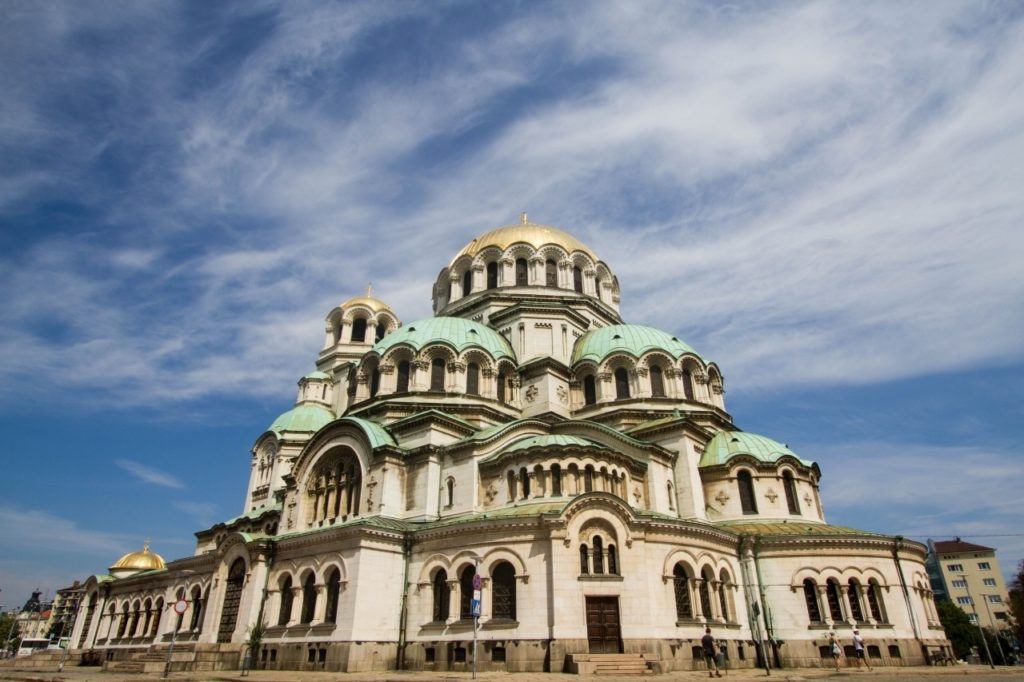
Tips for Using Google Maps Offline When You Do Train Travel in Eastern Europe
If you Google “using Google Maps offline”, you’ll find the answer quick enough. It’s really not a secret. There’s a couple ways to get it done but the easiest is to search for the name of the city or town where you’re heading then zoom in or out to get the area you’ll need and type “ok maps” in the search bar.
A quick download and the map is available when you’re offline simply by tapping on the three bars icon and choosing “your places”.
Another useful tip for google maps is to use the phone’s built-in GPS to make sure you know when you’re getting close to your destination or to that next transfer point. This one’s easy too.
Before you leave the data area, start a route plan for your destination. When you leave the data area you’ll still see your location on the map and you can watch the little blue ball getting closer and closer to the station. This is invaluable for knowing exactly when you will be arriving at a destination.
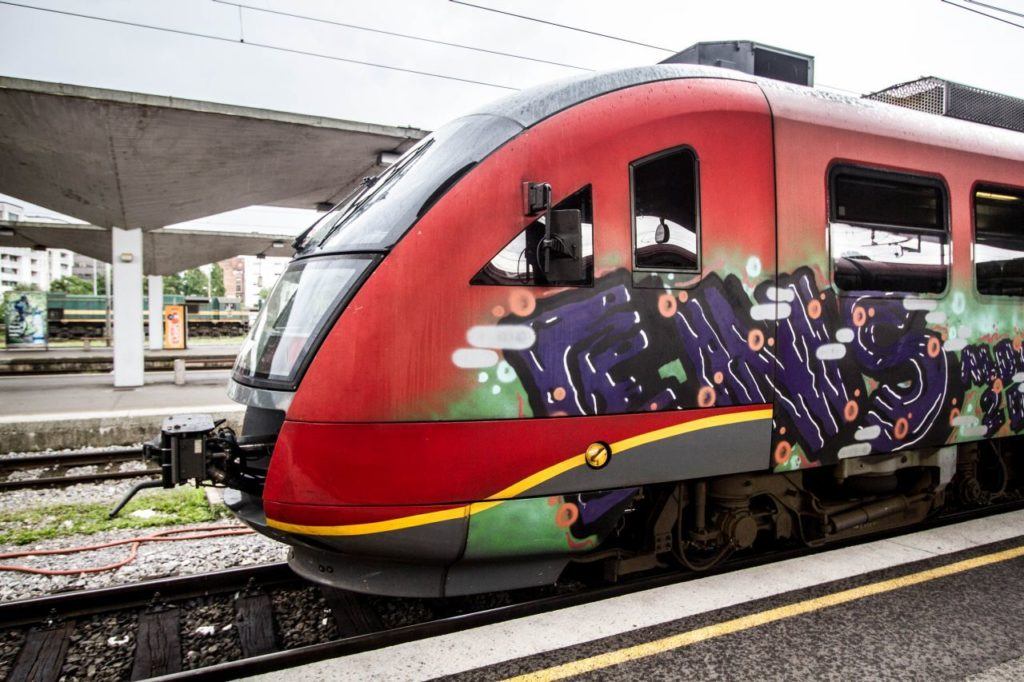
Pocket Earth
Another very useful map app I use all the time is PocketEarth – This is a super good offline map app, but it’s only available on iPhone.
I first found this in Singapore and it was so good there that I’ve been using it everywhere ever since. After installing the app just download the map for the country you’re visiting or just the city. It has a pretty extensive database and does a good job of providing directions. It also shows your location via GPS.
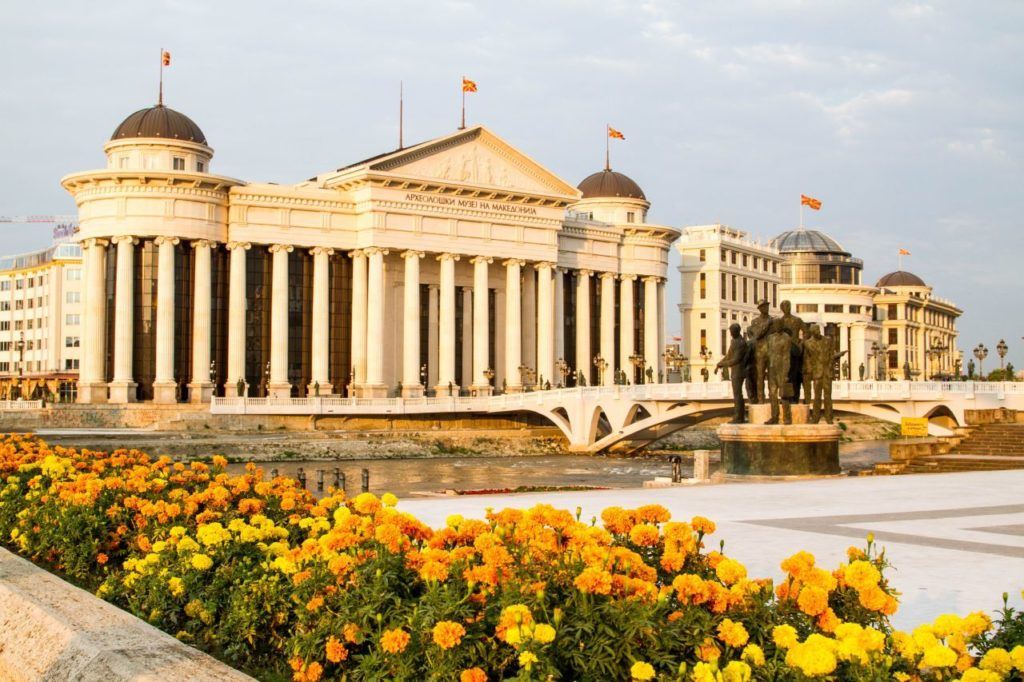
Again, here’s where the phone came in “handy”. There are plenty of apps and websites to help you plan your way through Europe. Some work better than others and some just feel better.
DB Navigator
My favorite app for route planning was the DB Navigator provided by Deutsche Bahn, the German Train company. This app can find a route from nearly any point in Europe to any other point at any time of day or night.
Another really useful feature of this app is that you can use it in map mode to find a station and see all of the possible direct destinations out. This is really useful when you’re being spontaneous and looking for something you hadn’t thought of already.
Eurail/InterRail – Rail Planner
There is also a similar app Eurail/Inter Rail–Rail Planner –and I thought it worked pretty well, but I found the DB app much easier and more accurate. For example, traveling from Thessaloniki to Skopje took 34 hours according to Rail Planner, but DB knew I could get the four and a half hour train direct between the two stations.
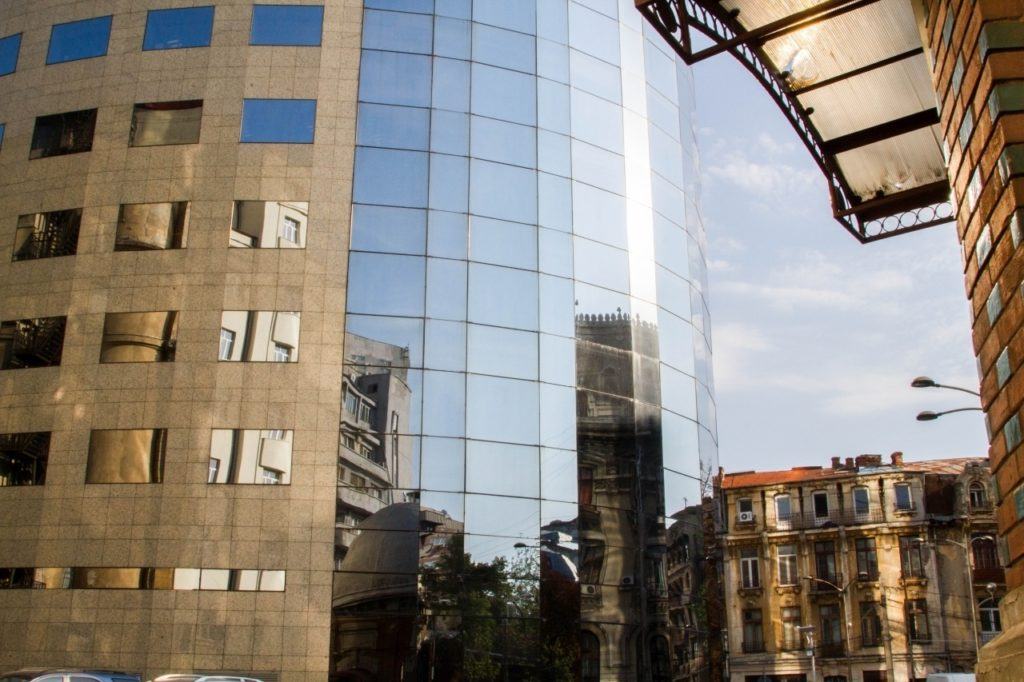
What are Train Stations Like When You do Train Travel in Eastern Europe?
Most of the time, we were able to just climb aboard the train we wanted and show our passes to the conductor. Other times we really did need to go through a ticketing office, to make a firm seat reservation.
Of course, that brings its own worries and frustrations. Like where is the office in the station, what language will they speak, and worse, how long will it take.
When we arrived in Budapest on a very hot and long Saturday in August, the ticketing counter was swamped with tourists, migrants, commuters and everyone was waiting for a number system that didn’t seem to be rolling over very often. Remember, August is the month that many Europeans take a holiday. It was busy!
We needed to get a reservation for our next leg, a sleeper cabin on the overnight train to Sibiu (you can’t just hop aboard these ones). I pulled 472 when the display was showing 391; I didn’t count but I’m pretty sure there were at least 80 other people waiting with number stubs in hand.
I didn’t want to spend my entire stopover in Budapest at the ticket office so I started reading the signs. One of them listed all of the places to get tickets and gave the opening times for those offices. It turned out one of the options was at the business lounge in that same station (Budapest Kaleti).
That was when we discovered our first-class Eurail pass was a magic wand that would allow us entry into the pristine, air-conditioned realm of “business lounge land.”
Here we could relax, use a clean toilet, enjoy a free snack and cold drink, and–most importantly–book our overnight train to Sibiu.
After a short but pleasant break, we left the lounge with our reservation, stopped off at the regular ticket office (serving number 432), and gave our 472 to a dejected-looking man holding number 631. It really made his day!
Power Tip: Look for business lounges in the central stations of major European cities and use your first class Eurail pass to gain entry.
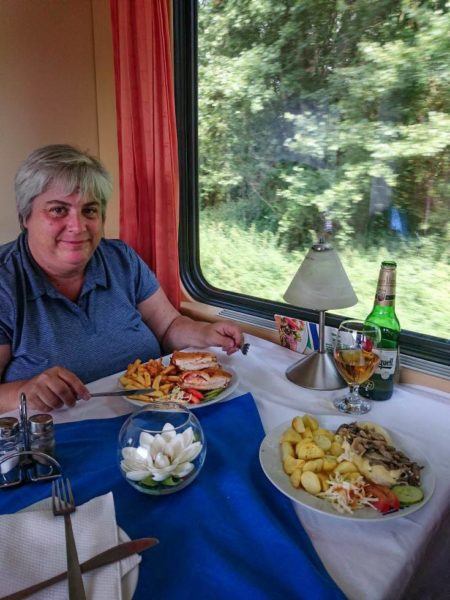
Do You Need Hotel Reservations When Planning an Eastern Europe Itinerary?
The next question…How did you find places to stay without reserving ahead of time while doing this Eastern Europe itinerary?
After we decided where we were heading, out came the phones! With limited data between stations, you need to find a hotel before you get on a train. For the most part, we stopped in larger cities that have many hotels, and Booking.com came through each time. (Below we’ve listed the hotels we stayed in.)
Of course, if you have your itinerary planned out well in advance then you might as well make all your reservations ahead of time.
But, if you’re more spontaneous and drifting along wherever the current pulls you, just make sure to do it before you arrive, especially if it will be at night.
Don’t wait until you arrive to start looking for a hotel! You’ll spend hours walking around a city, dragging your luggage along behind, getting hungrier and thirstier with every failed attempt. There’s nothing worse than being tired and trying to schlepp around and find a hotel aftering doing a bit of train travel in Eastern Europe.
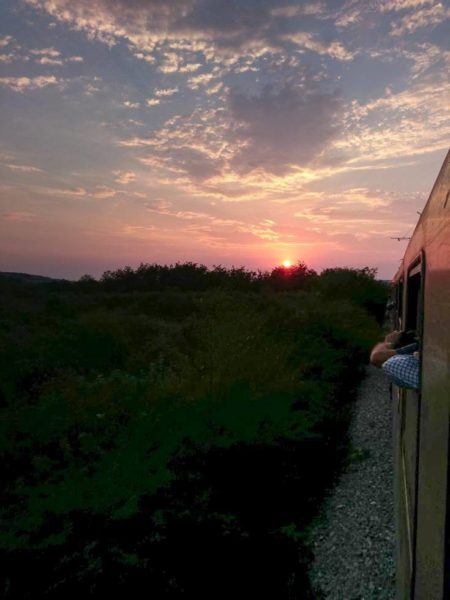
Need to know anything and everything about rail travel in Europe (and probably the entire world)? You will find the answer from the man in seat 61 . This is the definitive source for rail travel how-to, route planning, train information, station information, seat information, wow, you name it if there are steel rails involved he has the info.
This is pretty good website for spit-balling any travel ideas as you train travel Eastern Europe. You can put any to-from points in and get routing information and price estimates on planes, trains, automobiles, taxis, buses, planes, ferries, donkey carts…OK, just kidding about the donkey carts. But I’m sure if someone published the mule train schedule for getting around Petra then Rome2rio would include that too!
If you’re dreaming of your own Eurail journey in the not too distant future, you should definitely check out some or all of the resources we mentioned in this post. Be prepared and stay flexible; allow for spontaneity and adventure!
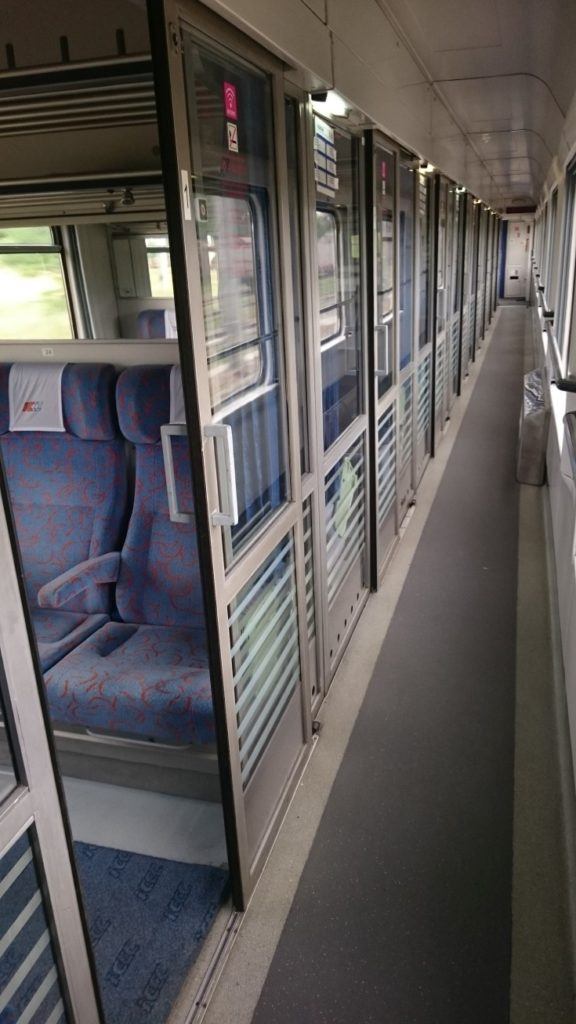
“Anything is possible on a train: a great meal, a binge, a visit from card players, an intrigue, a good night’s sleep, and strangers’ monologues framed like Russian short stories.” – Paul Theroux
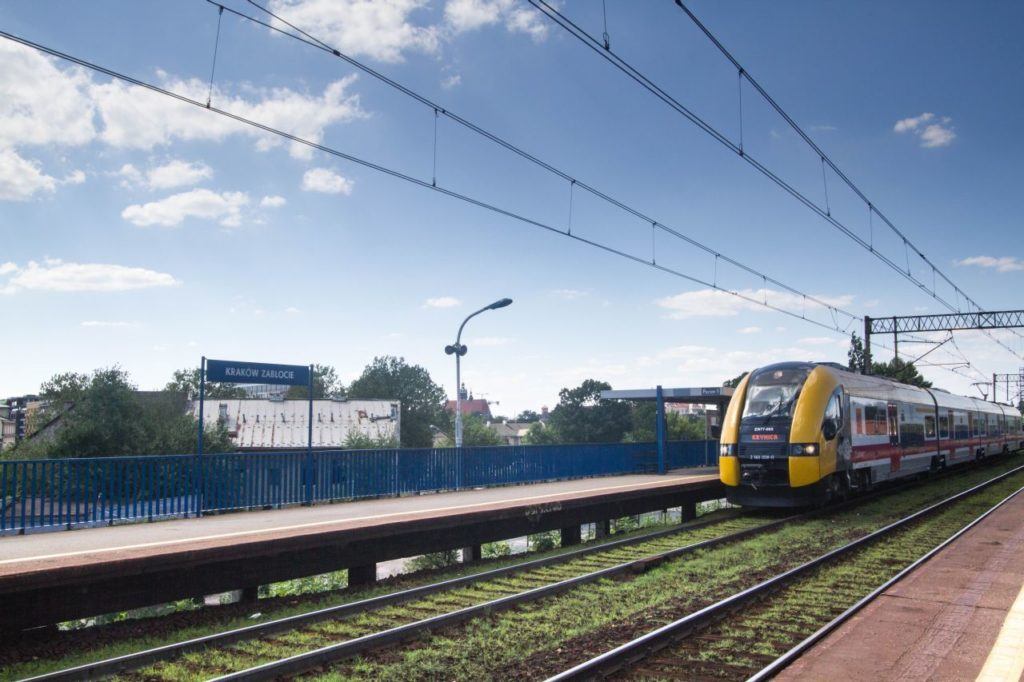
We loved experiencing train travel in Eastern Europe! It was a fun and exciting journey that we think you should try as you plan your very own, Eastern Europe itinerary.

So, be sure to check out the Eastern Europe Rail Pass and enjoy all that this amazing part of the continent has to offer. Also, our epic train trip through Eastern Europe is partially thanks to Eurail who offered us Global Passes to use as we wished. As usual, all thoughts and opinions are solely our own.
Author Bio: Jim Vail , is a travel, food, and video creator and a perpetual traveler who has been travel writing for over 15 years. For many years he lived overseas in Germany, Japan, Turkey, South Korea, and the Netherlands, and he’s visited over 90 countries.
If you enjoyed Eurail through Eastern Europe...
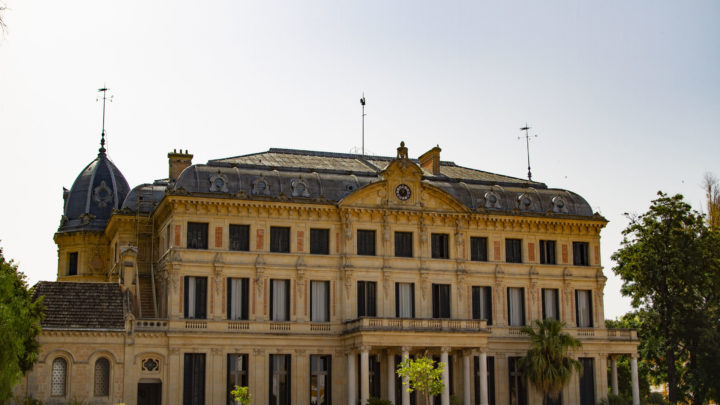
The Sweetest Town in Spain, Jerez de la Frontera!
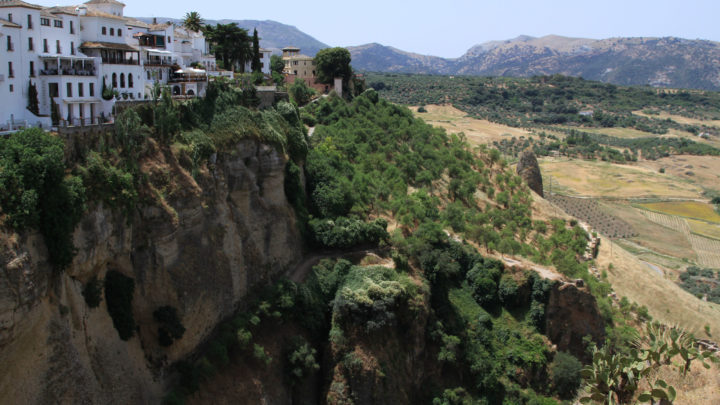
High Up, High on the Mountain - Ronda, Spain
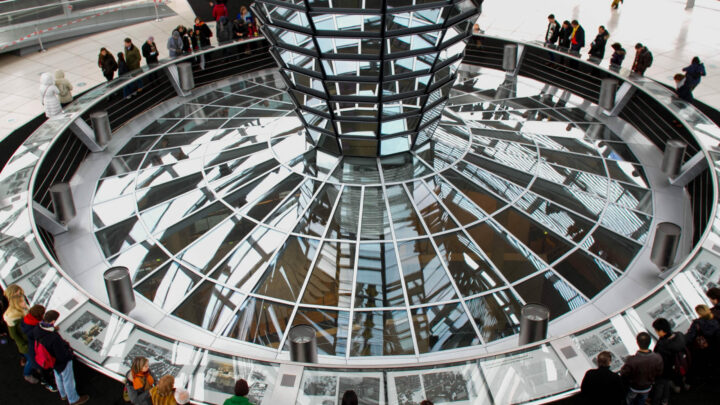
Is the Reichstag Worth Visiting? An Expert's Guide to Reichstag Tours!

The Top Tourist Sights and Places to See in Tokyo
Camel wrestling in selçuk, a travel guide to china.

Hospitality and The French Gîte with Guest Phoebe Thomas

Geoarbitrage and Slow Travel
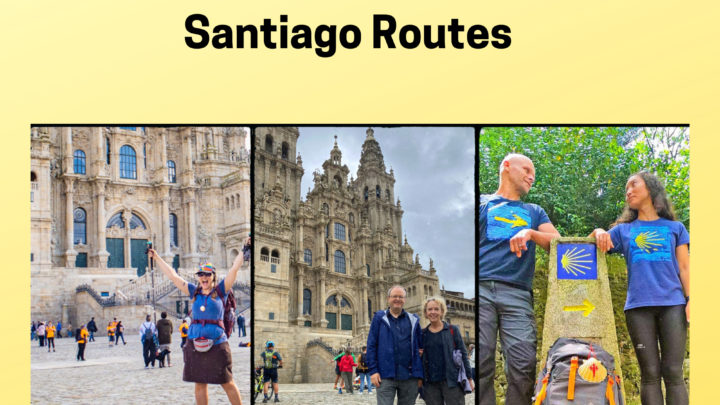
Walking the Camino de Santiago Routes

How to Become a Digital Nomad - Lessons Learned
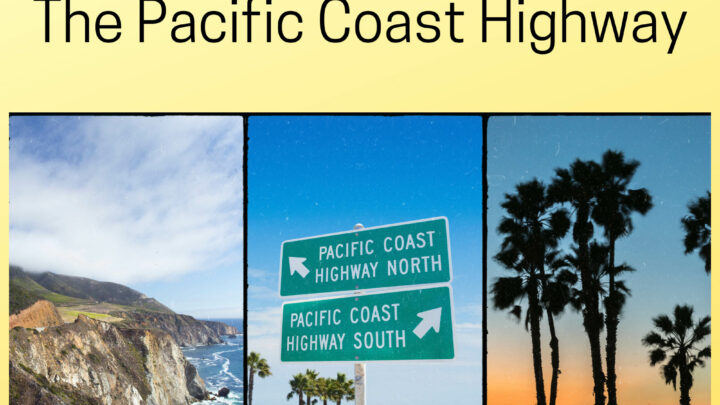
Driving the Pacific Coast Highway from California to Washington

Louisiana Bucket List
Pin Travel By Train In Eastern Europe for later!
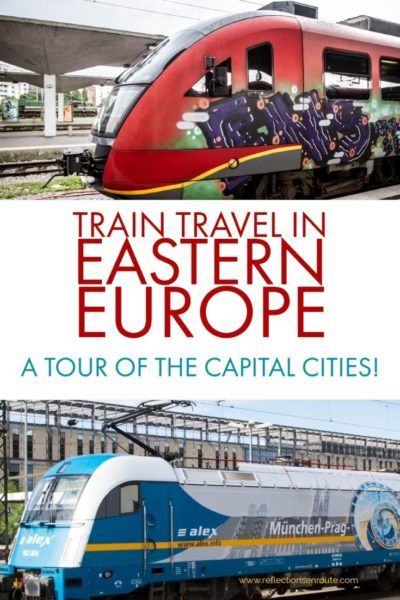
2traveldads
Thursday 16th of February 2017
Such great storytellers, these two. Yes, a Eurail pass is NOT the cheapest or easiest way to get about Europe, but you definitely get some good stories.
Corinne Vail
Rob, That's right. It's a right of passage, and a dream for storytellers!
rhonda albom
Monday 7th of September 2015
Interesting experience. I noticed it was a resourceful Kiwi that found the water and food :) I am with you on not planning way in advance and being flexible.
Rhonda, And that Kiwi made quick friends, let me tell you!
Saturday 5th of September 2015
Interesting experience, Corinne. I am surprised than an international train from Romania had no air conditioning. 27 years ago when we moved out of Romania they still had steam engine trains, but then 2 years ago when we went back and try to travel by train between two cities I was surprised by the long way they have come. The train was very modern, air conditioned and had all the amenities a modern train should have.
Hi Anda, We had the feeling the cars were some of the older and less maintained cars that were constantly moving between the two countries. It was almost as though neither national train company had taken responsibility for their upkeep.
Thursday 3rd of September 2015
Great story, great pictures! Can't wait to read more.
Friday 4th of September 2015
Anabel, We have so much to write about! Our summer was very busy!
Train strikes in May 2024: Full list of dates and lines affected
Rail lines are set for disruption in the week following the first May bank holiday as train drivers at 16 rail companies strike on different days.
Thursday 25 April 2024 10:29, UK

Train drivers will stage a fresh wave of strikes and overtime bans in May, causing disruption to the rail network.
The strikes are part of a long-running dispute over pay.
Members of Aslef union at 16 rail companies will walk out on different days from 7 to 9 May.
Additionally, all members will refuse to work any overtime from 6 May to 11 May.
Here is a full list of the services affected by strikes and when.
Rail strike dates
Tuesday 7 May
Strikes will affect c2c, Greater Anglia, GTR Great Northern Thameslink, Southeastern, Southern, Gatwick Express and South Western Railway.
Wednesday 8 May
Strikes will affect Avanti West Coast, Chiltern Railways, CrossCountry, East Midlands Railway, Great Western Railway and West Midlands Trains.
Thursday 9 May
Strikes will affect LNER, Northern Trains and TransPennine Express.
Overtime ban dates
From Monday 6 May to Saturday 11 May union members will not work overtime.
Overtime bans, an action short of a strike, means some services may not be running or may be reduced as drivers refuse to work their rest days.
People are advised to check before they travel, as some areas may have no service.

Keep up with all the latest news from the UK and around the world by following Sky News
How do strikes and overtime bans affect services?
Strikes tend to mean services on lines where members are participating are extremely affected or cancelled entirely, whereas overtime bans often lead to reduced services.

Are there strikes on the Tube too?
There have been regular strikes on London Underground too recently, and while there aren't any planned walkouts for drivers, customer service managers are set to walk out on Friday 26 April in a dispute over terms and conditions.
There will also be an overtime ban for the customer service managers on the following days:
Monday 29 April
Tuesday 30 April
Wednesday 1 May
Tuesday 2 May
Wednesday 3 May
Thursday 4 May
Friday 5 May
The Transport Salaried Staffs' Association (TSSA) says the action by its members is likely to cause Tube stations to close at the last minute, including on the Saturday following the strike (27 April), while TfL has said on its website "some stations may need to close at short notice".
Despite the warning, a TfL spokesperson has said they aren't expecting significant disruption.
This action follows strike action taken by the same workers on 10 April, which the TSSA said had a "real impact" with "many stations shut at short notice".
They say they are "extremely concerned" about TfL's 'Stations Changes' proposals.
"We have made it clear that our union will not accept the continued threats to our members' roles, locations, terms, and conditions to stand unchallenged," a TSSA spokesperson said.
"We will continue to take sustained action until London Underground is prepared to negotiate with us in good faith."
Commenting on the impending strikes, a TfL spokesperson said: "We are disappointed that TSSA is continuing with this strike action following a consultation process.
"While we don't expect this action will cause significant disruption, we urge TSSA to continue to work with us to help find a resolution.
"There are no planned job losses as part of these vital changes which will improve the service we provide to customers at our stations."
How can I stay in the loop?
You can use the National Rail's journey planner to see when trains are running.
Be sure to check it close to when you plan to travel, as it will be updated regularly.
Be the first to get Breaking News
Install the Sky News app for free

Why are the strikes still happening?
Aslef rejected a two-year offer of 4% in 2022 and another 4% this year, saying it is way below inflation, and is linked to changes in terms and conditions.
Aslef said train drivers have not had an increase in salary for five years, since their last pay deals expired in 2019.
The union said after its members voted overwhelmingly in February to continue taking industrial action, it asked the train operating companies to hold talks.
General secretary Mick Whelan said the year-old pay offer of 4% and another 4% was "dead in the water".
Related Topics
- London Underground
- Rail strikes

IMAGES
VIDEO
COMMENTS
Eastern Europe can be challenging, but it boasts a wealth of attractions and an unbelievably low cost of living, making it a dream destination for the adventurous budget traveler. Highlights include the Baltic countries, Poland, Lviv, The Tatras Mountains, Prague, Budapest, Romania, Belgrade, Dubrovnik and Sofia.
Updated on 09/13/22. Fact checked by. Patrice Williams. Digital Vector Maps. The countries of Eastern Europe cover a large geographic area of the continent. According to the United Nations definition, countries within Eastern Europe are Belarus, Bulgaria, the Czech Republic, Hungary, Moldova, Poland, Romania, Slovakia, Ukraine, and the western ...
Central Balkans Route. This itinerary begins in Budapest and takes you through some south-central European capitals. Budapest - There are few cities better to commence an Eastern European route in than Budapest. For this 2-week itinerary, plan to spend 4-5 days in the Hungarian capital.
Rick's Best Three-Week Eastern-Central Europe Trip. Day 1: Fly into Kraków (sleep in Kraków) Day 2: Kraków (sleep in Kraków) Day 3: Side-trip to Auschwitz (sleep in Kraków) Day 4: Travel to Prague (cheap flight, long train ride, or private driver; sleep in Prague) Day 5: Prague (sleep in Prague) Day 6: Prague (sleep in Prague)
Hungary is a landlocked country in Eastern Europe that contains about 9.6 million people. Like all the countries of Eastern Europe, it was part of the communist eastern bloc during the Cold War. As with other former eastern bloc countries, communism came to an end in Hungary in 1989. The country joined NATO in 1999, and the EU in 2004.
The term Eastern Europe can defined in several different ways; see the understand section below for discussion. ... Overview: Map: Directions: Satellite: Photo Map: Tap on the map to travel: Wikivoyage. Wikipedia. Photo: Kjetil r, CC BY-SA 2.5. Popular Destinations. Russia. Photo: Strokin, CC BY 3.0. Russia is the largest country in the world ...
Best places to travel in Eastern Europe. If you immediately think of Paris, Barcelona and other overwhelmingly popular western destinations when you hear the word "Europe," we're here to make a case for the absolutely stunning cities across Eastern Europe. ️ Many of these spots still fly relatively under the radar, so you could be on the forefront of experiencing the newest hot spots ...
Sustainable Travel. A futuristic station will make Eastern Europe more accessible than ever. Nov 27, 2019 • 1 min read. Zaha Hadid Architects has won an open international contest to design a major new rail terminal in Tallinn, Estonia.
Eastern Europe is a region that encompasses many different cultures, ethnicities, languages, and histories. Grouping all of these countries under a single designation can sometimes be problematic; experts, scholars, and those living there label parts of the region according to varying sets of criteria, and heated debates have been known to erupt when one party has felt that a certain country ...
Eastern Europe regions - Color-coded map — switch to interactive map. Belarus. Sometimes called "Europe's last dictatorship", Belarus is the largest remaining Soviet-style country in the world. Russia. The world's largest country, stretching from the Baltic Sea to the Pacific Ocean. Ukraine.
Getting from one place to another. Begin your 2 weeks in Eastern Europe trip in Greece, and take a flight from Athens to Zagreb that takes 3 hr 50 min to reach Croatia. The best way to get from Croatia to Albania is to fly from Zagreb, which takes 2 hr 39 min. To reach Montenegro, take a nonstop flight from Zagreb to Podgorica for 1 hr 10 min.
Karlovy Vary. #20 in Best Eastern Europe Travel Spots. Less than 80 miles northwest of Prague, Karlovy Vary appeals to anyone looking for a rejuvenating vacation. The Czech Republic's famous spa ...
Eastern Europe by Eurail
You may download, print or use the above map for educational, personal and non-commercial purposes. Attribution is required. For any website, blog, scientific ...
9. Lake Bled. Slovenia's spectacular Lake Bled sits in the Julian Alps in the northwest of the country. This dazzling, mirror-like body of water is backed by tree-covered hills and snow-peaked mountains, for one of the most awe-inspiring natural wonders in Eastern Europe.
This map was created by a user. Learn how to create your own. Eastern Europe. Eastern Europe. Sign in. Open full screen to view more. This map was created by a user. ...
The North. Route: Warsaw — Krutynia River — Vilnius — Riga — Pärnu — Tallinn. Total days: 8. Distance: 1,130 KM. Best time to go: From May to July. Begin this trip in Warsaw, Poland. Warsaw is a large and diverse capital city. There's no one neighborhood to see, so some exploring is required.
3-weeks in The Visegrad Group (Czech Republic - Slovakia - Poland) Eastern Europe itinerary for 3 weeks is not complete with the Visegrad group. The Visegrad Group is another popular route that tourists take when visiting Eastern Europe. The highlight of your trip is filled with castle towns that offer picturesque views with a fascinating ...
Map of Europe with countries and capitals. 3750x2013px / 1.23 Mb Go to Map. Political map of Europe. 3500x1879px / 1.12 Mb Go to Map. ... Map of Eastern Europe. 2000x1503px / 572 Kb Go to Map. Map of Northern Europe. 2500x1276px / 621 Kb Go to Map. Map of Southern Europe. 2038x745px / 459 Kb Go to Map.
Eastern Europe Itinerary. Eastern Europe travel is ideal for people with a curious mind in search of a fascinating Eurail train vacation! Visit Vienna's (Austria) splendid Hofburg Palace, wander around Prague's (Czech Republic) fairytale castle district and relax on Croatia's pristine islands off the coast of Split.
Parking, tolls, and the cost of fuel when renting a car might add up quickly when travelling to Eastern Europe and around. And sometimes being able to rest on a 5-hour train journey is a better option than a 4-hour drive by car. Car rental is another option when travelling to Eastern Europe and around.
It's an interactive map, so start clicking around and planning your trip! Click on the train icons to see the cities of each country, and click on the routes (the lines in between 2 train icons) to see travel times. The green lines represent trains; the blue lines are ferries. Please note that routes may change throughout the year.
Train travel in Eastern Europe afforded us many views of old Soviet train stations. Some had living quarters. ... Most road maps don't do a good job of this and the small maps in most travel books are pretty useless for planning a multi-country trip. There are some good rail maps available for purchase, but we just used the planning map that ...
Train drivers will stage a fresh wave of strikes and overtime bans in May, causing disruption to the rail network. The strikes are part of a long-running dispute over pay. Members of Aslef union ...